|
News Archive: April 1-30; May 1-31; June 1-30; July 1-31; Aug. 1-31; Sept. 1-30; Oct. 1-31; Nov. 1-30; Dec. 1-31 |

|
NASA releases new report on the Columbia tragedy
NASA released a detailed engineering study Tuesday outlining lessons learned about astronaut survival based on an analysis of the 2003 Columbia disaster. The study does not provide any significant new details about the fate of Columbia's crew, but a new timeline shows the pilots attempted to troubleshoot a cascade of problems in the final moments before the spacecraft's computers lost control.
 FULL STORY - updated! FULL STORY - updated!
 DOWNLOAD THE REPORT (.pdf file) DOWNLOAD THE REPORT (.pdf file)
 STS-107 STORY ARCHIVE STS-107 STORY ARCHIVE
 COVERAGE FROM FEBRUARY 1 COVERAGE FROM FEBRUARY 1
 |  |
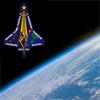
|
 |
Scientists find 'missing' clues to Mars mysteries
Researchers using a powerful instrument aboard NASA's Mars Reconnaissance Orbiter have found a long-sought-after mineral on the Martian surface and, with it, unexpected clues to the Red Planet's watery past.
 FULL STORY FULL STORY
 |  |
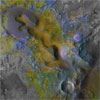
|
 |
OTHER HEADLINES Additional stories today
|
 |
NASA's Kepler spacecraft ready to ship to Florida -- Engineers are getting ready to pack NASA's Kepler spacecraft into a container and ship it off to its launch site at Cape Canaveral. The mission, scheduled to launch on March 5, will seek to answer an age-old question -- are there other Earths in space?

NASA study links severe storm increases, global warming -- The frequency of extremely high clouds in Earth's tropics -- the type associated with severe storms and rainfall -- is increasing as a result of global warming, according to a study by scientists at NASA's Jet Propulsion Laboratory.
|
 |
Russia finishes year by launching three satellites
Three new satellites blasted off from a frigid launch pad in Kazakhstan Thursday, bolstering Russia's space navigation system to help provide continuous coverage over its territory. It marked the final announced space launch of 2008, punctuating the global industry's most successful year since 2000.
 FULL STORY FULL STORY
 OUR LAUNCH LOG OUR LAUNCH LOG
 |  |
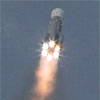
|
 |
NASA calls on commercial firms to serve space station
NASA has awarded contracts to Orbital Sciences and SpaceX to provide commercial delivery of cargo to the international space station after the space shuttle's retirement in 2010. The companies are developing spacecraft and rockets for commercial resupply missions in the post-shuttle era. Orbital received an order for 8 flights valued at $1.9 billion and SpaceX's order includes 12 flights valued at $1.6 billion.
 FULL STORY FULL STORY
 CONTRACT PREVIEW STORY CONTRACT PREVIEW STORY
 |  |
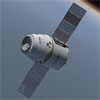
|
 |
China launches for record 11th time in 2008
China launched a new geostationary weather satellite early Tuesday, marking the country's 11th successful space launch of the year and setting a new record for Chinese space activity.
 FULL STORY FULL STORY
 |  |

|
 |
Amid uncertainty, NASA plans for Ares 1-X test flight
As the incoming Obama administration considers whether to accelerate development of the Ares 1 rocket that will replace the space shuttle - or possibly change course and switch to a different system or even extend shuttle operations - NASA is pressing ahead with plans to launch a critical sub-orbital test flight to show off the new rocket and collect valuable engineering data.
 FULL STORY FULL STORY
 STORE: EXPLORATION PATCHES STORE: EXPLORATION PATCHES
 |  |

|
 |
Station crew ventures outside for spacewalk
Space station commander Mike Fincke and flight engineer Yury Lonchakov made a five-hour, 38-minute spacewalk Monday night, lasting from 7:51 p.m. to 1:29 a.m. EST to install an instrument that will measure the electrical environment around the station and to install and remove space exposure experiments. One package could not be hooked up and was brought back inside.
 PREVIEW STORY PREVIEW STORY
 STORE: SPACE STATION PATCHES STORE: SPACE STATION PATCHES
 |  |

|
 |

Additional coverage for subscribers:
 VIDEO:
SPACEWALK PREVIEW BRIEFING PLAY VIDEO:
SPACEWALK PREVIEW BRIEFING PLAY
 MORE:
EXPEDITION 18 VIDEO COVERAGE MORE:
EXPEDITION 18 VIDEO COVERAGE
 SUBSCRIBE NOW SUBSCRIBE NOW

|
Eutelsat's unprecedented launch twice as sweet
One of the world's top commercial satellite operators used a heavy-lift Ariane 5 rocket to successfully get two of its new communications spacecraft into orbit Saturday evening. It was a risky proposition for Eutelsat to entrust a pair of its satellites to just one rocket. Never before had the company put two pricey birds on a single launch.
 FULL STORY FULL STORY
 OUR ARIANE LAUNCH ARCHIVE OUR ARIANE LAUNCH ARCHIVE
 |  |

|
 |
OTHER HEADLINES Additional stories today
|
 |
What came before the Big Bang? -- A question that has been pondered by scientists and philosophers alike could soon be answered, thanks to a mathematical model that explains an anomaly in the early Universe.

Wobbly planets could reveal Earthlike moons -- Instead of looking for potentially habitable planets around stars outside our Solar System, University College London astronomer David Kipping is searching for moons.

Red giants to probe history of Milky Way -- A new project based on the Sloan Digital Sky Survey III will study more than 100,000 Milky Way red giant stars to help understand the formation history of our Galaxy.
|
 |
Solar spacecraft inherits a new launch opportunity
The delay of NASA's next Mars mission will allow an $800 million solar observatory to move out of launch limbo and into an opening in the Atlas 5 rocket's manifest next October.
 FULL STORY FULL STORY
 OUR ATLAS ROCKET ARCHIVE OUR ATLAS ROCKET ARCHIVE
 |  |

|
 |
Jupiter's largest moon caught going to 'dark side'
NASA's Hubble Space Telescope has caught Jupiter's moon Ganymede playing a game of "peek-a-boo." In this crisp Hubble image, Ganymede is shown just before it ducks behind the giant planet.
 FULL STORY FULL STORY
 |  |
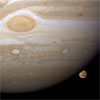
|
 |
Seeing the shape of material around black holes
Black holes can now be thought of as donut holes. The shape of material around black holes has been seen for the first time: an analysis of over 200 active galactic nuclei - cores of galaxies powered by disks of hot material feeding a super-massive black hole - shows that all have a consistent, ordered physical structure that seems to be independent of the black hole's size.
 FULL STORY FULL STORY
 |  |

|
 |
OTHER HEADLINES Additional stories today
|
 |
NASA administrator hails agreement with Ad Astra -- NASA and Ad Astra Rocket Company of Webster, Texas, have signed a Space Act Agreement that could lead to the testing of a new plasma-based space propulsion technology on the International Space Station. The Variable Specific Impulse Magnetoplasma Rocket (VASIMR) engine initially was studied by NASA and is being commercially developed by Ad Astra.

Astronomers find most distant water in the Universe -- Astronomers have found the most distant water yet seen in the Universe, in a galaxy more than 11 billion light-years from Earth. Previously, the most distant water had been seen in a galaxy less than 7 billion light-years from Earth.

Looking for extraterrestrial life in all the right places -- Scientists are expanding the search for extraterrestrial life -- and they've set their sights on some very unearthly planets. Cold "Super-Earths" that are giant, "snowball" planets astronomers have spied on the outskirts of faraway solar systems could potentially support some kind of life, they have found.
|
 |
Planets living on the edge
Some stars have it tough when it comes to raising planets. A new image from NASA's Spitzer Space Telescope shows one unlucky lot of stars, born into a dangerous neighborhood. The stars themselves are safe, but the material surrounding them -- the dusty bits of what might have been future planets -- can be seen blowing off into space.
 FULL STORY FULL STORY
 |  |

|
 |
OTHER HEADLINES Additional stories today
|
 |
Dark energy found stifling growth in universe -- For the first time, astronomers have clearly seen the effects of "dark energy" on the most massive collapsed objects in the universe using NASA's Chandra X-ray Observatory. By tracking how dark energy has stifled the growth of galaxy clusters and combining this with previous studies, scientists have obtained the best clues yet about what dark energy is and what the destiny of the universe could be.

Rock varnish: A promising habitat for Martian bacteria -- As scientists search for life on Mars, they should take a close look at rock varnish. A new study suggests that rock varnish could provide a niche habitat for microbial life on Mars and in other extraterrestrial environments devoid of liquid water.

New oceanography mission data now available -- Oceanography data that will help scientists around the world better understand climate change are now available. The data come from the Ocean Surface Topography Mission, also known as OSTM/Jason-2, a spacecraft developed jointly by NASA and the French space agency.
|
 |
Dynamic moon Enceladus shows more signs of activity
The closer scientists look at Saturn's small moon Enceladus, the more they find evidence of an active world. The most recent flybys of Enceladus made by NASA's Cassini spacecraft have provided new signs of ongoing changes on and around the moon. The latest high-resolution images of Enceladus show signs that the south polar surface changes over time.
 FULL STORY FULL STORY
 |  |
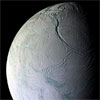
|
 |
OTHER HEADLINES Additional stories today
|
 |
Titan's volcanoes give NASA spacecraft chilly reception -- Data collected during several recent flybys of Titan by NASA's Cassini spacecraft have put another arrow in the quiver of scientists who think the Saturnian moon contains active cryovolcanoes spewing a super-chilled liquid into its atmosphere.

Phoenix site on Mars may be in dry climate cycle phase -- The Martian arctic soil that NASA's Phoenix Mars Lander dug into this year is very cold and very dry. However, when long-term climate cycles make the site warmer, the soil may get moist enough to modify the chemistry, producing effects that persist through the colder times.

Stennis Space Center to test rocket engine for Taurus 2 -- NASA's Stennis Space Center will provide propulsion system acceptance testing for the Taurus 2 space launch vehicle, which Orbital Sciences is developing.

SBIRS HEO surveillance system achieves certification -- The first Space Based Infrared System (SBIRS) Highly Elliptical Orbit (HEO-1) payload and ground system, built by a Lockheed Martin team, has been certified for operations by U.S. Strategic Command.
|
 |
Hubble finds carbon dioxide on an extrasolar planet
NASA's Hubble Space Telescope has discovered carbon dioxide in the atmosphere of a planet orbiting another star. This is an important step along the trail of finding the chemical biotracers of extraterrestrial life as we know it.
 FULL STORY FULL STORY
 |  |
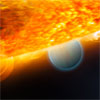
|
 |
OTHER HEADLINES Additional stories today
|
 |
China launches another Earth-observing satellite -- China launched a secretive Earth observation satellite early Monday for land surveys and disaster monitoring, according to state media reports.

Ball completes environmental testing for Kepler mission -- Ball Aerospace & Technologies Corp. has successfully completed a series of rigorous environmental and operational tests for NASA's Kepler mission to verify seamless operation of the system level hardware and software.

Oscillation rules as the Pacific Ocean cools -- The latest image of sea-surface height measurements from the U.S./French Jason-1 oceanography satellite shows the Pacific Ocean remains locked in a strong, cool phase of the Pacific Decadal Oscillation, a large, long-lived pattern of climate variability in the Pacific associated with a general cooling of Pacific waters.
|
 |
Study tracks stars orbiting Milky Way black hole
In a 16-year long study, a team of German astronomers has produced the most detailed view ever of the surroundings of the monster lurking at our Galaxy's heart - a supermassive black hole. The research has unravelled the hidden secrets of this tumultuous region by mapping the orbits of almost 30 stars, a five-fold increase over previous studies. One of the stars has now completed a full orbit around the black hole.
 FULL STORY FULL STORY
 |  |
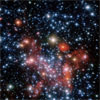
|
 |
OTHER HEADLINES Additional stories today
|
 |
Astronomers dissect a supermassive black hole -- Combining a double natural "magnifying glass" with the power of ESO's Very Large Telescope, astronomers have scrutinised the inner parts of the disc around a supermassive black hole 10 billion light-years away. They were able to study the disc with a level of detail a thousand times better than that of the best telescopes in the world, providing the first observational confirmation of the prevalent theoretical models of such discs.

Students discover planet -- Three undergraduate students from Leiden University have discovered the first extrasolar planet orbiting a fast-rotating hot star.
|
 |
Endeavour's ferryflight delivers shuttle back home
Space shuttle Endeavour safely concluded its cross-country trek atop a Boeing 747 carrier jet Friday, flying from an overnight stopping point at Barksdale Air Force Base in Louisiana and returning home to the Kennedy Space Center in Florida.
 MISSION STATUS CENTER - live updates! MISSION STATUS CENTER - live updates!
 IMAGES: MORE FROM KENNEDY SPACE CENTER IMAGES: MORE FROM KENNEDY SPACE CENTER
 IMAGES: FERRYFLIGHT ARRIVES AT KENNEDY SPACE CENTER IMAGES: FERRYFLIGHT ARRIVES AT KENNEDY SPACE CENTER
 IMAGES: FERRYFLIGHT LEAVES FORT WORTH IMAGES: FERRYFLIGHT LEAVES FORT WORTH
 IMAGES: FERRYFLIGHT ARRIVES IN FORT WORTH IMAGES: FERRYFLIGHT ARRIVES IN FORT WORTH
 IMAGES: FERRYFLIGHT LEAVES CALIFORNIA IMAGES: FERRYFLIGHT LEAVES CALIFORNIA
 PREVIEW STORY PREVIEW STORY
 OUR STS-126 COVERAGE OUR STS-126 COVERAGE
 STORE: ENDEAVOUR CREW PATCH STORE: ENDEAVOUR CREW PATCH
 |  |
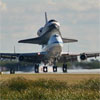
|
 |

Additional coverage for subscribers:
 VIDEO:
FERRYFLIGHT LANDS AT KENNEDY SPACE CENTER PLAY VIDEO:
FERRYFLIGHT LANDS AT KENNEDY SPACE CENTER PLAY
 VIDEO:
ALTERNATE VIEWS OF THE FERRYFLIGHT ARRIVAL PLAY VIDEO:
ALTERNATE VIEWS OF THE FERRYFLIGHT ARRIVAL PLAY
 VIDEO:
SHUTTLE CARRIER AIRCRAFT TOWED OFF RUNWAY PLAY VIDEO:
SHUTTLE CARRIER AIRCRAFT TOWED OFF RUNWAY PLAY
 VIDEO:
ENDEAVOUR RETURNS TO ITS HANGAR PLAY VIDEO:
ENDEAVOUR RETURNS TO ITS HANGAR PLAY

 VIDEO:
CARRIER AIRCRAFT HEADS TO RUNWAY 04 PLAY VIDEO:
CARRIER AIRCRAFT HEADS TO RUNWAY 04 PLAY
 VIDEO:
SHUTTLE'S FERRYFLIGHT TAKES OFF FROM CALIFORNIA PLAY VIDEO:
SHUTTLE'S FERRYFLIGHT TAKES OFF FROM CALIFORNIA PLAY
 VIDEO:
AERIAL VIEWS FROM CHASE PLANE PLAY VIDEO:
AERIAL VIEWS FROM CHASE PLANE PLAY
 MORE:
STS-126 VIDEO COVERAGE MORE:
STS-126 VIDEO COVERAGE
 SUBSCRIBE NOW SUBSCRIBE NOW

|
NASA's Swift looks to comets for a cool view
NASA's Swift Gamma-ray Explorer satellite rocketed into space in 2004 on a mission to study some of the highest-energy events in the universe. The spacecraft has detected more than 380 gamma-ray bursts, fleeting flares that likely signal the birth of a black hole in the distant universe. In that time, Swift also has observed 80 exploding stars and studied six comets.
 FULL STORY FULL STORY
 |  |
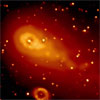
|
 |
OTHER HEADLINES Additional stories today
|
 |
Predicted planet seen -- In 2006, astronomer Alice Quillen of the University of Rochester predicted that a planet of a particular size and orbit must lie within the dust of a nearby star. That planet has now been photographed by the Hubble Space Telescope, making it only the second planet ever imaged after an accurate prediction. The only other planet seen after an accurate prediction was Neptune, discovered more than 160 years ago.
|
 |
Mars orbiter completes prime mission
NASA's Mars Reconnaissance Orbiter has completed its primary, two-year science phase. The spacecraft has found signs of a complex Martian history of climate change that produced a diversity of past watery environments.
 FULL STORY FULL STORY
 |  |
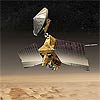
|
 |
OTHER HEADLINES Additional stories today
|
 |
Camera measures size of a planet orbiting a distant star -- A team of astronomers led by John Johnson of the University of Hawaii's Institute for Astronomy has used a new technique to measure the precise size of a planet around a distant star. They used a camera so sensitive that it could detect the passage of a moth in front of a lit window from a distance of 1,000 miles.

James Webb Telescope mirrors chill out -- The first of 18 mirror segments that will fly on NASA's James Webb Space Telescope arrived this week at the Marshall Space Flight Center, Huntsville, Ala. to prepare it to meet the extreme temperatures it will encounter in space.
|
 |
Astronomers find the two dimmest stellar bulbs
It's a tie! The new record-holder for dimmest known star-like object in the universe goes to twin "failed" stars, or brown dwarfs, each of which shines feebly with only one millionth the light of our sun.
 FULL STORY FULL STORY
 |  |

|
 |
Proton rocket puts payload into space for Canada
The first new commercial spacecraft for an up-and-coming Canadian satellite operator successfully ascended into orbit around the planet Wednesday atop a Russian rocket. The Proton booster blasted off at 8:43 a.m. EST from the Baikonur Cosmodrome in Kazakhstan carrying the Ciel 2 spacecraft. It took about nine hours and five firings by the Breeze M upper stage to haul the 12,260-pound satellite into geosynchronous transfer orbit. The craft's anchor customer will be the DISH Network television broadcast service.
 |  |
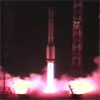
|
 |
Launch of Delta 4-Heavy rescheduled for January
Efforts to troubleshoot and resolve an issue with the top-secret national security satellite to be carried aloft by a Delta 4-Heavy rocket has slipped the launch into the New Year.
 FULL STORY FULL STORY
 |  |
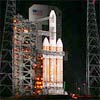
|
 |
Rivers of gas flow around stars in new space image
A new image from NASA's Spitzer Space Telescope shows a turbulent star-forming region, where rivers of gas and stellar winds are eroding thickets of dusty material. The picture provides some of the best examples yet of the ripples of gas that can form around stars in choppy cosmic waters.
 FULL STORY FULL STORY
 |  |
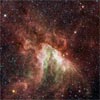
|
 |
OTHER HEADLINES Additional stories today
|
 |
Moon mission gets green light -- The UK-led MoonLITE mission that will see penetrator darts embedded into the lunar surface has been given the go ahead by the government to enter into an in-depth
"Phase-A" study.

Brown dwarfs do form like stars -- Astronomers have uncovered strong evidence that brown dwarfs - the dividing line between stars and planets - form like stars.
|
 |
U.S. and Europe join forces for future Mars missions
NASA and the European Space Agency have agreed on a strategic partnership for future robotic missions to explore Mars. The partnership will help the agencies share mounting costs and responsibilities for future missions.
 FULL STORY FULL STORY
 |  |
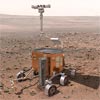
|
 |
Orbiter finds Martian rock holding a rhythmic record
Climate cycles persisting for millions of years on ancient Mars left a record of rhythmic patterns in thick stacks of sedimentary rock layers, revealed in three-dimensional detail by a telescopic camera on NASA's Mars Reconnaissance Orbiter.
 FULL STORY FULL STORY
 |  |

|
 |
OTHER HEADLINES Additional stories today
|
 |
Rocket motor test helps NASA's shuttle and Ares 1 -- NASA's Space Shuttle Program on Thursday successfully conducted a test firing of a space shuttle reusable solid rocket motor in Utah. The more than seven-year-old, four-segment motor tested is the oldest ever fired.

NASA assigns crews for future space shuttle missions -- NASA has assigned the crews for space shuttle flights STS-130 and STS-131. The STS-130 mission will deliver a third connecting module to the International Space Station and a seven-windowed cupola to be used as a control room for robotics. The STS-131 mission will deliver research and science experiment equipment, a new sleeping area and supplies to the station in a logistics module carried in the shuttle's payload bay.
|
 |
NASA delays Mars Science Laboratory launch to 2011
Launch of NASA's showcase Mars Science Laboratory, a nuclear-powered rover the size of a small car, will be delayed from 2009 to 2011 because of ongoing development problems, agency officials said Thursday. The cost of the delay through end of mission will add some $400 million to the project's price tag, pushing the projected cost from $1.88 billion to around $2.2 billion.
 FULL STORY FULL STORY
 NASA STATEMENT NASA STATEMENT
 |  |

|
 |

Additional coverage for subscribers:
 VIDEO:
MARS SCIENCE LAB DELAY ANNOUNCEMENT BRIEFING PLAY VIDEO:
MARS SCIENCE LAB DELAY ANNOUNCEMENT BRIEFING PLAY
 SUBSCRIBE NOW SUBSCRIBE NOW

|
Supernova time travel to a 16th century explosion
When a person looks up into the nighttime sky, they see stars, planets, and galaxies across a sea of darkness. The movements of planets and seasonal variations to the constellations have been relatively the same for thousands of years. What if the sky changed overnight and a new star brighter than anything else appeared? Would it be noticed if it happened in the 16th century?
 FULL STORY FULL STORY
 |  |
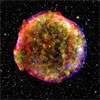
|
 |
OTHER HEADLINES Additional stories today
|
 |
A new class of comets -- Comet 96P/Machholz 1 shows extremely anomalous compositional characteristics helping pinpoint its origin to one of three intriguing scenarios.

Cosmic ray influx -- Research conducted at the Milagro observatory has uncovered two nearby regions in space that exhibit unusually high readings of cosmic rays.
|
 |
Jets on Enceladus: Are they wet or just wild?
Scientists continue to search for the cause of the geysers on Saturn's moon Enceladus. The geysers are visible as a large plume of water vapor and ice particles escaping the moon. Inside the plume are jets of dust and gas. What causes and controls the jets is a mystery. The Cassini spacecraft continues to collect new data to look for clues.
 FULL STORY FULL STORY
 |  |
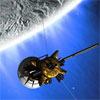
|
 |
OTHER HEADLINES Additional stories today
|
 |
SpaceX adds two DragonLab missions to manifest -- SpaceX announces the addition of two DragonLab missions to its manifest, as a result of demand from a successful workshop held to introduce the new product. The first two flights are scheduled for 2010 and 2011 respectively from the SpaceX Falcon 9 launch site at Complex 40, Cape Canaveral, Florida.

NASA selects contractor for next GOES series spacecraft -- NASA, in coordination with the National Oceanic and Atmospheric Administration, has selected the contractor for the next series of weather satellites. Lockheed Martin Space Systems Company of Denver was selected to build the satellites for NOAA's Geostationary Operational Environmental Satellites, or GOES-R, Program.
|
 |
NASA finishes listening for Phoenix lander on Mars
After nearly a month of daily checks to determine whether Martian NASA's Phoenix Mars Lander would be able to communicate again, the agency has stopped using its Mars orbiters to hail the lander and listen for its beep.
 FULL STORY FULL STORY
 |  |
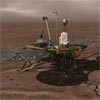
|
 |
OTHER HEADLINES Additional stories today
|
 |
Russians deploy new military spacecraft into orbit -- Russia launched a military reconnaissance satellite Tuesday morning into an elliptical high-altitude orbit from the country's northern space base, according to news reports.

Chinese launch another Earth-observing satellite -- China launched a new remote sensing satellite early Monday for a variety of civilian applications, according to state media reports. The Yaogan 4 satellite was launched aboard a Long March 2D rocket.
|
 |
Weather detour leads shuttle to California landing
The space shuttle Endeavour dropped out of a cloudless blue sky and settled to a tire-smoking touchdown at California's Edwards Air Force Base on Sunday afternoon to wrap up another 16-day space station assembly and maintenance mission. Poor weather at Florida's Kennedy Space Center caused NASA to divert the shuttle to the backup landing site.
 FULL STORY FULL STORY
 MISSION STATUS CENTER - live updates! MISSION STATUS CENTER - live updates!
 IMAGES: LANDING PHOTO GALLERY IMAGES: LANDING PHOTO GALLERY
 CALIFORNIA LANDING ORDERED CALIFORNIA LANDING ORDERED
 LANDING DELAYED AN ORBIT LANDING DELAYED AN ORBIT
 MORNING UPDATE STORY MORNING UPDATE STORY
 CARGO SHIP DOCKING REPORT CARGO SHIP DOCKING REPORT
 LANDING INFORMATION PAGE LANDING INFORMATION PAGE
 MAPS: KSC AND EAFB LANDING TRACKS MAPS: KSC AND EAFB LANDING TRACKS
 NASA TV SCHEDULE REV. P (.pdf download) NASA TV SCHEDULE REV. P (.pdf download)
 STS-126 FLIGHT PLAN STS-126 FLIGHT PLAN
 HIGH DEFINITION VIDEO HIGH DEFINITION VIDEO
 STORE: ENDEAVOUR CREW PATCH STORE: ENDEAVOUR CREW PATCH
 |  |
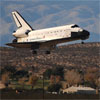
|
 |

Additional coverage for subscribers:
 VIDEO:
ENDEAVOUR LANDS AT EDWARDS AIR FORCE BASE PLAY VIDEO:
ENDEAVOUR LANDS AT EDWARDS AIR FORCE BASE PLAY
 VIDEO:
LANDING REPLAY: CAMERA 1 PLAY VIDEO:
LANDING REPLAY: CAMERA 1 PLAY
 VIDEO:
LANDING REPLAY: CAMERA 2 PLAY VIDEO:
LANDING REPLAY: CAMERA 2 PLAY
 VIDEO:
LANDING REPLAY: CAMERA 3 PLAY VIDEO:
LANDING REPLAY: CAMERA 3 PLAY
 VIDEO:
LANDING REPLAY: CAMERA 4 PLAY VIDEO:
LANDING REPLAY: CAMERA 4 PLAY
 VIDEO:
LANDING REPLAY: CAMERA LOOKING OUT PILOT'S WINDOW PLAY VIDEO:
LANDING REPLAY: CAMERA LOOKING OUT PILOT'S WINDOW PLAY
 VIDEO:
BEHIND THE SCENES IN MISSION CONTROL PLAY VIDEO:
BEHIND THE SCENES IN MISSION CONTROL PLAY
 VIDEO:
ASTRONAUTS SURVEY SHUTTLE ON RUNWAY PLAY VIDEO:
ASTRONAUTS SURVEY SHUTTLE ON RUNWAY PLAY
 VIDEO:
POST-FLIGHT COMMENTS FROM THE COMMANDER PLAY VIDEO:
POST-FLIGHT COMMENTS FROM THE COMMANDER PLAY

 VIDEO:
WEATHER RECONNAISSANCE AIRCRAFT FLIES AT EAFB PLAY VIDEO:
WEATHER RECONNAISSANCE AIRCRAFT FLIES AT EAFB PLAY
 VIDEO:
DECISION MADE TO LAND IN CALIFORNIA PLAY VIDEO:
DECISION MADE TO LAND IN CALIFORNIA PLAY
 VIDEO:
SECOND FLORIDA OPPORTUNITY WAVED OFF PLAY VIDEO:
SECOND FLORIDA OPPORTUNITY WAVED OFF PLAY
 VIDEO:
LANDING DELAYED AT LEAST ONE ORBIT PLAY VIDEO:
LANDING DELAYED AT LEAST ONE ORBIT PLAY
 VIDEO:
PROGRESS CARGO SHIP DOCKS TO SPACE STATION PLAY VIDEO:
PROGRESS CARGO SHIP DOCKS TO SPACE STATION PLAY
 VIDEO:
FLIGHT DAY 16 HIGHLIGHTS MOVIE PLAY VIDEO:
FLIGHT DAY 16 HIGHLIGHTS MOVIE PLAY
 MORE:
STS-126 VIDEO COVERAGE MORE:
STS-126 VIDEO COVERAGE
 SUBSCRIBE NOW SUBSCRIBE NOW

|
New simulation gives Jupiter double-sized core
New computer simulations, conducted at the scale of individual atoms, say Jupiter has a rocky core surrounded by ice that is more than twice as large as previously thought.
 FULL STORY FULL STORY
 |  |

|
 |
Milky Way's mammoth stars resolved by Hubble
Two of our Galaxy's most massive stars have been scrutinised by the Hubble Space Telescope to reveal a third component of the system.
 FULL STORY FULL STORY
 |  |

|
 |
When and where will shuttle Endeavour land?
Entry Flight Director Bryan Lunney hopes the Florida weather will cooperate and permit the Endeavour astronauts to land Sunday at the Kennedy Space Center. But if predicted high crosswinds and thunderstorms develop, and if Monday's forecast promises little improvement, he'll divert the crew to Edwards Air Force Base in California's Mojave Desert.
 FULL STORY FULL STORY
 HEAT SHIELD CLEARED HEAT SHIELD CLEARED
 MORNING WAKEUP STORY MORNING WAKEUP STORY
 |  |
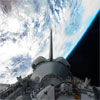
|
 |

Additional coverage for subscribers:
 VIDEO:
PICOSAT LAUNCHED FROM ENDEAVOUR PLAY VIDEO:
PICOSAT LAUNCHED FROM ENDEAVOUR PLAY
 VIDEO:
PRE-LANDING MISSION STATUS BRIEFING PLAY VIDEO:
PRE-LANDING MISSION STATUS BRIEFING PLAY
 VIDEO:
SATURDAY'S MISSION MANAGEMENT TEAM UPDATE PLAY VIDEO:
SATURDAY'S MISSION MANAGEMENT TEAM UPDATE PLAY
 VIDEO:
CNN, SAN FRANCISCO, PORTLAND INTERVIEWS WITH CREW PLAY VIDEO:
CNN, SAN FRANCISCO, PORTLAND INTERVIEWS WITH CREW PLAY
 VIDEO:
PRE-LANDING TESTS OF SHUTTLE'S FLIGHT CONTROLS PLAY VIDEO:
PRE-LANDING TESTS OF SHUTTLE'S FLIGHT CONTROLS PLAY
 VIDEO:
ASTRONAUTS STOW SHUTTLE ENDEAVOUR'S ROBOT ARM PLAY VIDEO:
ASTRONAUTS STOW SHUTTLE ENDEAVOUR'S ROBOT ARM PLAY
 VIDEO:
UNDOCKING REPLAY AS SEEN FROM PAYLOAD BAY PLAY VIDEO:
UNDOCKING REPLAY AS SEEN FROM PAYLOAD BAY PLAY
 VIDEO:
FLIGHT DIRECTOR'S SUMMARY OF FLIGHT DAY 16 PLAY VIDEO:
FLIGHT DIRECTOR'S SUMMARY OF FLIGHT DAY 16 PLAY
 VIDEO:
FLIGHT DAY 15 HIGHLIGHTS MOVIE PLAY VIDEO:
FLIGHT DAY 15 HIGHLIGHTS MOVIE PLAY
 MORE:
STS-126 VIDEO COVERAGE MORE:
STS-126 VIDEO COVERAGE
 SUBSCRIBE NOW SUBSCRIBE NOW

|
Shuttle departs station to prepare for landing
Space shuttle Endeavour undocked from the international space station Friday morning, capping a 12-day visit that delivered the equipment needed to enlarge the outpost's crew size. The astronauts spent the afternoon performing a final round of heat shield inspections. The shuttle is scheduled for landing on Sunday, weather permitting.
 INSPECTIONS COMPLETED INSPECTIONS COMPLETED
 UNDOCKING STORY UNDOCKING STORY
 MORNING WAKEUP STORY MORNING WAKEUP STORY
 NASA TV SCHEDULE REV. N (.pdf download) NASA TV SCHEDULE REV. N (.pdf download)
 NASA TV SCHEDULE REV. O (.pdf download) NASA TV SCHEDULE REV. O (.pdf download)
 |  |

|
 |

Additional coverage for subscribers:
 VIDEO:
FRIDAY'S MISSION STATUS BRIEFING PLAY VIDEO:
FRIDAY'S MISSION STATUS BRIEFING PLAY
 VIDEO:
ORBITER WINGS AND NOSE CAP INSPECTED PLAY VIDEO:
ORBITER WINGS AND NOSE CAP INSPECTED PLAY
 VIDEO:
VIEWS OF THE SHUTTLE DURING FLYAROUND PLAY VIDEO:
VIEWS OF THE SHUTTLE DURING FLYAROUND PLAY
 VIDEO:
ENDEAVOUR UNDOCKS FROM THE STATION PLAY VIDEO:
ENDEAVOUR UNDOCKS FROM THE STATION PLAY
 VIDEO:
PREVIEW ANIMATION OF UNDOCKING AN FLYAROUND PLAY VIDEO:
PREVIEW ANIMATION OF UNDOCKING AN FLYAROUND PLAY
 VIDEO:
FLIGHT DAY 14 HIGHLIGHTS MOVIE PLAY VIDEO:
FLIGHT DAY 14 HIGHLIGHTS MOVIE PLAY
 MORE:
STS-126 VIDEO COVERAGE MORE:
STS-126 VIDEO COVERAGE
 SUBSCRIBE NOW SUBSCRIBE NOW

|
Thanksgiving in space
Celebrating Thanksgiving in space, the crews of the international space station and the shuttle Endeavour enjoyed a half-day off and shared a turkey dinner in orbit before saying farewell and closing hatches between the two spacecraft to set the stage for undocking Friday.
 FAREWELL CEREMONY HELD FAREWELL CEREMONY HELD
 GREETINGS AND TOASTS FROM CREW GREETINGS AND TOASTS FROM CREW
 MORNING WAKEUP STORY MORNING WAKEUP STORY
 NASA TV SCHEDULE REV. M (.pdf download) NASA TV SCHEDULE REV. M (.pdf download)
 |  |
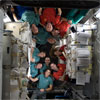
|
 |

Additional coverage for subscribers:
 VIDEO:
FAREWELL CEREMONY BETWEEN THE TWO CREWS PLAY VIDEO:
FAREWELL CEREMONY BETWEEN THE TWO CREWS PLAY
 VIDEO:
STUNNING VIEW OF SOUTH AND CENTRAL FLORIDA PLAY VIDEO:
STUNNING VIEW OF SOUTH AND CENTRAL FLORIDA PLAY
 VIDEO:
THANKSGIVING CELEBRATION IN MISSION CONTROL PLAY VIDEO:
THANKSGIVING CELEBRATION IN MISSION CONTROL PLAY
 VIDEO:
THANKSGIVING DAY MESSAGE FROM SHUTTLE CREW PLAY VIDEO:
THANKSGIVING DAY MESSAGE FROM SHUTTLE CREW PLAY
 VIDEO:
PHILLY, SPACE.COM, PORTLAND INTERVIEWS WITH CREW PLAY VIDEO:
PHILLY, SPACE.COM, PORTLAND INTERVIEWS WITH CREW PLAY
 VIDEO:
DON PETTIT TOASTS WITH HANDMADE CUPS PLAY VIDEO:
DON PETTIT TOASTS WITH HANDMADE CUPS PLAY
 VIDEO:
THURSDAY MORNING FLIGHT DIRECTOR INTERVIEW PLAY VIDEO:
THURSDAY MORNING FLIGHT DIRECTOR INTERVIEW PLAY
 VIDEO:
FLIGHT DAY 13 HIGHLIGHTS MOVIE PLAY VIDEO:
FLIGHT DAY 13 HIGHLIGHTS MOVIE PLAY
 MORE:
STS-126 VIDEO COVERAGE MORE:
STS-126 VIDEO COVERAGE
 SUBSCRIBE NOW SUBSCRIBE NOW

|
Leonardo returns to shuttle; Progress glitch fixed
An unmanned Russian Progress supply ship was launched Wednesday, bound for a docking with the international space station Sunday. An antenna that is part of the vehicle's automated docking system initially failed to deploy, but later efforts got the antenna out. Aboard the station, the astronauts closed the Leonardo cargo module and, using the station's robot arm, moved it back to the shuttle for return to Earth.
 LEONARDO RETURNED TO SHUTTLE LEONARDO RETURNED TO SHUTTLE
 MORNING WAKEUP STORY MORNING WAKEUP STORY
 PROGRESS LAUNCH STORY PROGRESS LAUNCH STORY
 NASA TV SCHEDULE REV. L (.pdf download) NASA TV SCHEDULE REV. L (.pdf download)
 |  |
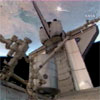
|
 |

Additional coverage for subscribers:
 VIDEO:
LEONARDO MODULE RETURNED TO ENDEAVOUR PLAY VIDEO:
LEONARDO MODULE RETURNED TO ENDEAVOUR PLAY
 VIDEO:
WEDNESDAY'S MISSION STATUS BRIEFING PLAY VIDEO:
WEDNESDAY'S MISSION STATUS BRIEFING PLAY
 VIDEO:
ANIMATION OF LEONARDO MODULE'S DETACHMENT PLAY VIDEO:
ANIMATION OF LEONARDO MODULE'S DETACHMENT PLAY
 VIDEO:
WEDNESDAY MORNING FLIGHT DIRECTOR INTERVIEW PLAY VIDEO:
WEDNESDAY MORNING FLIGHT DIRECTOR INTERVIEW PLAY
 VIDEO:
FLIGHT DAY 12 HIGHLIGHTS MOVIE PLAY VIDEO:
FLIGHT DAY 12 HIGHLIGHTS MOVIE PLAY
 MORE:
STS-126 VIDEO COVERAGE MORE:
STS-126 VIDEO COVERAGE
 SUBSCRIBE NOW SUBSCRIBE NOW

|
Booster cameras give dramatic views of launch
Footage recorded by video cameras on space shuttle Endeavour's twin solid rocket boosters has been released showing the ship's nighttime launch on November 14 from Kennedy Space Center. The movies are presented here with launch audio.
 |  |
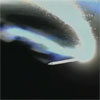
|
 |

Additional coverage for subscribers:
 VIDEO:
LEFT-HAND BOOSTER CAMERA LOOKING UPWARD PLAY VIDEO:
LEFT-HAND BOOSTER CAMERA LOOKING UPWARD PLAY
 VIDEO:
LEFT-HAND BOOSTER CAMERA LOOKING INBOARD PLAY VIDEO:
LEFT-HAND BOOSTER CAMERA LOOKING INBOARD PLAY
 VIDEO:
LEFT-HAND BOOSTER CAMERA LOOKING DOWNWARD PLAY VIDEO:
LEFT-HAND BOOSTER CAMERA LOOKING DOWNWARD PLAY
 VIDEO:
RIGHT-HAND BOOSTER CAMERA LOOKING UPWARD PLAY VIDEO:
RIGHT-HAND BOOSTER CAMERA LOOKING UPWARD PLAY
 VIDEO:
RIGHT-HAND BOOSTER CAMERA LOOKING INBOARD PLAY VIDEO:
RIGHT-HAND BOOSTER CAMERA LOOKING INBOARD PLAY
 VIDEO:
RIGHT-HAND BOOSTER CAMERA LOOKING DOWNWARD PLAY VIDEO:
RIGHT-HAND BOOSTER CAMERA LOOKING DOWNWARD PLAY
 MORE:
STS-126 VIDEO COVERAGE MORE:
STS-126 VIDEO COVERAGE
 SUBSCRIBE NOW SUBSCRIBE NOW

|
Station boss happy with SARJ, water recycler repairs
Work to replace bearings and re-lubricate the space station's damaged right-side solar array rotary joint went better than expected, a senior manager said Tuesday, resulting in remarkably smooth operation that may permit the agency to forego building, launching and installing costly replacement hardware. And the station's newly installed water recycling system, including an initially cantankerous urine distillation assembly, appears to be operating normally and will allow Endeavour to bring back more samples for analysis than expected.
 FULL STORY FULL STORY
 MORNING WAKEUP STORY MORNING WAKEUP STORY
 NASA TV SCHEDULE REV. K (.pdf download) NASA TV SCHEDULE REV. K (.pdf download)
 |  |
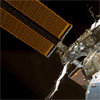
|
 |

Additional coverage for subscribers:
 VIDEO:
MINNEAPOLIS, PORTLAND, PHILLY INTERVIEWS WITH CREW PLAY VIDEO:
MINNEAPOLIS, PORTLAND, PHILLY INTERVIEWS WITH CREW PLAY
 VIDEO:
TUESDAY'S MISSION STATUS BRIEFING PLAY VIDEO:
TUESDAY'S MISSION STATUS BRIEFING PLAY
 VIDEO:
TUESDAY MORNING FLIGHT DIRECTOR INTERVIEW PLAY VIDEO:
TUESDAY MORNING FLIGHT DIRECTOR INTERVIEW PLAY
 VIDEO:
FLIGHT DAY 11 HIGHLIGHTS MOVIE PLAY VIDEO:
FLIGHT DAY 11 HIGHLIGHTS MOVIE PLAY
 MORE:
STS-126 VIDEO COVERAGE MORE:
STS-126 VIDEO COVERAGE
 SUBSCRIBE NOW SUBSCRIBE NOW

|
Spacewalkers complete final excursion of mission
Astronauts Stephen Bowen and Shane Kimbrough accomplished a six-hour spacewalk Monday that finished work on the space station's damaged right-side solar array rotary joint and carried out preventive maintenance on its port-side counterpart. Meanwhile, the shuttle flight has been extended a day and the water recycling system was fired back up and appeared to run relatively smoothly after additional modification work.
 RECYCLING GEAR WORKS DURING LONG TEST RECYCLING GEAR WORKS DURING LONG TEST
 SPACEWALK ENDS SPACEWALK ENDS
 PORT SARJ SHOWS WEAR PORT SARJ SHOWS WEAR
 EVA NO. 4 BEGINS; MISSION EXTENDED EVA NO. 4 BEGINS; MISSION EXTENDED
 MORNING WAKEUP STORY MORNING WAKEUP STORY
 NASA TV SCHEDULE REV. J (.pdf download) NASA TV SCHEDULE REV. J (.pdf download)
 |  |

|
 |

Additional coverage for subscribers:
 VIDEO:
MONDAY'S MISSION STATUS BRIEFING PLAY VIDEO:
MONDAY'S MISSION STATUS BRIEFING PLAY
 VIDEO:
NEW EXTERNAL TV CAMERA MOUNTED TO STATION PLAY VIDEO:
NEW EXTERNAL TV CAMERA MOUNTED TO STATION PLAY
 VIDEO:
FINISHING THE STARBOARD SARJ CLEANING PLAY VIDEO:
FINISHING THE STARBOARD SARJ CLEANING PLAY
 VIDEO:
PREVENTIVE MAINTENANCE ON PORT SARJ PLAY VIDEO:
PREVENTIVE MAINTENANCE ON PORT SARJ PLAY
 VIDEO:
KIMBROUGH FLOATS OUT OF THE AIRLOCK PLAY VIDEO:
KIMBROUGH FLOATS OUT OF THE AIRLOCK PLAY
 VIDEO:
MONDAY MORNING FLIGHT DIRECTOR INTERVIEW PLAY VIDEO:
MONDAY MORNING FLIGHT DIRECTOR INTERVIEW PLAY
 VIDEO:
FLIGHT DAY 10 HIGHLIGHTS MOVIE PLAY VIDEO:
FLIGHT DAY 10 HIGHLIGHTS MOVIE PLAY
 MORE:
STS-126 VIDEO COVERAGE MORE:
STS-126 VIDEO COVERAGE
 SUBSCRIBE NOW SUBSCRIBE NOW

|
Falcon fires its 9 engines to simulate first stage flight
Intense orange light and a booming roar cut through the Central Texas countryside for three minutes Saturday night, signaling the end of a year-long series of ground tests on the core of SpaceX's new Falcon 9 rocket.
 FULL STORY FULL STORY
 |  |

|
 |
NASA spacecraft detects buried glaciers on Mars
NASA's Mars Reconnaissance Orbiter has revealed vast Martian glaciers of water ice under protective blankets of rocky debris at much lower latitudes than any ice previously identified on the Red Planet.
 FULL STORY FULL STORY
 |  |

|
 |
Site list narrows for NASA's next Mars rover landing
Four intriguing places on Mars have risen to the final round as NASA selects a landing site for its next Mars mission, the Mars Science Laboratory.
 FULL STORY FULL STORY
 |  |

|
 |
Station's recycling gear shuts down yet again
An improvised fix to overcome subtle vibration issues that triggered premature shutdowns of the space station's new urine processor assembly appeared to have paid off Sunday. Engineers said an initial test run continued past the point of earlier failures, raising hopes the critical system can be coaxed into normal operation. But less than an hour later, the processor shut itself down again after experiencing problems similar to those that interrupted test runs Friday and Saturday.
 FULL STORY FULL STORY
 SYSTEM RUNS BEYOND EARLIER POINT SYSTEM RUNS BEYOND EARLIER POINT
 WATER SYSTEM RESTARTED FOR CRITICAL TEST WATER SYSTEM RESTARTED FOR CRITICAL TEST
 REPAIR PROCEDURES PERFORMED REPAIR PROCEDURES PERFORMED
 MORNING WAKEUP STORY MORNING WAKEUP STORY
 MISSION STATUS CENTER - live updates! MISSION STATUS CENTER - live updates!
 NASA TV SCHEDULE REV. I (.pdf download) NASA TV SCHEDULE REV. I (.pdf download)
 |  |

|
 |

Additional coverage for subscribers:
 VIDEO:
SUNDAY'S MISSION STATUS BRIEFING PLAY VIDEO:
SUNDAY'S MISSION STATUS BRIEFING PLAY
 VIDEO:
INTERVIEWS WITH CREW BY ABC, CBS AND NBC NEWS PLAY VIDEO:
INTERVIEWS WITH CREW BY ABC, CBS AND NBC NEWS PLAY
 VIDEO:
SUNDAY MORNING FLIGHT DIRECTOR INTERVIEW PLAY VIDEO:
SUNDAY MORNING FLIGHT DIRECTOR INTERVIEW PLAY
 VIDEO:
FLIGHT DAY 9 HIGHLIGHTS MOVIE PLAY VIDEO:
FLIGHT DAY 9 HIGHLIGHTS MOVIE PLAY
 MORE:
STS-126 VIDEO COVERAGE MORE:
STS-126 VIDEO COVERAGE
 SUBSCRIBE NOW SUBSCRIBE NOW

|
Spacewalkers almost finish work on paddle wheel joint
Astronauts Heidemarie Stefanyshyn-Piper and Stephen Bowen took a grueling seven-hour spacewalk Saturday hoping to finish cleaning and lubricating the international space station's damaged right side solar array rotary joint. They completed all but the final section before running out time, instead deferring that site to Monday's EVA. Engineers in Houston, meanwhile, are continuing tests to troubleshoot problems with the station's new urine recycling system.
 WATER SYSTEM REPAIR TO BE ATTEMPTED WATER SYSTEM REPAIR TO BE ATTEMPTED
 SPACEWALK ENDS SPACEWALK ENDS
 FINAL BEARING WORK DEFERRED FINAL BEARING WORK DEFERRED
 EVA NO. 3 GETS UNDERWAY EVA NO. 3 GETS UNDERWAY
 MORNING WAKEUP STORY MORNING WAKEUP STORY
 NASA TV SCHEDULE REV. H (.pdf download) NASA TV SCHEDULE REV. H (.pdf download)
 |  |

|
 |

Additional coverage for subscribers:
 VIDEO:
SATURDAY'S MISSION STATUS BRIEFING PLAY VIDEO:
SATURDAY'S MISSION STATUS BRIEFING PLAY
 VIDEO:
LAST OF OLD BEARINGS REMOVED FROM SARJ PLAY VIDEO:
LAST OF OLD BEARINGS REMOVED FROM SARJ PLAY
 VIDEO:
BOWEN INSTALLS ANOTHER BEARING ASSEMBLY PLAY VIDEO:
BOWEN INSTALLS ANOTHER BEARING ASSEMBLY PLAY
 VIDEO:
SARJ CLEANING TECHNIQUES TO REMOVE CONTAMINATION PLAY VIDEO:
SARJ CLEANING TECHNIQUES TO REMOVE CONTAMINATION PLAY
 VIDEO:
PIPER USES GREASE GUNS ON THE SARJ PLAY VIDEO:
PIPER USES GREASE GUNS ON THE SARJ PLAY
 VIDEO:
NEW TRUNDLE BEARING ASSEMBLY INSTALLED PLAY VIDEO:
NEW TRUNDLE BEARING ASSEMBLY INSTALLED PLAY
 VIDEO:
SPACEWALKING DUO GETS TO WORK PLAY VIDEO:
SPACEWALKING DUO GETS TO WORK PLAY
 VIDEO:
SPACEWALK NO. 3 BEGINS PLAY VIDEO:
SPACEWALK NO. 3 BEGINS PLAY
 VIDEO:
WALKTHROUGH OF SPACEWALK NO. 3 PLAN PLAY VIDEO:
WALKTHROUGH OF SPACEWALK NO. 3 PLAN PLAY
 VIDEO:
SATURDAY MORNING FLIGHT DIRECTOR INTERVIEW PLAY VIDEO:
SATURDAY MORNING FLIGHT DIRECTOR INTERVIEW PLAY
 VIDEO:
FLIGHT DAY 8 HIGHLIGHTS MOVIE PLAY VIDEO:
FLIGHT DAY 8 HIGHLIGHTS MOVIE PLAY
 MORE:
STS-126 VIDEO COVERAGE MORE:
STS-126 VIDEO COVERAGE
 SUBSCRIBE NOW SUBSCRIBE NOW

|
Apparent motor problem in station's new water system
Engineers believe the problem with the space station's new urine processor assembly, a key component in the water recycling system needed to boost the space station's crew size from three to six, involves trouble with a motor or associated sensors in a centrifuge that helps separate pure water from urine in a vacuum distillation system.
 FULL STORY FULL STORY
 EARLIER STORY EARLIER STORY
 MORNING WAKEUP STORY MORNING WAKEUP STORY
 NASA TV SCHEDULE REV. G (.pdf download) NASA TV SCHEDULE REV. G (.pdf download)
 |  |

|
 |

Additional coverage for subscribers:
 VIDEO:
FRIDAY'S MISSION STATUS BRIEFING PLAY VIDEO:
FRIDAY'S MISSION STATUS BRIEFING PLAY
 VIDEO:
JOINT CREW IN-FLIGHT NEWS CONFERENCE PLAY VIDEO:
JOINT CREW IN-FLIGHT NEWS CONFERENCE PLAY
 VIDEO:
FRIDAY MORNING FLIGHT DIRECTOR INTERVIEW PLAY VIDEO:
FRIDAY MORNING FLIGHT DIRECTOR INTERVIEW PLAY
 VIDEO:
FLIGHT DAY 7 HIGHLIGHTS MOVIE PLAY VIDEO:
FLIGHT DAY 7 HIGHLIGHTS MOVIE PLAY
 MORE:
STS-126 VIDEO COVERAGE MORE:
STS-126 VIDEO COVERAGE
 SUBSCRIBE NOW SUBSCRIBE NOW

|
Second EVA success; water recycling glitch studied
Despite a tool shortage, a spacesuit carbon dioxide buildup late in the day and communications problems, spacewalkers Heidemarie Stefanyshyn-Piper and Shane Kimbrough accomplished their primary goals, officials said Thursday, moving two equipment carts, servicing the station's robot arm and continuing work to clean and lubricate a jammed solar array rotary joint. Inside the lab complex, meanwhile, other astronauts ran into start-up glitches with the new urine processor.
 FULL STORY FULL STORY
 SPACEWALK NO. 2 ENDS SPACEWALK NO. 2 ENDS
 LOST TOOLS DON'T HAMPER EVA WORK LOST TOOLS DON'T HAMPER EVA WORK
 MORNING WAKEUP STORY MORNING WAKEUP STORY
 NASA TV SCHEDULE REV. F (.pdf download) NASA TV SCHEDULE REV. F (.pdf download)
 |  |
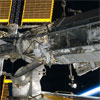
|
 |

Additional coverage for subscribers:
 VIDEO:
THURSDAY'S MISSION STATUS BRIEFING PLAY VIDEO:
THURSDAY'S MISSION STATUS BRIEFING PLAY
 VIDEO:
MAINTENANCE PERFORMED ON STATION'S ARM PLAY VIDEO:
MAINTENANCE PERFORMED ON STATION'S ARM PLAY
 VIDEO:
SPACEWALKERS PULL SECOND RAIL CART FREE PLAY VIDEO:
SPACEWALKERS PULL SECOND RAIL CART FREE PLAY
 VIDEO:
FIRST CART REMOVED FROM STATION RAILS PLAY VIDEO:
FIRST CART REMOVED FROM STATION RAILS PLAY
 VIDEO:
THURSDAY MORNING FLIGHT DIRECTOR INTERVIEW PLAY VIDEO:
THURSDAY MORNING FLIGHT DIRECTOR INTERVIEW PLAY
 VIDEO:
WALKTHROUGH OF SPACEWALK NO. 2 PLAN PLAY VIDEO:
WALKTHROUGH OF SPACEWALK NO. 2 PLAN PLAY
 VIDEO:
SHOW-AND-TELL OF SOLAR ALPHA ROTARY JOINT WORK PLAY VIDEO:
SHOW-AND-TELL OF SOLAR ALPHA ROTARY JOINT WORK PLAY
 VIDEO:
FLIGHT DIRECTOR'S SUMMARY OF FLIGHT DAY 7 PLAY VIDEO:
FLIGHT DIRECTOR'S SUMMARY OF FLIGHT DAY 7 PLAY
 VIDEO:
FLIGHT DAY 6 HIGHLIGHTS MOVIE PLAY VIDEO:
FLIGHT DAY 6 HIGHLIGHTS MOVIE PLAY
 MORE:
STS-126 VIDEO COVERAGE MORE:
STS-126 VIDEO COVERAGE
 SUBSCRIBE NOW SUBSCRIBE NOW

|
Hubble solves mystery of lone starburst galaxy
Astronomers have solved the mystery as to why a small, nearby, isolated galaxy is pumping out new stars faster than any galaxy in our local neighborhood. It turns out it is actually further away than astronomers first thought.
 FULL STORY FULL STORY
 |  |

|
 |
Scientists find planet dangerously close to star
A new planet found orbiting a red giant star at a distance of just 0.6 AU may shed new light on how aging stars influence nearby planets before they are consumed.
 FULL STORY FULL STORY
 |  |

|
 |
10th birthday for the ISS
The first piece of the international space station -- Russia's Zarya control module -- was launched into Earth orbit 10 years ago Thursday, riding atop a Proton rocket from the Baikonur Cosmodrome. We present a video flashback of that historic launch that began the in-orbit assembly of the station complex.
 |  |

|
 |

Additional coverage for subscribers:
 VIDEO:
PROTON ROCKET ROLLS OUT TO THE PAD PLAY VIDEO:
PROTON ROCKET ROLLS OUT TO THE PAD PLAY
 VIDEO:
LAUNCH OF THE ZARYA CONTROL MODULE PLAY VIDEO:
LAUNCH OF THE ZARYA CONTROL MODULE PLAY
 VIDEO:
POST-LAUNCH COMMENTS BY NASA AND RSA PLAY VIDEO:
POST-LAUNCH COMMENTS BY NASA AND RSA PLAY
 VIDEO:
SHUTTLE AND STATION COMMANDERS MARK ANNIVERSARY PLAY VIDEO:
SHUTTLE AND STATION COMMANDERS MARK ANNIVERSARY PLAY
 MORE:
STS-126 VIDEO COVERAGE MORE:
STS-126 VIDEO COVERAGE
 SUBSCRIBE NOW SUBSCRIBE NOW

|
Spacewalker expresses remorse for lost tool bag
Astronaut Heidemarie Stefanyshyn-Piper told reporters Wednesday the loss of a $100,000 tool bag during an otherwise successful spacewalk Tuesday was "disheartening" and that it was difficult to face her crewmates when she returned to the shuttle-space station complex. Fellow spacewalker Stephen Bowen, who said he was responsible for making a final tether check of the bag before the EVA began, said he was equally to blame for the mishap.
 FULL STORY FULL STORY
 MORNING WAKEUP STORY MORNING WAKEUP STORY
 NASA TV SCHEDULE REV. E (.pdf download) NASA TV SCHEDULE REV. E (.pdf download)
 |  |

|
 |

Additional coverage for subscribers:
 VIDEO:
LAUNCH CAMERA REPLAYS VIDEO:
LAUNCH CAMERA REPLAYS
 VIDEO:
WEDNESDAY'S MISSION STATUS BRIEFING PLAY VIDEO:
WEDNESDAY'S MISSION STATUS BRIEFING PLAY
 VIDEO:
AP, MINNEAPOLIS AND BOSTON INTERVIEWS WITH CREW PLAY VIDEO:
AP, MINNEAPOLIS AND BOSTON INTERVIEWS WITH CREW PLAY
 VIDEO:
WEDNESDAY MORNING FLIGHT DIRECTOR INTERVIEW PLAY VIDEO:
WEDNESDAY MORNING FLIGHT DIRECTOR INTERVIEW PLAY
 VIDEO:
FLIGHT DAY 5 HIGHLIGHTS MOVIE PLAY VIDEO:
FLIGHT DAY 5 HIGHLIGHTS MOVIE PLAY
 VIDEO:
RIDE ALONG WITH ASTRONAUTS "RACK-CAM" PLAY VIDEO:
RIDE ALONG WITH ASTRONAUTS "RACK-CAM" PLAY
 VIDEO:
COMBUSTION SCIENCE HARDWARE MOVED INTO STATION PLAY VIDEO:
COMBUSTION SCIENCE HARDWARE MOVED INTO STATION PLAY
 VIDEO:
AIRLOCK CAMCORDER FOOTAGE AFTER SPACEWALK PLAY VIDEO:
AIRLOCK CAMCORDER FOOTAGE AFTER SPACEWALK PLAY
 MORE:
STS-126 VIDEO COVERAGE MORE:
STS-126 VIDEO COVERAGE
 SUBSCRIBE NOW SUBSCRIBE NOW

|
Scientists dive deeper into Mars' watery past
An international team of scientists working with data gleaned from Mars Odyssey's Gamma Ray Spectrometer report new evidence for the controversial idea that oceans once covered as much as one-third of ancient Mars.
 FULL STORY FULL STORY
 |  |

|
 |
XMM and Integral unveil magnetar environment
X-ray and gamma ray data from ESA's XMM-Newton and Integral orbiting observatories have been used to make the first tests of the physical processes that define magnetars, an unusual class of neutron star with immense magnetic fields.
 FULL STORY FULL STORY
 |  |

|
 |
Astronauts complete first spacewalk of shuttle flight
Astronauts Heidemarie Stefanyshyn-Piper and Stephen Bowen wrapped up a six-hour 52-minute spacewalk Tuesday, installing a spare coolant system component on the international space station, moving a depleted nitrogen tank to the shuttle Endeavour for return to Earth and cleaning a damaged solar array rotary joint.
 HEAT SHIELD OFFICIALLY CLEARED HEAT SHIELD OFFICIALLY CLEARED
 POST-EVA STORY POST-EVA STORY
 SPACEWALK NO. 1 ENDS SPACEWALK NO. 1 ENDS
 BAG OF TOOLS FLOATS AWAY BAG OF TOOLS FLOATS AWAY
 HARDWARE SWAPPED BETWEEN ISS AND SHUTTLE HARDWARE SWAPPED BETWEEN ISS AND SHUTTLE
 MORNING WAKEUP STORY MORNING WAKEUP STORY
 NASA TV SCHEDULE REV. D (.pdf download) NASA TV SCHEDULE REV. D (.pdf download)
 |  |

|
 |

Additional coverage for subscribers:
 VIDEO:
TUESDAY'S MISSION STATUS BRIEFING PLAY VIDEO:
TUESDAY'S MISSION STATUS BRIEFING PLAY
 VIDEO:
EVA NO. 1 CONCLUDES PLAY VIDEO:
EVA NO. 1 CONCLUDES PLAY
 VIDEO:
SOLAR ALPHA ROTARY JOINT REPAIRS BEGIN PLAY VIDEO:
SOLAR ALPHA ROTARY JOINT REPAIRS BEGIN PLAY
 VIDEO:
TOOL BAG ACCIDENTALLY FLOATS AWAY PLAY VIDEO:
TOOL BAG ACCIDENTALLY FLOATS AWAY PLAY
 VIDEO:
GREASE GUN SPILL MAKES MESS IN TOOL CARRIER PLAY VIDEO:
GREASE GUN SPILL MAKES MESS IN TOOL CARRIER PLAY
 VIDEO:
SPARE FLEX HOSE COUPLER DELIVERED TO STATION PLAY VIDEO:
SPARE FLEX HOSE COUPLER DELIVERED TO STATION PLAY
 VIDEO:
EMPTY NITROGEN TANK MOVED FROM STATION TO SHUTTLE PLAY VIDEO:
EMPTY NITROGEN TANK MOVED FROM STATION TO SHUTTLE PLAY
 VIDEO:
TUESDAY MORNING FLIGHT DIRECTOR INTERVIEW PLAY VIDEO:
TUESDAY MORNING FLIGHT DIRECTOR INTERVIEW PLAY
 VIDEO:
SHOW-AND-TELL OF SOLAR ALPHA ROTARY JOINT WORK PLAY VIDEO:
SHOW-AND-TELL OF SOLAR ALPHA ROTARY JOINT WORK PLAY
 VIDEO:
WALKTHROUGH OF SPACEWALK NO. 1 PLAN PLAY VIDEO:
WALKTHROUGH OF SPACEWALK NO. 1 PLAN PLAY
 VIDEO:
NARRATED ANIMATION OF SPACEWALK SWAPOUT PLAY VIDEO:
NARRATED ANIMATION OF SPACEWALK SWAPOUT PLAY
 VIDEO:
FLIGHT DIRECTOR'S SUMMARY OF FLIGHT DAY 5 PLAY VIDEO:
FLIGHT DIRECTOR'S SUMMARY OF FLIGHT DAY 5 PLAY
 MORE:
STS-126 VIDEO COVERAGE MORE:
STS-126 VIDEO COVERAGE
 SUBSCRIBE NOW SUBSCRIBE NOW

|
Cargo-delivery module attached to the station
Astronauts Don Pettit and Shane Kimbrough, operating the space station's robot arm, carefully pulled a 27,000-pound cargo module out of the shuttle Endeavour's cargo bay Monday and attached it to the Harmony module to accomplish one of the major objectives of their mission. Meanwhile, analysis of Endeavour heat shield checks revealed no major problems that would require a so-called focused inspection later this week.
 NO 'FOCUSED' INSPECTIONS NEEDED NO 'FOCUSED' INSPECTIONS NEEDED
 LEONARDO ATTACHED TO STATION LEONARDO ATTACHED TO STATION
 MORNING WAKEUP STORY MORNING WAKEUP STORY
 NASA TV SCHEDULE REV. C (.pdf download) NASA TV SCHEDULE REV. C (.pdf download)
 |  |
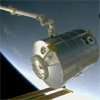
|
 |

Additional coverage for subscribers:
 VIDEO:
FLIGHT DAY 4 HIGHLIGHTS MOVIE PLAY VIDEO:
FLIGHT DAY 4 HIGHLIGHTS MOVIE PLAY
 VIDEO:
CREW OPENS HATCH AND ENTERS LEONARDO PLAY VIDEO:
CREW OPENS HATCH AND ENTERS LEONARDO PLAY
 VIDEO:
ATLANTA AND BOSTON TV STATIONS INTERVIEW CREW PLAY VIDEO:
ATLANTA AND BOSTON TV STATIONS INTERVIEW CREW PLAY
 VIDEO:
MONDAY'S MISSION MANAGEMENT TEAM UPDATE PLAY VIDEO:
MONDAY'S MISSION MANAGEMENT TEAM UPDATE PLAY
 VIDEO:
MONDAY'S MISSION STATUS BRIEFING PLAY VIDEO:
MONDAY'S MISSION STATUS BRIEFING PLAY
 VIDEO:
LEONARDO MODULE SUCCESSFULLY MOUNTED TO STATION PLAY VIDEO:
LEONARDO MODULE SUCCESSFULLY MOUNTED TO STATION PLAY
 VIDEO:
MONDAY MORNING FLIGHT DIRECTOR INTERVIEW PLAY VIDEO:
MONDAY MORNING FLIGHT DIRECTOR INTERVIEW PLAY
 VIDEO:
PREVIEW ANIMATION OF LEONARDO MODULE ATTACHMENT PLAY VIDEO:
PREVIEW ANIMATION OF LEONARDO MODULE ATTACHMENT PLAY
 VIDEO:
SUMMARY OF CARGO BEING DELIVERED TO SPACE STATION PLAY VIDEO:
SUMMARY OF CARGO BEING DELIVERED TO SPACE STATION PLAY
 MORE:
STS-126 VIDEO COVERAGE MORE:
STS-126 VIDEO COVERAGE
 SUBSCRIBE NOW SUBSCRIBE NOW

|
Shuttle Endeavour sails up
to the space station
The space shuttle Endeavour, piloted by commander Chris Ferguson from the aft flight deck, glided to a picture-perfect docking with the international space station Sunday as the two spacecraft sailed through orbital darkness 212 miles above northeastern India at five miles per second.
 DOCKING STORY DOCKING STORY
 MORNING WAKEUP STORY MORNING WAKEUP STORY
 NASA TV SCHEDULE REV. B (.pdf download) NASA TV SCHEDULE REV. B (.pdf download)
 |  |

|
 |

Additional coverage for subscribers:
 VIDEO:
FLIGHT DAY 3 HIGHLIGHTS MOVIE PLAY VIDEO:
FLIGHT DAY 3 HIGHLIGHTS MOVIE PLAY
 VIDEO:
SUNDAY'S MISSION STATUS BRIEFING PLAY VIDEO:
SUNDAY'S MISSION STATUS BRIEFING PLAY
 VIDEO:
SHUTTLE CREW WELCOMED ABOARD STATION PLAY VIDEO:
SHUTTLE CREW WELCOMED ABOARD STATION PLAY
 VIDEO:
SPACE SHUTTLE ENDEAVOUR DOCKS TO SPACE STATION PLAY VIDEO:
SPACE SHUTTLE ENDEAVOUR DOCKS TO SPACE STATION PLAY
 VIDEO:
ENDEAVOUR PERFORMS THE 360-DEGREE BACKFLIP PLAY VIDEO:
ENDEAVOUR PERFORMS THE 360-DEGREE BACKFLIP PLAY
 VIDEO:
VIEWS OF THE SHUTTLE APPROACHING FROM BELOW PLAY VIDEO:
VIEWS OF THE SHUTTLE APPROACHING FROM BELOW PLAY
 VIDEO:
FLIGHT DIRECTOR'S SUMMARY OF FLIGHT DAY 3 PLAY VIDEO:
FLIGHT DIRECTOR'S SUMMARY OF FLIGHT DAY 3 PLAY
 VIDEO:
PREVIEW ANIMATION OF RENDEZVOUS AND DOCKING PLAY VIDEO:
PREVIEW ANIMATION OF RENDEZVOUS AND DOCKING PLAY
 VIDEO:
FLIGHT DAY 2 HIGHLIGHTS MOVIE PLAY VIDEO:
FLIGHT DAY 2 HIGHLIGHTS MOVIE PLAY
 MORE:
STS-126 VIDEO COVERAGE MORE:
STS-126 VIDEO COVERAGE
 SUBSCRIBE NOW SUBSCRIBE NOW

|
Crew spends first day in space inspecting Endeavour
The shuttle Endeavour is in good shape after its climb to space Friday and engineers are only working a handful of relatively minor problems, most noticeably glitches with the shuttle's KU-band antenna. Based on an evening video inspection, a presumably lost strip of flexible insulation from the shuttle's left aft fuselage apparently is still in place.
 FULL STORY FULL STORY
 MORNING WAKEUP STORY MORNING WAKEUP STORY
 |  |
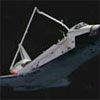
|
 |

Additional coverage for subscribers:
 VIDEO:
SATURDAY'S MISSION STATUS BRIEFING PLAY VIDEO:
SATURDAY'S MISSION STATUS BRIEFING PLAY
 VIDEO:
SATURDAY'S MISSION MANAGEMENT TEAM UPDATE PLAY VIDEO:
SATURDAY'S MISSION MANAGEMENT TEAM UPDATE PLAY
 VIDEO:
FLIGHT DIRECTOR'S SUMMARY OF FLIGHT DAY 2 PLAY VIDEO:
FLIGHT DIRECTOR'S SUMMARY OF FLIGHT DAY 2 PLAY
 VIDEO:
PREVIEW ANIMATION OF HEAT SHIELD INSPECTIONS PLAY VIDEO:
PREVIEW ANIMATION OF HEAT SHIELD INSPECTIONS PLAY
 VIDEO:
NARRATED TOUR OF ENDEAVOUR'S PAYLOAD BAY PLAY VIDEO:
NARRATED TOUR OF ENDEAVOUR'S PAYLOAD BAY PLAY
 MORE:
STS-126 VIDEO COVERAGE MORE:
STS-126 VIDEO COVERAGE
 SUBSCRIBE NOW SUBSCRIBE NOW

|
Lunar impactor dispatched from Indian spacecraft
Chandrayaan 1, India's first deep space probe, released a 75-pound impactor Friday that completed a suicidal nosedive into the moon's south pole about 25 minutes later.
 FULL STORY FULL STORY
 |  |
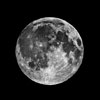
|
 |
OTHER HEADLINES Additional stories today
|
 |
Classified Russian spacecraft launched into Earth orbit -- Russia launched a top secret military satellite Friday in an unannounced flight from the country's northern space base, according to news reports.
|
 |
Endeavour soars into the night and reaches orbit
The space shuttle Endeavour, carrying urine recycling gear, a new toilet, a galley and private crew quarters needed for a space station "home improvement" makeover, flashed to life and thundered into space Friday, lighting up the night sky for hundreds of miles around as it rocketed away.
 LAUNCH STORY LAUNCH STORY
 IMAGES: LAUNCH PHOTO GALLERY IMAGES: LAUNCH PHOTO GALLERY
 IMAGES: MORE LAUNCH PHOTOS IMAGES: MORE LAUNCH PHOTOS
 NASA TV SCHEDULE REV. A (.pdf download) NASA TV SCHEDULE REV. A (.pdf download)
 |  |
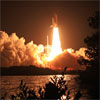
|
 |

Additional coverage for subscribers:
 VIDEO:
FLIGHT DAY 1 HIGHLIGHTS MOVIE PLAY VIDEO:
FLIGHT DAY 1 HIGHLIGHTS MOVIE PLAY
 VIDEO:
SPACE SHUTTLE ENDEAVOUR BLASTS OFF! PLAY VIDEO:
SPACE SHUTTLE ENDEAVOUR BLASTS OFF! PLAY
 VIDEO:
SPACEFLIGHT NOW'S LAUNCH PAD CAMERA PLAY VIDEO:
SPACEFLIGHT NOW'S LAUNCH PAD CAMERA PLAY
 VIDEO:
THE FULL STS-126 LAUNCH EXPERIENCE PLAY VIDEO:
THE FULL STS-126 LAUNCH EXPERIENCE PLAY
 VIDEO:
INSIDE MISSION CONTROL DURING LAUNCH PLAY VIDEO:
INSIDE MISSION CONTROL DURING LAUNCH PLAY
 VIDEO:
POST-LAUNCH NEWS BRIEFING PLAY VIDEO:
POST-LAUNCH NEWS BRIEFING PLAY

 VIDEO:
FINAL PRE-LAUNCH POLLS GIVE "GO" FOR LIFTOFF PLAY VIDEO:
FINAL PRE-LAUNCH POLLS GIVE "GO" FOR LIFTOFF PLAY
 VIDEO:
SHUTTLE'S CREW MODULE HATCH CLOSED FOR FLIGHT PLAY VIDEO:
SHUTTLE'S CREW MODULE HATCH CLOSED FOR FLIGHT PLAY
 VIDEO:
MISSION SPECIALIST DON PETTIT BOARDS PLAY VIDEO:
MISSION SPECIALIST DON PETTIT BOARDS PLAY
 VIDEO:
MISSION SPECIALIST SHANE KIMBROUGH BOARDS PLAY VIDEO:
MISSION SPECIALIST SHANE KIMBROUGH BOARDS PLAY
 VIDEO:
PILOT ERIC BOE BOARDS ENDEAVOUR PLAY VIDEO:
PILOT ERIC BOE BOARDS ENDEAVOUR PLAY
 VIDEO:
COMMANDER CHRIS FERGUSON BOARDS ENDEAVOUR PLAY VIDEO:
COMMANDER CHRIS FERGUSON BOARDS ENDEAVOUR PLAY
 VIDEO:
ASTROVAN TAKES CREW TO LAUNCH PAD 39A PLAY VIDEO:
ASTROVAN TAKES CREW TO LAUNCH PAD 39A PLAY
 VIDEO:
CREW DEPARTS QUARTERS FOR LAUNCH PAD PLAY VIDEO:
CREW DEPARTS QUARTERS FOR LAUNCH PAD PLAY
 VIDEO:
ASTRONAUTS DON SPACESUITS FOR LAUNCH PLAY VIDEO:
ASTRONAUTS DON SPACESUITS FOR LAUNCH PLAY
 VIDEO:
NARRATED RECAP OF ENDEAVOUR'S PRE-FLIGHT CAMPAIGN PLAY VIDEO:
NARRATED RECAP OF ENDEAVOUR'S PRE-FLIGHT CAMPAIGN PLAY
 VIDEO:
NARRATED RECAP OF PAYLOADS' PRE-FLIGHT CAMPAIGN PLAY VIDEO:
NARRATED RECAP OF PAYLOADS' PRE-FLIGHT CAMPAIGN PLAY
 VIDEO:
PAD 39A SERVICE GANTRY RETRACTED FOR LAUNCH PLAY VIDEO:
PAD 39A SERVICE GANTRY RETRACTED FOR LAUNCH PLAY
 MORE:
STS-126 VIDEO COVERAGE MORE:
STS-126 VIDEO COVERAGE
 SUBSCRIBE NOW SUBSCRIBE NOW

|
Hubble images exoplanet
Using the Hubble Space Telescope, a team of astronomers has taken an image of a planet around the star Fomalhaut. It is the first such image of an exoplanet taken in visible wavelengths.
 FULL STORY FULL STORY
 |  |

|
 |
Planet family photographed around normal star
Astronomers using the Gemini North telescope and W.M. Keck Observatory on Hawaii's Mauna Kea have obtained the first images of a multi-planet system around a normal star.
 FULL STORY FULL STORY
 |  |

|
 |
Mission preview: Shuttle on 'home improvement' flight
The shuttle Endeavour is poised for blastoff Friday on a space station "home improvement" mission with a "yuck factor" twist: Delivery and installation of a new toilet and complex water processing gear designed to convert urine into ultra-pure water for drinking, food preparation, personal hygiene and oxygen generation.
 MISSION PREVIEW STORY MISSION PREVIEW STORY
 NASA TV SCHEDULE (.pdf download) NASA TV SCHEDULE (.pdf download)
 LAUNCH WINDOWS CHART LAUNCH WINDOWS CHART
 COUNTDOWN TIMELINE COUNTDOWN TIMELINE
 ASCENT TIMELINE ASCENT TIMELINE
 |  |
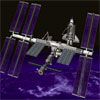
|
 |

Additional coverage for subscribers:
 VIDEO:
WEDNESDAY'S PRE-LAUNCH NEWS CONFERENCE PLAY VIDEO:
WEDNESDAY'S PRE-LAUNCH NEWS CONFERENCE PLAY
 VIDEO:
ENDEAVOUR ASTRONAUTS ARRIVE FOR LAUNCH PLAY VIDEO:
ENDEAVOUR ASTRONAUTS ARRIVE FOR LAUNCH PLAY
 VIDEO:
TUESDAY'S COUNTDOWN STATUS AND WEATHER UPDATE PLAY VIDEO:
TUESDAY'S COUNTDOWN STATUS AND WEATHER UPDATE PLAY

 VIDEO:
STATION ASTRONAUTS PREPARE FOR SHUTTLE ARRIVAL PLAY VIDEO:
STATION ASTRONAUTS PREPARE FOR SHUTTLE ARRIVAL PLAY
 VIDEO:
ENDEAVOUR'S PAYLOADS READIED FOR TREK TO SPACE PLAY VIDEO:
ENDEAVOUR'S PAYLOADS READIED FOR TREK TO SPACE PLAY
 VIDEO:
UPDATE ON SHUTTLE AND STATION PROGRAMS PLAY VIDEO:
UPDATE ON SHUTTLE AND STATION PROGRAMS PLAY
 VIDEO:
STS-126 MISSION OVERVIEW PLAY VIDEO:
STS-126 MISSION OVERVIEW PLAY
 VIDEO:
PREVIEW BRIEFING ON MISSION'S SPACEWALKS PLAY VIDEO:
PREVIEW BRIEFING ON MISSION'S SPACEWALKS PLAY
 VIDEO:
THE ASTRONAUTS' PRE-FLIGHT NEWS BRIEFING PLAY VIDEO:
THE ASTRONAUTS' PRE-FLIGHT NEWS BRIEFING PLAY
 VIDEO:
INTERVIEW WITH COMMANDER CHRIS FERGUSON PLAY VIDEO:
INTERVIEW WITH COMMANDER CHRIS FERGUSON PLAY
 VIDEO:
INTERVIEW WITH PILOT ERIC BOE PLAY VIDEO:
INTERVIEW WITH PILOT ERIC BOE PLAY
 VIDEO:
INTERVIEW WITH MS1 HEIDEMARIE PIPER PLAY VIDEO:
INTERVIEW WITH MS1 HEIDEMARIE PIPER PLAY
 VIDEO:
INTERVIEW WITH MS2 STEPHEN BOWEN PLAY VIDEO:
INTERVIEW WITH MS2 STEPHEN BOWEN PLAY
 VIDEO:
INTERVIEW WITH MS3 DON PETITT PLAY VIDEO:
INTERVIEW WITH MS3 DON PETITT PLAY
 VIDEO:
INTERVIEW WITH MS4 SHANE KIMBROUGH PLAY VIDEO:
INTERVIEW WITH MS4 SHANE KIMBROUGH PLAY
 VIDEO:
INTERVIEW WITH MS5 SANDY MAGNUS PLAY VIDEO:
INTERVIEW WITH MS5 SANDY MAGNUS PLAY
 MORE:
STS-126 VIDEO COVERAGE MORE:
STS-126 VIDEO COVERAGE
 SUBSCRIBE NOW SUBSCRIBE NOW

|
Griffin not optimistic about staying on as head of NASA
NASA Administrator Mike Griffin, answering questions from Kennedy Space Center workers during an "all hands" meeting Thursday, said he does not expect the Obama administration to keep him on as head of the nation's civilian space agency.
 FULL STORY FULL STORY
 |  |

|
 |
Controllers cheer as Spirit rover talks from Mars
NASA's Mars Exploration Rover Spirit communicated via the Mars Odyssey orbiter Thursday right at the time when ground controllers had told it to, prompting shouts of "She's talking!" among the rover team at the Jet Propulsion Laboratory.
 FULL STORY FULL STORY
 WEDNESDAY'S STORY WEDNESDAY'S STORY
 |  |
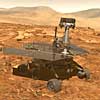
|
 |
Richard Garriott interview
Richard Garriott, a significant figure in the video game industry, recently established himself as a self-funded space tourist, spending ten days onboard the International Space Station. We spoke to Garriott about the highs and lows of his space station experiences and his thoughts on the future of space tourism.
 FULL STORY FULL STORY
 |  |

|
 |
All systems looking good for Endeavour's launch
The shuttle Endeavour's countdown is continuing with no technical issues of any significance for launch on a critical space station assembly and maintenance mission. Liftoff is targeted for 7:55 p.m. EST Friday.
 FULL STORY FULL STORY
 |  |

|
 |
IBEX reaches orbit, begins instrument commissioning
Just over three weeks since its Oct. 19 launch, NASA's Interstellar Boundary Explorer (IBEX) spacecraft -- the first mission designed to image the interaction at the edge of the solar system -- concluded its orbit-raising phase and is beginning instrument commissioning in preparation to start science observations.
 FULL STORY FULL STORY
 OUR LAUNCH COVERAGE OUR LAUNCH COVERAGE
 |  |
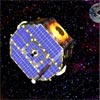
|
 |
Dusty shock waves generate planet ingredients
Using NASA's Spitzer Space Telescope, astronomers have shown that shock waves around dusty young stars could be generating the raw materials needed for planet formation.
 FULL STORY FULL STORY
 |  |

|
 |
Glowing stellar nurseries
By using sub-millimetre wavelength astronomy, astronomers have revealed the cold dense clouds of material that are the birth places of new stars.
 FULL STORY FULL STORY
 |  |

|
 |
It is launch week at the Kennedy Space Center
The seven astronauts who will rocket into space aboard the shuttle Endeavour arrived at the Florida spaceport Tuesday afternoon, just hours before the countdown clocks began ticking toward Friday's planned 7:55 p.m. EST launch.
 MISSION STATUS CENTER MISSION STATUS CENTER
 MORNING STORY MORNING STORY
 IMAGES: CREW ARRIVAL PHOTO GALLERY IMAGES: CREW ARRIVAL PHOTO GALLERY
 |  |

|
 |

Additional coverage for subscribers:
 VIDEO:
ENDEAVOUR ASTRONAUTS ARRIVE FOR LAUNCH PLAY VIDEO:
ENDEAVOUR ASTRONAUTS ARRIVE FOR LAUNCH PLAY
 VIDEO:
TUESDAY'S COUNTDOWN STATUS AND WEATHER UPDATE PLAY VIDEO:
TUESDAY'S COUNTDOWN STATUS AND WEATHER UPDATE PLAY
 MORE:
STS-126 VIDEO COVERAGE MORE:
STS-126 VIDEO COVERAGE
 SUBSCRIBE NOW SUBSCRIBE NOW

|
Dust storm cuts energy supply of Spirit rover
A dust storm on Mars has cut into the amount of sunlight reaching the solar array on NASA's Mars Exploration Rover Spirit, leaving the rover in a vulnerable state.
 FULL STORY FULL STORY
 |  |
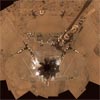
|
 |
Giant simulation could solve mystery of 'dark matter'
The search for a mysterious substance which makes up most of the Universe could soon be at an end, according to new research. Dark matter is believed to account for 85 percent of the Universe's mass but has remained invisible to telescopes since scientists inferred its existence from its gravitational effects more than 75 years ago.
 FULL STORY FULL STORY
 |  |

|
 |
Phoenix mission ends as lander enters deep freeze
After five months investigating soil and ice of the Martian northern arctic plains, NASA's Phoenix lander has depleted its batteries and fallen silent. The shorter periods of sunlight during the onset of winter to recharge the solar-powered spacecraft, plus dustier skies and colder temperatures meant the lander could no longer collect enough energy to survive. The mission had exceeded its 90-day life span.
 FULL STORY FULL STORY
 NASA STATEMENT NASA STATEMENT
 VIDEO: PHOENIX MISSION COVERAGE VIDEO: PHOENIX MISSION COVERAGE
 |  |

|
 |
Fingers and loops revealed in the Crab Nebula
The Chandra X-ray Observatory has captured the first clear view of the faint boundary of the Crab Nebula's X-ray emitting pulsar wind nebula.
 FULL STORY FULL STORY
 |  |
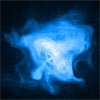
|
 |
First Indian 'moon craft'
goes into lunar orbit
Chandrayaan 1, India's first deep space mission, successfully entered lunar orbit early Saturday after a circuitous two-and-a-half week journey from a seaside launch pad to the moon.
 FULL STORY FULL STORY
 |  |
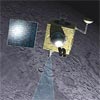
|
 |

Additional coverage for subscribers:
 VIDEO:
THE LAUNCH OF CHANDRAYAAN 1 PLAY VIDEO:
THE LAUNCH OF CHANDRAYAAN 1 PLAY
 SUBSCRIBE NOW SUBSCRIBE NOW

|
NASA satellites gauge Alaskan glacier ice loss
A NASA-led research team has used satellite data to make the most precise measurements to date of changes in the mass of mountain glaciers in the Gulf of Alaska, a region expected to be a significant contributor to global sea level rise over the next 50-100 years.
 FULL STORY FULL STORY
 |  |

|
 |
OTHER HEADLINES Additional stories today
|
 |
Oldest commercial communications satellite retires -- After 32 years of serving ships at sea and scientists at the South Pole, an aging communications satellite owned by Intelsat Ltd. has been retired. The Marisat-F2 satellite was manufactured by Hughes Aircraft Inc. and launched in 1976.

Technical issues, more tests delay TacSat-3's liftoff -- The timeless saying every gray cloud has a silver lining aptly fits the Tactical Satellite-3 program during the past 60 days.
|
 |
Bullet Cluster: Searching for primordial antimatter
Scientists are on the hunt for evidence of antimatter -- matter's arch nemesis -- left over from the very early Universe. New results using data from NASA's Chandra X-ray Observatory and Compton Gamma Ray Observatory suggest the search may have just become even more difficult.
 FULL STORY FULL STORY
 |  |
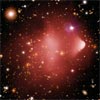
|
 |
Proton rocket deploys ASTRA satellite for Europe
A new European communications satellite was launched into space Wednesday, bound for a premier orbital location that broadcasts over 1,000 channels to 93 million homes in 35 countries.
 FULL STORY FULL STORY
 |  |
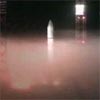
|
 |
OTHER HEADLINES Additional stories today
|
 |
Two more satellites placed into orbit by China -- China launched two new satellites aboard a Long March 2D rocket early Wednesday, marking the country's third launch in less than three weeks.
|
 |
Strange Martian landforms are climate clues, rover traps
One of the most fun and fascinating aspects of space exploration is discovering geological processes and terrain different from those found on our home planet, says Matt Balme, who is leading a team that's decoding Martian mystery landscapes.
 FULL STORY FULL STORY
 |  |
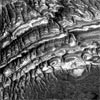
|
 |
Phoenix lander weak but still communicating
NASA's Phoenix Mars Lander has communicated with controllers daily since Oct. 30 through relays to Mars orbiters. Information received over the weekend indicates Phoenix is running out of power each afternoon or evening but reawakening after its solar arrays catch morning sunlight.
 FULL STORY FULL STORY
 |  |

|
 |
NASA's Spitzer gets sneak peak inside comet Holmes
When comet Holmes unexpectedly erupted in 2007, professional and amateur astronomers around the world turned their telescopes toward the spectacular event. Their quest was to find out why the comet had suddenly exploded.
 FULL STORY FULL STORY
 |  |

|
 |
Developing the Falcon 9:
A new rocket in the making
A makeshift rocket suspended more than 10 stories above the Texas prairie is progressing through a step-by-step series of ground tests to prove that SpaceX's new Falcon 9 rocket is ready for launch next year.
 FULL STORY FULL STORY
 |  |
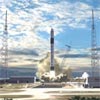
|
 |
Discarded station device
re-enters the atmosphere
A refrigerator-size ammonia tank thrown overboard from the international space station more than a year ago finally fell back to Earth late Sunday, a NASA official said.
 FULL STORY FULL STORY
 |  |

|
 |

Additional coverage for subscribers:
 VIDEO:
SPACEWALK FOOTAGE OF TANK BEING JETTISONED PLAY VIDEO:
SPACEWALK FOOTAGE OF TANK BEING JETTISONED PLAY
 SUBSCRIBE NOW SUBSCRIBE NOW

|
Splashy portrait helps explain how stars form
Different wavelengths of light swirl together like watercolors in a new, ethereal portrait of a bright, star-forming region. The picture combines infrared, visible and X-ray light from the Spitzer Space Telescope, the New Technology Telescope and XMM-Newton.
 FULL STORY FULL STORY
 |  |

|
 |
OTHER HEADLINES Additional stories today
|
 |
MIT researchers find clues to planets' birth -- Meteorites that are among the oldest rocks ever found have provided new clues about the conditions that existed at the beginning of the solar system, solving a longstanding mystery and overturning some accepted ideas about the way planets form.

Neil Armstrong gives papers to Purdue Libraries -- The personal story of the first person to land a craft on the moon and to step on its surface will live forever - in the Purdue University Libraries. Astronaut Neil Armstrong will give his alma mater personal papers that will serve as historic archives and scholarly resources.
|
 |
Endeavour to go Nov. 14; Hubble slips deeper into '09
NASA officials Thursday cleared shuttle Endeavour for launch to the space station on Nov. 14 and also scrapped the possibility of Atlantis flying the final Hubble Space Telescope servicing mission next February, saying the additional time needed to ready replacement electronics for the observatory will push back the launch window until at least May.
 FULL STORY FULL STORY
 ATLANTIS MISSION STATUS CENTER ATLANTIS MISSION STATUS CENTER
 ENDEAVOUR MISSION STATUS CENTER ENDEAVOUR MISSION STATUS CENTER
 STORE: ENDEAVOUR CREW PATCH STORE: ENDEAVOUR CREW PATCH
 STORE: ATLANTIS CREW PATCH STORE: ATLANTIS CREW PATCH
 STORE: STS-125 MISSION PIN STORE: STS-125 MISSION PIN
 STORE: HUBBLE PROGRAM PATCH STORE: HUBBLE PROGRAM PATCH
 |  |

|
 |

Additional coverage for subscribers:
 VIDEO:
NEWS BRIEFING ANNOUNCES ENDEAVOUR LAUNCH DATE PLAY VIDEO:
NEWS BRIEFING ANNOUNCES ENDEAVOUR LAUNCH DATE PLAY
 SUBSCRIBE NOW SUBSCRIBE NOW

|
Cassini's imaging trick to earn halloween treats
Following the success of the "skeet shoot" imaging technique employed for the Enceladus fly-by in August, Cassini will perform the same trick to obtain more high resolution images of the icy satellite this halloween.
 FULL STORY FULL STORY
 |  |
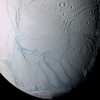
|
 |
Ground controllers listen for response from Mars
NASA's Phoenix Mars Lander, with its solar-electric power shrinking due to shorter daylight hours and a dust storm, did not respond to an orbiter's attempt to communicate with it Wednesday night and Thursday morning. A later session did receive a signal.
 FULL STORY FULL STORY
 |  |

|
 |
MESSENGER unveils more hidden territory on Mercury
Gliding over the battered surface of Mercury for the second time this year, NASA's MESSENGER spacecraft has revealed even more previously unseen real estate on the innermost planet, sending home hundreds of photos and measurements of its surface, atmosphere, and magnetic field.
 FULL STORY FULL STORY
 |  |

|
 |

Additional coverage for subscribers:
 VIDEO:
MESSENGER FLYBY IMAGES AND SCIENCE RESULTS PLAY VIDEO:
MESSENGER FLYBY IMAGES AND SCIENCE RESULTS PLAY
 SUBSCRIBE NOW SUBSCRIBE NOW

|
Martian weather hampers Phoenix spacecraft
NASA's Phoenix Mars Lander entered safe mode late Tuesday in response to a low-power fault brought on by deteriorating weather conditions. While engineers anticipated that a fault could occur due to the diminishing power supply, the lander also unexpectedly switched to the "B" side of its redundant electronics and shut down one of its two batteries.
 FULL STORY FULL STORY
 |  |
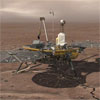
|
 |
Astronauts complete launch countdown rehearsal
Endeavour's seven-person crew climbed aboard the space shuttle at launch pad 39A Wednesday morning for a simulated countdown with ground controllers.
 MISSION STATUS CENTER MISSION STATUS CENTER
 LAUNCH WINDOWS CHART LAUNCH WINDOWS CHART
 COUNTDOWN TIMELINE COUNTDOWN TIMELINE
 ASCENT TIMELINE ASCENT TIMELINE
 FLIGHT PLAN FLIGHT PLAN
 STORE: OFFICIAL STS-126 MISSION PATCH STORE: OFFICIAL STS-126 MISSION PATCH
 |  |
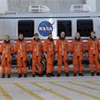
|
 |

Additional coverage for subscribers:
 VIDEO:
ASTRONAUTS REHEARSE QUICK SHUTTLE EXIT PLAY VIDEO:
ASTRONAUTS REHEARSE QUICK SHUTTLE EXIT PLAY
 VIDEO:
CREW BOARDS ENDEAVOUR FOR MOCK COUNTDOWN PLAY VIDEO:
CREW BOARDS ENDEAVOUR FOR MOCK COUNTDOWN PLAY
 VIDEO:
CREW'S TRAINING ON ESCAPE BASKETS AND BUNKER PLAY VIDEO:
CREW'S TRAINING ON ESCAPE BASKETS AND BUNKER PLAY
 VIDEO:
ASTRONAUTS CHAT WITH PRESS AT LAUNCH PAD PLAY VIDEO:
ASTRONAUTS CHAT WITH PRESS AT LAUNCH PAD PLAY
 VIDEO:
CREW TEST DRIVES EMERGENCY PAD ESCAPE VEHICLE PLAY VIDEO:
CREW TEST DRIVES EMERGENCY PAD ESCAPE VEHICLE PLAY
 VIDEO:
COMMANDER AND PILOT PRACTICE LANDING APPROACHES PLAY VIDEO:
COMMANDER AND PILOT PRACTICE LANDING APPROACHES PLAY
 MORE:
STS-126 VIDEO COVERAGE MORE:
STS-126 VIDEO COVERAGE
 NEW:
HIGH DEFINITION VIDEO NEW:
HIGH DEFINITION VIDEO
 SUBSCRIBE NOW SUBSCRIBE NOW

|
Rare event in life of distant quasar revealed
A bit of serendipity has given astronomers a surprise view of a never-before-observed event in the birth of a galaxy, discovering the onset of a huge flow of gas from a quasar.
 FULL STORY FULL STORY
 |  |

|
 |
Fireball captured by
Canadian cameras
For the second time this year The University of Western Ontario's Meteor Group has captured rare footage of a meteor streaking across the sky and possibly falling to the ground.
 FULL STORY FULL STORY
 |  |

|
 |
NASA orbiter reveals details of a wetter Mars
NASA's Mars Reconnaissance Orbiter has observed a new category of minerals spread across large regions of Mars. This discovery suggests that liquid water remained on the planet's surface a billion years later than scientists believed, and it played an important role in shaping the planet's surface and possibly hosting life.
 FULL STORY FULL STORY
 |  |

|
 |
OTHER HEADLINES Additional stories today
|
 |
NASA's Phoenix mission faces survival challenges -- In a race against time and the elements, engineers with NASA's Phoenix Mars Lander mission hope to extend the lander's survival by gradually shutting down some of its instruments and heaters, starting Tuesday.

Arctic sea ice thinning at record rate -- The thickness of sea ice in large parts of the Arctic declined by as much as 19 percent last winter compared to the previous five winters, according to data from ESA's Envisat satellite.

Dust storm predictions to aid health community -- NASA satellite data can improve forecasts of dust storms in the American Southwest in ways that can benefit public health managers. Scientists announced the finding as a five-year NASA-funded project nears its conclusion.
|
 |
Solar system's young twin has two asteroid belts
Astronomers have discovered that the nearby star Epsilon Eridani has two rocky asteroid belts and an outer icy ring, making it a triple-ring system. The inner asteroid belt is a virtual twin of the belt in our solar system, while the outer asteroid belt holds 20 times more material. Moreover, the presence of these three rings of material implies that unseen planets confine and shape them.
 FULL STORY FULL STORY
 |  |
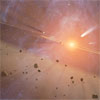
|
 |
COROT directly sees 'Sun-quakes' in other stars
The Earth orbiting COROT satellite has applied the technique of seismology to the study of stellar interiors, probing the interiors of three stars beyond our own Sun for the first time.
 FULL STORY FULL STORY
 |  |

|
 |
Endeavour crew jets into Cape for practice count
A countdown dress rehearsal and emergency training drills are underway at Kennedy Space Center this week to prepare for shuttle Endeavour's scheduled November 14 launch on an equipment-delivery mission to the space station.
 MISSION STATUS CENTER MISSION STATUS CENTER
 |  |

|
 |

Additional coverage for subscribers:
 VIDEO:
CREW ARRIVES AT CAPE FOR PRACTICE COUNTDOWN PLAY VIDEO:
CREW ARRIVES AT CAPE FOR PRACTICE COUNTDOWN PLAY
 VIDEO:
COMMENTS FROM COMMANDER AFTER ARRIVING PLAY VIDEO:
COMMENTS FROM COMMANDER AFTER ARRIVING PLAY
 SUBSCRIBE NOW SUBSCRIBE NOW

|
Italian radar-imaging craft launched by Delta rocket
The third spacecraft for Italy's home-grown Earth observing system, a constellation of radar satellites built for civil and military reconnaissance, received a successful boost into orbit Friday evening by an American Delta 2 rocket.
 MISSION STATUS CENTER MISSION STATUS CENTER
 IMAGES: LAUNCH PHOTO GALLERY IMAGES: LAUNCH PHOTO GALLERY
 |  |

|
 |
OTHER HEADLINES Additional stories today
|
 |
Chinese satellites launched -- China deployed two research satellites early Saturday in a super-secret launch from a space center in the northeastern part of the country.

ESA gravity mission slips to 2009 -- The launch of Europe's Gravity field and steady-state Ocean Circulation Explorer (GOCE) has slipped to February 2009 due to ongoing technical faults with its launcher.

SBIRS satellite completes acoustic testing -- The U.S. Air Force's first geosynchronous Space Based Infrared Systems satellite successfully completed acoustic testing at the development site in Sunnyvale, Calif., bringing unprecedented early missile warning capability one step closer to the warfighter.

SMC to manage ORS Sat-1 mission efforts -- The DoD's Operationally Responsive Space office selected the Space and Missile Systems Center's Space Development and Test Wing, Kirtland AFB, N.M., to manage the development and fielding of the first ORS mission known as ORS Sat-1.
|
 |
Soyuz returns to Earth
Two Russian cosmonauts and an American tourist left the international space station and returned to Earth Thursday night, landing on the steppes of central Asia inside their parachute-equipped descent capsule. Mission Control said the spacecraft did not experience the module separation problem that that impacted the previous two Soyuz landings.
 FULL STORY FULL STORY
 MISSION STATUS CENTER MISSION STATUS CENTER
 |  |
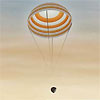
|
 |

Additional coverage for subscribers:
 VIDEO:
SOYUZ TMA-12 SAFELY LANDS IN KAZAKHSTAN PLAY VIDEO:
SOYUZ TMA-12 SAFELY LANDS IN KAZAKHSTAN PLAY
 VIDEO:
CAPSULE UNDOCKS FROM THE SPACE STATION PLAY VIDEO:
CAPSULE UNDOCKS FROM THE SPACE STATION PLAY
 VIDEO:
CREW FAREWELL CEREMONY ABOARD SOYUZ INGRESS PLAY VIDEO:
CREW FAREWELL CEREMONY ABOARD SOYUZ INGRESS PLAY
 VIDEO:
EXPEDITION CHANGE OF COMMAND CEREMONY PLAY VIDEO:
EXPEDITION CHANGE OF COMMAND CEREMONY PLAY
 VIDEO:
JOINT CREW NEWS CONFERENCE ON THE SPACE STATION PLAY VIDEO:
JOINT CREW NEWS CONFERENCE ON THE SPACE STATION PLAY
 MORE: EXPEDITION 17 COVERAGE MORE: EXPEDITION 17 COVERAGE
 MORE: EXPEDITION 18 COVERAGE MORE: EXPEDITION 18 COVERAGE
 SUBSCRIBE NOW SUBSCRIBE NOW

|
Hubble Space Telescope team plots recovery plan
Engineers believe they understand what caused isolated problems during restart of the Hubble Space Telescope's science instruments last week in the wake of an earlier electrical glitch. They have successfully restarted Hubble's B-side payload computer, officials said Thursday, and hope to bring the first of the telescope's major science instruments back on line this weekend.
 FULL STORY FULL STORY
 |  |

|
 |
Shuttle Endeavour travels from one pad to the other
Space shuttle Endeavour switched launch pads at the Kennedy Space Center today, performing a "rollaround" in preparation for its November 14 ascent to the space station.
 MISSION STATUS CENTER MISSION STATUS CENTER
 |  |
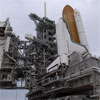
|
 |

Additional coverage for subscribers:
 VIDEO:
ENDEAVOUR SWITCHES PADS PLAY VIDEO:
ENDEAVOUR SWITCHES PADS PLAY
 VIDEO:
ENDEAVOUR FLOW DIRECTOR INTERVIEW PLAY VIDEO:
ENDEAVOUR FLOW DIRECTOR INTERVIEW PLAY
 NEW: HIGH STS-126 DEFINITION VIDEO INDEX NEW: HIGH STS-126 DEFINITION VIDEO INDEX
 SUBSCRIBE NOW SUBSCRIBE NOW

|
Phoenix lander completes Mars soil delivery
NASA's Phoenix Mars Lander has finished scooping soil samples to deliver to its onboard laboratories, and is now preparing to analyse samples already obtained before the Sun completely sets on the mission.
 FULL STORY FULL STORY
 |  |

|
 |
Is Martian moon Phobos a rubble pile?
New Mars Express observations of Martian moon Phobos suggest it could be a rubble pile rather than a single solid object, but questions remain as to where the material actually came from in the first place.
 FULL STORY FULL STORY
 |  |

|
 |
India's first lunar voyage successfully launched
India made the next giant leap in its space program early Wednesday with the launch of the country's first deep space mission, a probe to circle the moon with science gear from India, Europe and the United States.
 FULL STORY FULL STORY
 |  |

|
 |

Additional coverage for subscribers:
 VIDEO:
THE LAUNCH OF CHANDRAYAAN 1 PLAY VIDEO:
THE LAUNCH OF CHANDRAYAAN 1 PLAY
 SUBSCRIBE NOW SUBSCRIBE NOW

|
Hubble engineers not yet sure about cause of glitches
After a weekend of troubleshooting, engineers at NASA's Goddard Space Flight Center have not yet pinned down the cause of two glitches last week that prevented restart of the Hubble Space Telescope's science instruments, officials said Tuesday.
 FULL STORY FULL STORY
 |  |

|
 |
New satellite to study solar system's distant frontier
A small eight-sided satellite has marked the start of a two-year mission of long-distance exploration to study the little-known boundary between the solar system and the galaxy beyond.
 FULL STORY FULL STORY
 MISSION STATUS CENTER MISSION STATUS CENTER
 |  |

|
 |

Additional coverage for subscribers:
 VIDEO:
PEGASUS ROCKET LAUNCHES IBEX PLAY VIDEO:
PEGASUS ROCKET LAUNCHES IBEX PLAY
 SUBSCRIBE NOW SUBSCRIBE NOW

|
Molten planets could point to exo-Earths
Earth-like planets may be easier to spot than planet-hunters originally thought, since their hot, molten surfaces may exist for tens of millions of years, presenting them as glowing beacons as they orbit their parent stars.
 FULL STORY FULL STORY
 |  |

|
 |
Atlantis leaves launch pad to wait out Hubble delay
With its flight to the Hubble Space Telescope postponed until next year, space shuttle Atlantis rolled off its launch pad Monday and is now safely inside the Vehicle Assembly Building.
 MISSION STATUS CENTER MISSION STATUS CENTER
 LIST OF PREVIOUS ROLLBACKS LIST OF PREVIOUS ROLLBACKS
 OUR EARLIER STS-125 COVERAGE OUR EARLIER STS-125 COVERAGE
 PHOTOS: ROLLBACK GALLERY PHOTOS: ROLLBACK GALLERY
 VIDEO: STS-125 VIDEO COVERAGE VIDEO: STS-125 VIDEO COVERAGE
 |  |

|
 |

Additional coverage for subscribers:
 VIDEO:
ATLANTIS LEAVES LAUNCH PAD 39A PLAY VIDEO:
ATLANTIS LEAVES LAUNCH PAD 39A PLAY
 VIDEO:
TIMELAPSE OF THE ROLLBACK GETTING UNDERWAY PLAY VIDEO:
TIMELAPSE OF THE ROLLBACK GETTING UNDERWAY PLAY
 VIDEO:
STS-125 VIDEO INDEX PLAY VIDEO:
STS-125 VIDEO INDEX PLAY
 VIDEO:
STS-125 HIGH DEFINITION VIDEO PLAY VIDEO:
STS-125 HIGH DEFINITION VIDEO PLAY
 SUBSCRIBE NOW SUBSCRIBE NOW

|
Supermassive black holes common in early Universe
Observations of a spectacular collision of galaxies in the distant Universe have revealed that colossal black holes were present when galaxies were just beginning to form.
 FULL STORY FULL STORY
 |  |

|
 |
New Hubble trouble stalls telescope reactivation
Work to switch the Hubble Space Telescope to a backup science data management system after a component failed last month has been interrupted by a pair of on-board glitches during the restart process, officials said Friday.
 FULL STORY FULL STORY
 |  |

|
 |
Fermi telescope discovers first gamma-ray-only pulsar
About three times a second, a 10,000-year-old stellar corpse sweeps a beam of gamma-rays toward Earth. Discovered by NASA's Fermi Gamma-ray Space Telescope, the pulsar is the first one known that only "blinks" in gamma rays.
 FULL STORY FULL STORY
 |  |

|
 |
Newborn Earth-like planets could be easier to find
Hot, young planets may be easier to spot because they stay that way longer than astronomers have thought, according to new work by MIT planetary scientist Linda Elkins-Tanton.
 FULL STORY FULL STORY
 |  |

|
 |
OTHER HEADLINES Additional stories today
|
 |
ATK and USA announce agreement on Ares I subcontract work -- Alliant Techsystems announced Thursday that it reached an agreement with United Space Alliance to perform subcontractor support to ATK for NASA's Ares I launch vehicle.

Main mirror reinstalled in SOFIA observatory -- Engineers and technicians from NASA, the German Space Agency and the Deutsches SOFIA Institut recently reinstalled the German-built primary mirror assembly into NASA's Stratospheric Observatory for Infrared Astronomy (SOFIA).
|
 |
Mars orbiter reveals rare polar impact craters
An odd, solitary hill rising part-way down an eroding slope in Mars' north polar layered terrain may be the remnant of a buried impact crater, suggests a University of Arizona planetary scientist who studied the feature in a new, detailed image from the HiRISE camera onboard NASA's Mars Reconnaissance Orbiter.
 FULL STORY FULL STORY
 |  |
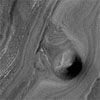
|
 |
Lunar prospecting robot to be tested in Hawaii
The cool, rocky slopes of Mauna Kea, a dormant volcano that is Hawaii's highest mountain, will serve as a stand-in for the moon as researchers from Carnegie Mellon University's Robotics Institute, NASA and other organizations test a robot designed for lunar prospecting.
 FULL STORY FULL STORY
 |  |
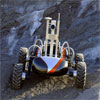
|
 |
1,000 days and counting on voyage of New Horizons
Wednesday marked the 1,000th day of flight for the Pluto-bound New Horizons spacecraft, which launched aboard an Atlas 5 rocket from Cape Canaveral on January 19, 2006. The probe will make the first close encounter with Pluto in 2015, then venture into the Kuiper Belt. Relive the launch with our archived coverage:
 LAUNCH STORY LAUNCH STORY
 MISSION STATUS CENTER MISSION STATUS CENTER
 LAUNCH PHOTO GALLERY LAUNCH PHOTO GALLERY
 FULL VIDEO COVERAGE FULL VIDEO COVERAGE
 |  |
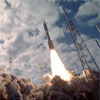
|
 |
Hubble set for critical switch to backup electronics
After two weeks of engineering reviews and discussions, NASA managers have decided to press ahead with plans to put the Hubble Space Telescope into electronic hibernation Wednesday to carry out what amounts to long-distance neurosurgery.
 FULL STORY FULL STORY
 STORE: STS-125 MISSION PIN STORE: STS-125 MISSION PIN
 STORE: ATLANTIS CREW PATCH STORE: ATLANTIS CREW PATCH
 STORE: HUBBLE PROGRAM PATCH STORE: HUBBLE PROGRAM PATCH
 |  |

|
 |
New resident crew arrives aboard the space station
Soyuz commander Yury Lonchakov and his two crewmates, NASA astronaut Mike Fincke and space tourist Richard Garriott, docked with the international space station Tuesday to close out a two-day orbital chase.
 FULL STORY FULL STORY
 PHOTOS: SOYUZ LAUNCH GALLERY PHOTOS: SOYUZ LAUNCH GALLERY
 STORE: MISSION PATCH | LAPEL PIN STORE: MISSION PATCH | LAPEL PIN
 |  |

|
 |

Additional coverage for subscribers:
 VIDEO:
HATCH OPENING AND WELCOMING CEREMONY PLAY VIDEO:
HATCH OPENING AND WELCOMING CEREMONY PLAY
 VIDEO:
SOYUZ DOCKS TO THE SPACE STATION PLAY VIDEO:
SOYUZ DOCKS TO THE SPACE STATION PLAY
 SUBSCRIBE NOW SUBSCRIBE NOW

|
Tides have major impact on planet habitability
Astronomers searching for rocky planets that could support life in other solar systems should look outside, as well as within, the so-called "habitable zone," University of Arizona planetary scientists say.
 FULL STORY FULL STORY
 |  |
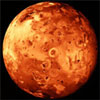
|
 |
Simulations reveal exotic weather on distant worlds
Computer simulations of the atmospheric circulation on Jupiter-like planets around other stars can explain temperature observations of these planets and shed light on the exotic weather experienced by these far-away worlds.
 FULL STORY FULL STORY
 |  |
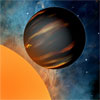
|
 |
Cyclones at Saturn's poles create swirl of mystery
New images from NASA's Cassini spacecraft reveal a giant cyclone at Saturn's north pole, and show that a similarly monstrous cyclone churning at Saturn's south pole is powered by Earth-like storm patterns.
 FULL STORY FULL STORY
 |  |
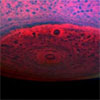
|
 |
Soyuz blasts off with new station crew and tourist
A Russian Soyuz spacecraft rocketed into orbit and set off after the international space station Sunday, carrying two fresh crew members and a U.S. computer game designer who paid some $30 million for a chance to follow in his astronaut father's footsteps.
 FULL STORY FULL STORY
 COUNTDOWN TIMELINE COUNTDOWN TIMELINE
 MISSION PREVIEW STORY MISSION PREVIEW STORY
 PHOTOS: SOYUZ ROLLOUT GALLERY PHOTOS: SOYUZ ROLLOUT GALLERY
 STORE: MISSION PATCH | LAPEL PIN STORE: MISSION PATCH | LAPEL PIN
 |  |

|
 |

Additional coverage for subscribers:
 VIDEO:
POST-LAUNCH INTERVIEW CLIPS PLAY VIDEO:
POST-LAUNCH INTERVIEW CLIPS PLAY
 VIDEO:
FOUR CAMERA REPLAYS OF THE LAUNCH PLAY VIDEO:
FOUR CAMERA REPLAYS OF THE LAUNCH PLAY
 VIDEO:
FULL LAUNCH EXPERIENCE FROM LIFTOFF TO ORBIT PLAY VIDEO:
FULL LAUNCH EXPERIENCE FROM LIFTOFF TO ORBIT PLAY
 VIDEO:
SOYUZ ROCKET BLASTS OFF WITH EXPEDITION 18 PLAY VIDEO:
SOYUZ ROCKET BLASTS OFF WITH EXPEDITION 18 PLAY

 VIDEO:
CROWD WELCOMES CREW AT THE LAUNCH PAD PLAY VIDEO:
CROWD WELCOMES CREW AT THE LAUNCH PAD PLAY
 VIDEO:
CREW DEPARTS SITE 254 FOR LAUNCH PAD PLAY VIDEO:
CREW DEPARTS SITE 254 FOR LAUNCH PAD PLAY
 VIDEO:
ADDRESS FROM RUSSIAN STATE COMMISSION PLAY VIDEO:
ADDRESS FROM RUSSIAN STATE COMMISSION PLAY
 VIDEO:
CREW MEMBERS DON THEIR SOKOL SPACESUITS PLAY VIDEO:
CREW MEMBERS DON THEIR SOKOL SPACESUITS PLAY
 VIDEO:
LAUNCH MORNING TRADITIONS AT CREW QUARTERS PLAY VIDEO:
LAUNCH MORNING TRADITIONS AT CREW QUARTERS PLAY

 VIDEO:
SOYUZ MOVED TO LAUNCH PAD FOR EXPEDITION 18 PLAY VIDEO:
SOYUZ MOVED TO LAUNCH PAD FOR EXPEDITION 18 PLAY
 VIDEO:
INTERVIEW WITH ISS DEPUTY PROGRAM MANAGER PLAY VIDEO:
INTERVIEW WITH ISS DEPUTY PROGRAM MANAGER PLAY
 VIDEO:
INTERVIEW WITH FLIGHT CREW OPS DIRECTOR PLAY VIDEO:
INTERVIEW WITH FLIGHT CREW OPS DIRECTOR PLAY
 VIDEO:
ASSEMBLY OF SOYUZ ROCKET COMPLETED PLAY VIDEO:
ASSEMBLY OF SOYUZ ROCKET COMPLETED PLAY

 VIDEO:
EXPEDITION 18 PRE-FLIGHT MISSION BRIEFING PLAY VIDEO:
EXPEDITION 18 PRE-FLIGHT MISSION BRIEFING PLAY
 VIDEO:
ISS PROGRAM MANAGER UPDATES SOYUZ INVESTIGATION PLAY VIDEO:
ISS PROGRAM MANAGER UPDATES SOYUZ INVESTIGATION PLAY
 SUBSCRIBE NOW SUBSCRIBE NOW

|
Amid issues, Mars Science Lab still targets '09 launch
NASA decided on Friday to keep the agency's next mission to Mars on track for launch next year, but officials could not say how much the move would cost or where the money would come from.
 FULL STORY FULL STORY
 |  |

|
 |
MESSENGER reveals more of Mercury's secrets
The MESSENGER spacecraft successfully completed its second flyby of the innermost planet this week, unveiling another 30 percent of the planet's surface in over 1,200 high resolution photos.
 FULL STORY FULL STORY
 |  |

|
 |
Pegasus rocket headed to Pacific isle for NASA launch
An Orbital Sciences Pegasus rocket with a NASA satellite nestled in its nose cone will fly away from California's Vandenberg Air Force Base on Saturday, but the winged booster won't be soaring into space.
 FULL STORY FULL STORY
 PANORAMAS AND PICTURES PANORAMAS AND PICTURES
 OUR PEGASUS ARCHIVE OUR PEGASUS ARCHIVE
 |  |

|
 |
Mars Odyssey shifting orbit for extended mission
The longest-serving of six spacecraft now studying Mars is up to new tricks for a third two-year extension of its mission to examine the most Earthlike of known foreign planets.
 FULL STORY FULL STORY
 |  |
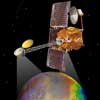
|
 |
Year's final Ariane 5 launch to carry two Eutelsat craft
The unavailability of a U.S.-built communications satellite will cause Arianespace to miss its goal of a record seven Ariane 5 launches this year, company officials said.
 FULL STORY FULL STORY
 OUR ARIANE ARCHIVE OUR ARIANE ARCHIVE
 |  |

|
 |
Phoenix digs into darkness
As the Sun falls further and further below the horizon in northern hemisphere Mars, Phoenix continues to dig soil and deliver samples to its onboard laboratory for analysis.
 FULL STORY FULL STORY
 |  |

|
 |
Saturn moon flyby will look at solar system's history
NASA's Cassini spacecraft is scheduled to fly within 16 miles of Saturn's moon Enceladus on Thursday and measure molecules in its space environment that could give insight into the history of the solar system.
 FULL STORY FULL STORY
 |  |

|
 |
Stars stop forming when big galaxies collide
Astronomers studying new images of a nearby galaxy cluster have found evidence that high-speed collisions between large elliptical galaxies may prevent new stars from forming, according to a paper to be published in a November.
 FULL STORY FULL STORY
 |  |
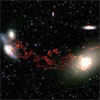
|
 |
OTHER HEADLINES Additional stories today
|
 |
Outer solar system not as crowded as astronomers thought -- When a treasure hunt comes up empty-handed, the hunters are understandably disappointed. But when astronomers don't find what they are looking for, the defeat can provide as much information as a successful search.
|
 |
Air Force says next weather satellite not needed yet
With the U.S. military's polar-orbiting weather satellite constellation healthy and working well, the Air Force will forego the planned November launching of a replacement craft and instead look for another liftoff opportunity next summer or even later.
 FULL STORY FULL STORY
 |  |

|
 |
Small asteroid burns up in Earth's atmosphere
According to predictions, the boulder-sized asteroid 2008TC3 exploded in the Earth's atmosphere at 0246 GMT above northern Sudan Tuesday morning.
 FULL STORY FULL STORY
 |  |

|
 |
Discovery stirs exoplanet classification rethink
COROT has discovered a massive planet-sized object orbiting its parent star closely, unlike anything ever spotted before. It is so exotic, that scientists are unsure as to whether this oddity is actually a planet or a failed star.
 FULL STORY FULL STORY
 |  |
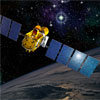
|
 |
Keck finds cloudy weather on failed stars
A team of astronomers using one of the Keck telescopes on Mauna Kea has found evidence for cloudy weather on two failed stars.
 FULL STORY FULL STORY
 |  |

|
 |
OTHER HEADLINES Additional stories today
|
 |
Explanation proposed for puzzling night-shining clouds -- An explanation for a strange property of noctilucent clouds -- thin, wispy clouds hovering at the edge of space at 85 km altitude -- has been proposed by an experimental plasma physicist at Caltech, possibly laying to rest a decades-long mystery.
|
 |
NASA's MESSENGER probe returns to Mercury
A NASA spacecraft conducts the second of three flybys of Mercury on Monday to photograph most of its remaining unseen surface and collect science data.
 FULL STORY FULL STORY
 |  |
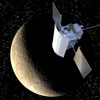
|
 |
Landscaping the cosmos
The Hubble Heritage Project celebrates its 10th anniversary this month with a beautiful landscape image of the "hills" and "valleys" of gas and dust in the giant gaseous cavity of star-forming region NGC 3324.
 FULL STORY FULL STORY
 |  |

|
 |
NASA shoots for Nov. 14 launch of shuttle Endeavour
Shuttle program managers are now targeting Nov. 14 for launch of the Endeavour on a space station repair and resupply mission. No target dates have yet been set for shuttle Atlantis' launch on a now-delayed flight to service the Hubble Space Telescope, but it appears the earliest possible launch slot is mid February.
 FULL STORY FULL STORY
 STS-126: ENDEAVOUR FLIGHT PLAN STS-126: ENDEAVOUR FLIGHT PLAN
 STS-126: ENDEAVOUR LAUNCH WINDOWS STS-126: ENDEAVOUR LAUNCH WINDOWS
 NEW: HIGH DEFINITION VIDEO NEW: HIGH DEFINITION VIDEO
 |  |

|
 |

Additional coverage for subscribers:
 VIDEO:
INTERVIEW WITH SPACE STATION'S EXPEDITION 17 CREW PLAY VIDEO:
INTERVIEW WITH SPACE STATION'S EXPEDITION 17 CREW PLAY
 VIDEO:
ENDEAVOUR COMMANDER AND PILOT PRACTICE LANDINGS PLAY VIDEO:
ENDEAVOUR COMMANDER AND PILOT PRACTICE LANDINGS PLAY
 SUBSCRIBE NOW SUBSCRIBE NOW

|
Worlds in collision
Two terrestrial planets orbiting a mature sun-like star some 300 light-years from Earth recently suffered a violent collision. "It's as if Earth and Venus collided with each other," astronomers say.
 FULL STORY FULL STORY
 |  |

|
 |
Magnetic field in distant galaxy produces a surprise
Using a powerful radio telescope to peer into the early universe, a team of California astronomers has obtained the first direct measurement of a nascent galaxy's magnetic field as it appeared 6.5 billion years ago.
 FULL STORY FULL STORY
 |  |
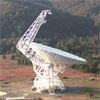
|
 |
Sharpening up Jupiter
A record two-hour observation of Jupiter using a superior technique to remove atmospheric blur has produced the sharpest whole-planet picture ever taken from the ground. The 265 snapshots reveal changes in Jupiter's smog-like haze, probably in response to a planet-wide upheaval more than a year ago.
 FULL STORY FULL STORY
 |  |
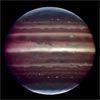
|
 |
After lengthy delay, rocket finally allowed to launch
A Thai remote sensing satellite blasted off atop a converted ballistic missile Wednesday and finally reached orbit after being grounded for nearly a year due to political wrangling between Russia and Kazakhstan.
 FULL STORY FULL STORY
 |  |

|
 |
'Wild cousin' in family tree of exploding stars
Astronomers may have discovered the relative of a freakishly behaving exploding star once thought to be the only one of its kind. For more than two decades, astronomers have intensively studied supernova 1987A, an exploding star that had behaved like no other. Instead of growing dimmer with time, 1987A has grown brighter at X-ray and radio wavelengths.
 FULL STORY FULL STORY
 |  |
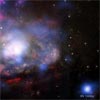
|
 |
Infrared echoes give Spitzer supernova flashback
Hot spots near the shattered remains of an exploded star are echoing the blast's first moments, say scientists using data from NASA's Spitzer Space Telescope.
 FULL STORY FULL STORY
 |  |
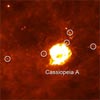
|
 |
When it comes to galaxies, diversity is everywhere
There's an old saying in astronomy: "Galaxies are like people. They're only normal until you get to know them." That view is supported by a group of astronomers after using NASA's Hubble Space Telescope to study a large number of galaxies in our cosmic backyard.
 FULL STORY FULL STORY
 |  |
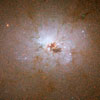
|
 |
Orbiter reveals rock fracture plumbing on Mars
NASA's Mars Reconnaissance Orbiter has revealed hundreds of small fractures exposed on the Martian surface that billions of years ago directed flows of water through underground Martian sandstone.
 FULL STORY FULL STORY
 |  |

|
 |
OTHER HEADLINES Additional stories today
|
 |
Kepler spacecraft baked and ready for more tests -- NASA's planet-hunting Kepler mission, scheduled to launch in 2009, has survived an extreme temperature test. The thermal vacuum test is part of a series of environmental tests the spacecraft will undergo before it blasts into space aboard a Delta 2 rocket from Cape Canaveral.

Cabana to succeed Parsons as Kennedy Space Center director -- NASA announced Tuesday that William Parsons, director of the Kennedy Space Center in Florida, is leaving the agency in mid-October to pursue opportunities in the private sector. Parsons will be succeeded by former astronaut Robert Cabana, currently director of the Stennis Space Center in Mississippi.

Crew picked for Discovery's STS-129 mission -- NASA has assigned the crew for space shuttle Discovery's STS-129 mission. The flight will deliver two experiment racks to the International Space Station. Marine Col. Charlie Hobaugh will command the mission, which is targeted to launch in October 2009.
|
 |
Failure aboard Hubble puts shuttle flight on hold
A critical equipment failure aboard the Hubble Space Telescope on the eve of a long-awaited fifth and final shuttle servicing mission put astronomical observations on hold and forced NASA managers Monday to delay the mid-October flight of Atlantis, likely until next February or even later.
 FULL STORY - updated @ 8:25 p.m. FULL STORY - updated @ 8:25 p.m.
 STORE: STS-125 MISSION PIN STORE: STS-125 MISSION PIN
 STORE: ATLANTIS CREW PATCH STORE: ATLANTIS CREW PATCH
 STORE: HUBBLE PROGRAM PATCH STORE: HUBBLE PROGRAM PATCH
 |  |

|
 |

Additional coverage for subscribers:
 VIDEO:
STS-125 VIDEO INDEX PLAY VIDEO:
STS-125 VIDEO INDEX PLAY
 VIDEO:
STS-125 HIGH DEFINITION VIDEO PLAY VIDEO:
STS-125 HIGH DEFINITION VIDEO PLAY
 SUBSCRIBE NOW SUBSCRIBE NOW

|
Europe's station resupply ship concludes mission
An historic chapter in Europe's space program came to a close Monday when Jules Verne, a human-rated supply ship for the international space station, completed its mission with a fiery suicidal plunge into Earth's atmosphere.
 FULL STORY FULL STORY
 |  |
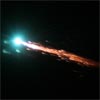
|
 |

Additional coverage for subscribers:
 VIDEO:
ATV REENTRY ANIMATION AND UNDOCKING PLAY VIDEO:
ATV REENTRY ANIMATION AND UNDOCKING PLAY
 SUBSCRIBE NOW SUBSCRIBE NOW

|
More results from Mars lander suggest liquid past
NASA's Phoenix Mars Lander has detected snow falling from Martian clouds, and spacecraft soil tests experiments also have provided evidence of past interaction between minerals and liquid water, processes that occur on Earth.
 FULL STORY FULL STORY
 |  |

|
 |

Additional coverage for subscribers:
 VIDEO:
MONDAY'S PHOENIX MISSION AND SCIENCE UPDATE PLAY VIDEO:
MONDAY'S PHOENIX MISSION AND SCIENCE UPDATE PLAY
 MORE: PHOENIX VIDEO COVERAGE MORE: PHOENIX VIDEO COVERAGE
 SUBSCRIBE NOW SUBSCRIBE NOW

|
Sweet success at last for SpaceX and Falcon 1 rocket
The Falcon 1 booster redeemed itself Sunday with an electrifying launch that put an exclamation point on six years of hard work and disappointment for SpaceX, a startup company chartered to revolutionize space travel.
 FULL STORY FULL STORY
 MISSION STATUS CENTER - live updates! MISSION STATUS CENTER - live updates!
 EARLIER PREVIEW STORY EARLIER PREVIEW STORY
 FALCON 1'S LAUNCH TIMELINE FALCON 1'S LAUNCH TIMELINE
 FACTORY TOUR: PANORAMAS AND PHOTOS FACTORY TOUR: PANORAMAS AND PHOTOS
 ARCHIVE: FLIGHT 1 IN MARCH 2006 ARCHIVE: FLIGHT 1 IN MARCH 2006
 ARCHIVE: FLIGHT 2 IN MARCH 2007 ARCHIVE: FLIGHT 2 IN MARCH 2007
 ARCHIVE: FLIGHT 3 IN AUG. 2008 ARCHIVE: FLIGHT 3 IN AUG. 2008
 |  |

|
 |
Shenzhou spacecraft lands safely after three-day flight
Three astronauts strapped inside the Shenzhou 7 capsule plummeted through the atmosphere and parachuted to a pinpoint landing in northern China Sunday to complete a three-day mission that included the country's first spacewalk.
 FULL STORY FULL STORY
 EARLIER STORY EARLIER STORY
 |  |
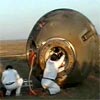
|
 |
China accomplishes its historic first spacewalk
A pair of Chinese astronauts suited up and floated through the hatch of the Shenzhou 7 spacecraft Saturday for a dramatic 14-minute excursion in space, completing China's historic first spacewalk.
 FULL STORY FULL STORY
 |  |
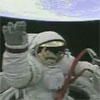
|
 |
Station to get new ring for damaged solar rotary joint
Engineers believe they have finally pinned down the cause of metallic contamination and degradation in a critical solar array rotary joint mechanism aboard the international space station, Program Manager Michael Suffredini said Thursday. The problem apparently was caused by the premature loss or breakdown of a gold plating intended to lubricate the joint.
 FULL STORY FULL STORY
 |  |
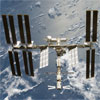
|
 |

Additional coverage for subscribers:
 VIDEO:
ISS PROGRAM MANAGER DESCRIBES SARJ REPAIR PLAN PLAY VIDEO:
ISS PROGRAM MANAGER DESCRIBES SARJ REPAIR PLAN PLAY
 VIDEO:
ISS PROGRAM MANAGER DISCUSSES RADIATOR DAMAGE PLAY VIDEO:
ISS PROGRAM MANAGER DISCUSSES RADIATOR DAMAGE PLAY
 VIDEO:
EXPEDITION 18 PRE-FLIGHT MISSION BRIEFING PLAY VIDEO:
EXPEDITION 18 PRE-FLIGHT MISSION BRIEFING PLAY
 SUBSCRIBE NOW SUBSCRIBE NOW

|
Russians believe cause of Soyuz problems found
Russian troubleshooters believe electrical arcing between the space environment and the international space station most likely caused recent problems with explosive bolts used to separate Soyuz re-entry vehicles just before atmospheric entry.
 FULL STORY FULL STORY
 |  |

|
 |

Additional coverage for subscribers:
 VIDEO:
ISS PROGRAM MANAGER UPDATES SOYUZ INVESTIGATION PLAY VIDEO:
ISS PROGRAM MANAGER UPDATES SOYUZ INVESTIGATION PLAY

 VIDEO:
DEMONSTRATION OF PYROBOLT REMOVAL TASK PLAY VIDEO:
DEMONSTRATION OF PYROBOLT REMOVAL TASK PLAY
 VIDEO:
NASA FLIGHT DIRECTOR SUMMARIZES SPACEWALK PLAY VIDEO:
NASA FLIGHT DIRECTOR SUMMARIZES SPACEWALK PLAY
 VIDEO:
RUSSIAN FLIGHT DIRECTOR GIVES CREW A PEP TALK PLAY VIDEO:
RUSSIAN FLIGHT DIRECTOR GIVES CREW A PEP TALK PLAY
 VIDEO:
FIRST SPACEWALKER EMERGES FROM THE STATION PLAY VIDEO:
FIRST SPACEWALKER EMERGES FROM THE STATION PLAY
 VIDEO:
VOLKOV HANDS TOOL BAGS OUT OF THE AIRLOCK PLAY VIDEO:
VOLKOV HANDS TOOL BAGS OUT OF THE AIRLOCK PLAY
 VIDEO:
TELESCOPING STRELA BOOM EXTENDED TO REACH SOYUZ PLAY VIDEO:
TELESCOPING STRELA BOOM EXTENDED TO REACH SOYUZ PLAY
 VIDEO:
KONONENKO BEGINS CLOSE-UP INSPECTIONS OF SOYUZ PLAY VIDEO:
KONONENKO BEGINS CLOSE-UP INSPECTIONS OF SOYUZ PLAY
 VIDEO:
PROTECTIVE COVERS PLACES OVER THRUSTER NOZZLES PLAY VIDEO:
PROTECTIVE COVERS PLACES OVER THRUSTER NOZZLES PLAY
 VIDEO:
WATCH AS THE HOLE IN SOYUZ INSULATION IS CUT PLAY VIDEO:
WATCH AS THE HOLE IN SOYUZ INSULATION IS CUT PLAY
 VIDEO:
PYROBOLT REMOVED AND PLACED IN BLAST-PROOF CASE PLAY VIDEO:
PYROBOLT REMOVED AND PLACED IN BLAST-PROOF CASE PLAY
 VIDEO:
AIRLOCK HATCH CLOSED TO CONCLUDE THE SPACEWALK PLAY VIDEO:
AIRLOCK HATCH CLOSED TO CONCLUDE THE SPACEWALK PLAY
 SUBSCRIBE NOW SUBSCRIBE NOW

|
China launches three-man crew on spacewalk mission
Three Chinese astronauts blasted off on the country's third human space voyage Thursday, beginning a mission that will include the Chinese space program's first spacewalk.
 LAUNCH STORY LAUNCH STORY
 ORBIT MANEUVER COMPLETED ORBIT MANEUVER COMPLETED
 |  |
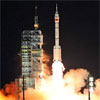
|
 |
First RS-68A hot-fire engine test a success
United Launch Alliance has announced the successful first hot-firing of the new Pratt & Whitney Rocketdyne RS-68A engine that will be used to power a future upgraded version of the Delta 4 Heavy Lift launch vehicle.
 FULL STORY FULL STORY
 |  |
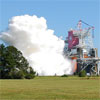
|
 |
Russia launches three more navigation satellites
A Proton rocket hauled three new satellites into orbit Thursday to replenish Russia's space-based navigation system, marking the heavy-lift booster's second flight in less than a week.
 FULL STORY FULL STORY
 |  |
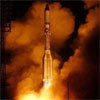
|
 |
Hurricane Ike forces delay of next two shuttle launches
Shuttle program managers Wednesday ordered minor, expected delays for the next two shuttle missions - an October flight to service the Hubble Space Telescope and a November space station assembly mission - primarily because of training time lost in the aftermath of Hurricane Ike.
 FULL STORY FULL STORY
 STS-125: ATLANTIS FLIGHT PLAN STS-125: ATLANTIS FLIGHT PLAN
 STS-125: ATLANTIS LAUNCH WINDOWS STS-125: ATLANTIS LAUNCH WINDOWS
 STS-126: ENDEAVOUR FLIGHT PLAN STS-126: ENDEAVOUR FLIGHT PLAN
 STS-126: ENDEAVOUR LAUNCH WINDOWS STS-126: ENDEAVOUR LAUNCH WINDOWS
 NEW: HIGH DEFINITION VIDEO NEW: HIGH DEFINITION VIDEO
 |  |

|
 |

Additional coverage for subscribers:
 VIDEO:
ASTRONAUTS REHEARSE QUICK SHUTTLE EXIT PLAY VIDEO:
ASTRONAUTS REHEARSE QUICK SHUTTLE EXIT PLAY
 VIDEO:
CREW BOARDS ATLANTIS FOR MOCK COUNTDOWN PLAY VIDEO:
CREW BOARDS ATLANTIS FOR MOCK COUNTDOWN PLAY
 VIDEO:
ASTRONAUTS DON SUITS FOR PRACTICE COUNTDOWN PLAY VIDEO:
ASTRONAUTS DON SUITS FOR PRACTICE COUNTDOWN PLAY
 VIDEO:
CREW'S TRAINING ON ESCAPE BASKETS AND BUNKER PLAY VIDEO:
CREW'S TRAINING ON ESCAPE BASKETS AND BUNKER PLAY
 SUBSCRIBE NOW SUBSCRIBE NOW

|
House passes waiver to buy more Soyuz flights
The U.S. House of Representatives Wednesday, as part of a continuing resolution needed to fund government operations past the upcoming elections and into 2009, extended a waiver to the Iran, North Korea and Syria Nonproliferation Act that would allow NASA to purchase seats on Russian Soyuz spacecraft after the current waiver expires at the end of 2011.
 FULL STORY FULL STORY
 |  |

|
 |
China poised for its next step in human spaceflight
China will send its third human space mission into orbit Thursday on a flight that is slated to include the emergent space program's first spacewalk this weekend, officials announced Wednesday.
 FULL STORY FULL STORY
 |  |

|
 |
Sea Launch deploys new Galaxy for North America
A communications satellite that will broadcast a range of international television channels to North America was sent into space Wednesday to replace the aging spacecraft currently doing that job.
 FULL STORY FULL STORY
 |  |
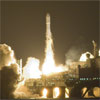
|
 |
Commander says crew needs to make up training
Atlantis commander Scott Altman said Tuesday his crew lost a week of training time because of Hurricane Ike, "so you come to the question of either slipping the launch or cutting out events."
 FULL STORY FULL STORY
 OUR STS-125 ARCHIVE OUR STS-125 ARCHIVE
 |  |

|
 |

Additional coverage for subscribers:
 VIDEO:
ASTRONAUTS CHAT WITH PRESS AT LAUNCH PAD PLAY VIDEO:
ASTRONAUTS CHAT WITH PRESS AT LAUNCH PAD PLAY
 VIDEO:
CREW TEST DRIVES EMERGENCY PAD ESCAPE VEHICLE PLAY VIDEO:
CREW TEST DRIVES EMERGENCY PAD ESCAPE VEHICLE PLAY
 VIDEO:
COMMANDER AND PILOT PRACTICE LANDING APPROACHES PLAY VIDEO:
COMMANDER AND PILOT PRACTICE LANDING APPROACHES PLAY
 SUBSCRIBE NOW SUBSCRIBE NOW

|
Ulysses reveals Sun is blowing weaker solar wind
Surprising data from NASA's Ulysses spacecraft show that the solar wind -- the continuous outflow of plasma and magnetic fields from the Sun's atmosphere into interplanetary space -- is only about three fourths as strong as it was a decade ago, during the last interval of low solar activity.
 FULL STORY FULL STORY
 |  |
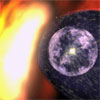
|
 |
Cosmic 'dark flow' detected across billions of light years
Using data from NASA's Wilkinson Microwave Anisotropy Probe, scientists have identified an unexpected motion in distant galaxy clusters. The cause, they suggest, is the gravitational attraction of matter that lies beyond the observable universe.
 FULL STORY FULL STORY
 |  |

|
 |
Opportunity rover to head toward giant crater
NASA's Mars Rover Opportunity is setting its sights on a crater more than 20 times larger than its home for the past two years. To reach the crater the rover team calls Endeavour, Opportunity would need to drive approximately 7 miles to the southeast, matching the total distance it has traveled since landing on Mars in early 2004.
 FULL STORY FULL STORY
 |  |
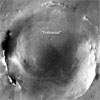
|
 |
Three-dimensional look at Venus' raging winds
ESA's Venus Express spacecraft, the most powerful atmospheric investigator ever sent to Venus, has put together the first 3D picture of the fierce winds that roar across the planet's southern hemisphere.
 FULL STORY FULL STORY
 |  |

|
 |
Launch slip likely for Atlantis' flight to Hubble
The Atlantis astronauts are reviewing emergency procedures at the Kennedy Space Center before participating in a dress-rehearsal countdown Wednesday. Launch on a high-profile mission to service and upgrade the Hubble Space Telescope remains targeted for Oct. 10, but sources say the flight is expected to slip a few days because of training and hardware processing issues.
 FULL STORY FULL STORY
 |  |

|
 |
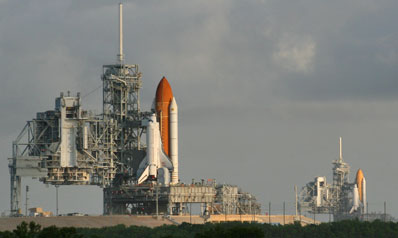
For a few hours on Saturday morning, a true rarity occurred for NASA's space shuttle program as both Atlantis and Endeavour were fully visible on their Kennedy Space Center launch pads with the rotating service gantries open.
 PANORAMAS | PHOTOS PANORAMAS | PHOTOS
 |
 |

Additional coverage for subscribers:
 VIDEO:
AERIAL VIEWS OF ATLANTIS AND ENDEAVOUR PLAY | HI-DEF VIDEO:
AERIAL VIEWS OF ATLANTIS AND ENDEAVOUR PLAY | HI-DEF
 VIDEO:
ENDEAVOUR AT SUNRISE ON LAUNCH PAD 39B PLAY | HI-DEF VIDEO:
ENDEAVOUR AT SUNRISE ON LAUNCH PAD 39B PLAY | HI-DEF
 VIDEO:
AERIAL VIEWS OF ENDEAVOUR AFTER ROLLOUT PLAY | HI-DEF VIDEO:
AERIAL VIEWS OF ENDEAVOUR AFTER ROLLOUT PLAY | HI-DEF
 VIDEO:
ENDEAVOUR ROLLS FROM VAB TO LAUNCH PAD PLAY | HI-DEF VIDEO:
ENDEAVOUR ROLLS FROM VAB TO LAUNCH PAD PLAY | HI-DEF
 VIDEO:
TIME-LAPSE MOVIE OF ARRIVAL AT PAD 39B PLAY VIDEO:
TIME-LAPSE MOVIE OF ARRIVAL AT PAD 39B PLAY
 VIDEO:
TIME-LAPSE MOVIE OF ENDEAVOUR LEAVING VAB PLAY VIDEO:
TIME-LAPSE MOVIE OF ENDEAVOUR LEAVING VAB PLAY
 SUBSCRIBE NOW SUBSCRIBE NOW

|
Atlantis crew at the Cape for practice countdown
The astronauts to service the Hubble Space Telescope next month flew into Kennedy Space Center on Sunday afternoon for this week's countdown dress rehearsal and emergency training drills at launch pad 39A.
 MISSION STATUS CENTER - updates! MISSION STATUS CENTER - updates!
 OUR STS-125 ARCHIVE OUR STS-125 ARCHIVE
 |  |

|
 |

Additional coverage for subscribers:
 VIDEO:
CREW ARRIVES AT CAPE FOR PRACTICE COUNTDOWN PLAY VIDEO:
CREW ARRIVES AT CAPE FOR PRACTICE COUNTDOWN PLAY
 VIDEO:
COMMENTS FROM COMMANDER AFTER ARRIVING PLAY VIDEO:
COMMENTS FROM COMMANDER AFTER ARRIVING PLAY
 SUBSCRIBE NOW SUBSCRIBE NOW

|
Shenzhou 7 put on pad for China's next manned flight
The 19-story rocket that will dispatch three Chinese astronauts into the final frontier next week was moved from a massive assembly building to the launch pad Saturday.
 FULL STORY FULL STORY
 |  |

|
 |
Shuttle Endeavour rolls to the launch pad 39B
Following through on its extraordinary plan to have a quick-response space shuttle poised to launch if the Atlantis crew needs rescuing during next month's Hubble Space Telescope servicing mission, NASA rolled sistership Endeavour to the other Kennedy Space Center pad Friday morning.
 MISSION STATUS CENTER - updates! MISSION STATUS CENTER - updates!
 PHOTO GALLERY: ENDEAVOUR ROLLS TO PAD PHOTO GALLERY: ENDEAVOUR ROLLS TO PAD
 LIST OF SHUTTLES ON BOTH PADS LIST OF SHUTTLES ON BOTH PADS
 STORE: OFFICIAL STS-126 MISSION PATCH STORE: OFFICIAL STS-126 MISSION PATCH
 |  |
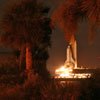
|
 |
Swift catches farthest-ever gamma-ray burst
NASA's Swift satellite has found the most distant gamma-ray burst ever detected. The blast arose from an exploding star 12.8 billion light-years away.
 FULL STORY FULL STORY
 |  |
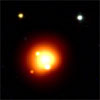
|
 |
Unexpected mixing of solar system shown in comet dust
Chemical clues from a comet's halo are challenging common views about the history and evolution of the solar system and showing it may be more mixed-up than previously thought.
 FULL STORY FULL STORY
 |  |
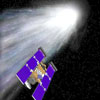
|
 |
Water present on Mars billion years longer
New research suggests that water may have played a role in shaping parts of the Martian landscape for a billion years longer than previous studies have proposed.
 FULL STORY FULL STORY
 |  |

|
 |
Final packing underway for Hubble payloads
Technicians have cleaned up contamination concerns on a carrier housing fresh batteries and a new camera bound for the Hubble Space Telescope. The payloads for the servicing mission will be transported to space shuttle Atlantis at launch pad 39A on Saturday night.
 EARLIER STORY EARLIER STORY
 LAUNCH WINDOWS CHART LAUNCH WINDOWS CHART
 STS-125 MASTER FLIGHT PLAN STS-125 MASTER FLIGHT PLAN
 OUR SPACE SHUTTLE ARCHIVE OUR SPACE SHUTTLE ARCHIVE
 STORE: OFFICIAL STS-125 MISSION PATCH STORE: OFFICIAL STS-125 MISSION PATCH
 |  |

|
 |
Johnson Space Center to reopen Monday after Ike
NASA's Johnson Space Center in Houston is scheduled to reopen Monday, Sept. 22, ending its closure related to Hurricane Ike. Johnson shut down Sept. 11 as Ike approached the Texas coast. The Mission Control Center and other key facilities are largely unscathed. However, some center buildings suffered roof, window and facade damage. Several light poles were downed, as were a number of trees. The damage assessment and cleanup continues.
 |  |

|
 |
Russian freighter finally docks to station
After loitering in orbit for the past week because Hurricane Ike closed Houston's mission control, a Russian-made Progress resupply ship successfully docked to the international space station at 2:43 p.m. EDT Wednesday. The backup control center in Huntsville is being used while Houston recovers from the storm.
 EARLIER STORY EARLIER STORY
 |  |
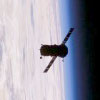
|
 |
New Mars mission picked to study planet's atmosphere
NASA has selected a Mars robotic mission that will provide information about the Red Planet's atmosphere, climate history and potential habitability in greater detail than ever before. The MAVEN spacecraft will be launched in late 2013.
 FULL STORY FULL STORY
 |  |
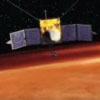
|
 |

Additional coverage for subscribers:
 VIDEO:
AN EARLY LOOK AT THE MAVEN MISSION TO MARS PLAY VIDEO:
AN EARLY LOOK AT THE MAVEN MISSION TO MARS PLAY
 SUBSCRIBE NOW SUBSCRIBE NOW

|
Hubble Space Telescope sees overlapping galaxies
NASA's Hubble Space Telescope has captured a rare alignment between two spiral galaxies. The outer rim of a small, foreground galaxy is silhouetted in front of a larger background galaxy. Skeletal tentacles of dust can be seen extending beyond the small galaxy's disk of starlight.
 FULL STORY FULL STORY
 |  |

|
 |
OTHER HEADLINES Additional stories today
|
 |
Minotaur 4 pathfinder completed at Vandenberg -- Orbital Sciences has completed the full-scale "pathfinder" ground operations of the Minotaur 4 space launch vehicle in preparation for its inaugural flight that is currently scheduled to take place in early 2009.
|
 |
Likely planet imaged around a Sun-like star
Astronomers have unveiled what is likely the first picture of a planet around a normal star similar to the Sun. The images show the young star, which lies about 500 light-years from Earth, and a companion with a mass about eight times that of Jupiter.
 FULL STORY FULL STORY
 |  |
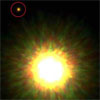
|
 |
Our star could be far from where it started
A long-standing scientific belief holds that stars tend to hang out in the same general part of a galaxy where they originally formed. Some astrophysicists have recently questioned whether that is true, and now new simulations show that, at least in galaxies similar to our own Milky Way, stars such as the sun can migrate great distances.
 FULL STORY FULL STORY
 |  |
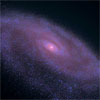
|
 |
1843 stellar eruption may be new type of explosion
Scientists have shown that the outbursts of Eta Carinae, the Milky Way's biggest, brightest and perhaps most studied star after the Sun, could be driven by an entirely new type of stellar explosion that is fainter than a typical supernova.
 FULL STORY FULL STORY
 |  |

|
 |
Mission control appears to escape major damage
A rideout team at the Johnson Space Center endured a virtual direct hit from Hurricane Ike early Saturday, firing up generators to keep sensitive computer and communications gear in mission control on line when power was lost. A detailed assessment is not yet available, but officials said no injuries were reported and the space center appeared to escape major damage.
 FULL STORY FULL STORY
 |  |
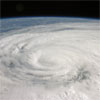
|
 |
Phoenix lander sees, feels Martian whirlwinds in action
After three months of performing experiments in the north polar regions of Mars, NASA's Phoenix Lander has finally seen dust devils, and sensed a dip in air pressure as one passed nearby.
 FULL STORY FULL STORY
 |  |

|
 |
New gear for Hubble readied for launch pad
After an intense summer of long hours and tight schedules, ground technicians packing the new science instruments and equipment for launch to the Hubble Space Telescope are nearing the finish line.
 MISSION STATUS CENTER - updates! MISSION STATUS CENTER - updates!
 OUR STS-125 ARCHIVE OUR STS-125 ARCHIVE
 |  |

|
 |
Endeavour moved from hangar to assembly building
In preparation for its role as a standby rescue craft during next month's Hubble Space Telescope servicing mission and the scheduled November logistics run to the international space station, shuttle Endeavour was moved to the Vehicle Assembly Building on Thursday morning.
 MISSION STATUS CENTER - updates! MISSION STATUS CENTER - updates!
 PHOTO GALLERY: ENDEAVOUR MOVES TO VAB PHOTO GALLERY: ENDEAVOUR MOVES TO VAB
 STORE: OFFICIAL STS-126 MISSION PATCH STORE: OFFICIAL STS-126 MISSION PATCH
 |  |
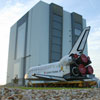
|
 |

Additional coverage for subscribers:
 VIDEO:
SHUTTLE HOISTED FOR ATTACHMENT TO TANK PLAY | HI-DEF VIDEO:
SHUTTLE HOISTED FOR ATTACHMENT TO TANK PLAY | HI-DEF
 VIDEO:
ENDEAVOUR'S DEPARTURE FROM HANGAR PLAY | HI-DEF VIDEO:
ENDEAVOUR'S DEPARTURE FROM HANGAR PLAY | HI-DEF

 VIDEO:
TIME-LAPSE MOVIE OF ENDEAVOUR GOING VERTICAL PLAY VIDEO:
TIME-LAPSE MOVIE OF ENDEAVOUR GOING VERTICAL PLAY
 VIDEO:
TIME-LAPSE MOVIE OF BEING HOISTED OFF TRANSPORTER PLAY VIDEO:
TIME-LAPSE MOVIE OF BEING HOISTED OFF TRANSPORTER PLAY
 VIDEO:
TIME-LAPSE MOVIE OF ENDEAVOUR MOVING TO VAB PLAY VIDEO:
TIME-LAPSE MOVIE OF ENDEAVOUR MOVING TO VAB PLAY
 SUBSCRIBE NOW SUBSCRIBE NOW

|
Russian freighter docking to station postponed
Friday's planned docking of the Russian-made Progress resupply ship to the international space station has been postponed until next Wednesday due to Houston's mission control being evacuated for Hurricane Ike. The cargo vessel will be placed in a parking orbit for the next few days. NASA said Houston is required to command various station systems for the docking event.
 EARLIER STORY EARLIER STORY
 |  |

|
 |
Hurricane Ike shuts down Johnson Space Center
With Hurricane Ike bearing down on the coast of Texas, NASA managers Thursday activated a rudimentary mission control center near Austin and ordered agency and contractor employees to evacuate the Johnson Space Center. A program-level flight readiness review for the next shuttle mission - a flight to service the Hubble Space Telescope - was delayed to next week.
 FULL STORY FULL STORY
 |  |

|
 |
Cargo ship begins trek to the space station
An unmanned resupply ship took aim on the international space station Wednesday, successfully launching into orbit atop a Russian Soyuz rocket from the Baikonur Cosmodrome.
 FULL STORY FULL STORY
 |  |
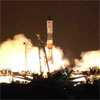
|
 |
Gamma-ray burst was aimed squarely at Earth
A flash of light that blinded even small telescopes six months ago was the brightest astronomical explosion ever observed - visible to the naked eye despite originating halfway across the universe.
 FULL STORY FULL STORY
 |  |
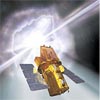
|
 |
OTHER HEADLINES Additional stories today
|
 |
Ares I rocket passes review to reach critical milestone -- NASA has taken a major step toward building the nation's next generation launch vehicle with Wednesday's successful completion of the Ares I rocket preliminary design review.
|
 |
Hints of planets present in young gas discs
Astronomers have been able to study planet-forming discs around young Sun-like stars in unsurpassed detail, clearly revealing the motion and distribution of the gas in the inner parts of the disc.
 FULL STORY FULL STORY
 |  |

|
 |
Study finds how Mars' valley networks formed
A new study suggests that ancient features on the surface of Mars called valley networks were carved by recurrent floods during a long period when the martian climate may have been much like that of some arid or semi-arid regions on Earth. An alternative theory that the valleys were carved by catastrophic flooding over a relatively short time is not supported by the new results.
 FULL STORY FULL STORY
 |  |

|
 |
OTHER HEADLINES Additional stories today
|
 |
Successful test of J-2X gas generator -- Pratt & Whitney Rocketdyne completed a series of successful tests on a gas generator for the J-2X rocket engine. The J-2X engine will power the nation's new Ares I and Ares V second-stage launch vehicles scheduled to send United States astronauts to the International Space Station and back to the moon by 2020.

Report explores use of Earth data to support national priorities -- The nation faces challenges in utilizing Earth science information to manage resources and protect public health, according to a NASA-sponsored report issued by the U.S. Climate Change Science Program.

New NASA space experiment rack to undergo flight tests -- A new space experiment rack under development by NASA's Kennedy Space Center, Fla., and Space Florida will undergo initial tests this week. The rack will fly aboard NASA's first commercially-provided research flights on Zero Gravity Corporation's reduced gravity aircraft.
|
 |

See our collection of panoramas that show space shuttle Atlantis traveling from the Vehicle Assembly Building to launch pad 39A for the October mission to extend the life of NASA's Hubble Space Telescope.
 PANORAMA GALLERY PANORAMA GALLERY
 |
 |

Additional coverage for subscribers:
 VIDEO:
PRE-FLIGHT BRIEFING: THE STS-125 MISSION PLAY VIDEO:
PRE-FLIGHT BRIEFING: THE STS-125 MISSION PLAY
 VIDEO:
PRE-FLIGHT BRIEFING: THE FIVE SPACEWALKS PLAY VIDEO:
PRE-FLIGHT BRIEFING: THE FIVE SPACEWALKS PLAY
 VIDEO:
PRE-FLIGHT BRIEFING: THE SEVEN ASTRONAUTS PLAY VIDEO:
PRE-FLIGHT BRIEFING: THE SEVEN ASTRONAUTS PLAY
 VIDEO:
PRE-FLIGHT BRIEFING: NASA LEADERSHIP PLAY VIDEO:
PRE-FLIGHT BRIEFING: NASA LEADERSHIP PLAY
 VIDEO:
PRE-FLIGHT BRIEFING: SHUTTLE PROGRAM BOSS PLAY VIDEO:
PRE-FLIGHT BRIEFING: SHUTTLE PROGRAM BOSS PLAY
 VIDEO:
PRE-FLIGHT BRIEFING: HUBBLE OVERVIEW PLAY VIDEO:
PRE-FLIGHT BRIEFING: HUBBLE OVERVIEW PLAY
 VIDEO:
PRE-FLIGHT BRIEFING: HUBBLE SCIENCE PLAY VIDEO:
PRE-FLIGHT BRIEFING: HUBBLE SCIENCE PLAY

 VIDEO:
SHUTTLE ARRIVES ATOP PAD 39A PLAY VIDEO:
SHUTTLE ARRIVES ATOP PAD 39A PLAY
 VIDEO:
ATLANTIS EMERGES FROM VEHICLE ASSEMBLY BUILDING PLAY VIDEO:
ATLANTIS EMERGES FROM VEHICLE ASSEMBLY BUILDING PLAY
 VIDEO:
TIME-LAPSE MOVIE OF ATLANTIS' ROLLOUT TO LAUNCH PAD PLAY VIDEO:
TIME-LAPSE MOVIE OF ATLANTIS' ROLLOUT TO LAUNCH PAD PLAY
 MORE: STS-125 VIDEO COVERAGE MORE: STS-125 VIDEO COVERAGE
 NEW!
HIGH DEFINITION VIDEO NEW!
HIGH DEFINITION VIDEO
 SUBSCRIBE NOW SUBSCRIBE NOW

|
Fine-tooth comb to measure accelerating Universe
A Nobel Prize-winning technology - a laser frequency "comb" - could bring astronomers a step closer to answering crucial questions about the expanding Universe, and help in the search for extrasolar Earthlike planets.
 FULL STORY FULL STORY
 |  |

|
 |
Comets under disguise
Planetary scientists have discovered that between five and ten percent of Near Earth Objects could be comets impersonating asteroids, and plan to find ways to reveal their true identity.
 FULL STORY FULL STORY
 |  |

|
 |
Cassini images ring arcs among Saturn's moons
NASA's Cassini spacecraft has detected a faint, partial ring orbiting with one small moon of Saturn, and has confirmed the presence of another partial ring orbiting with a second moon. This is further evidence that most of the planet's small, inner moons orbit within partial or complete rings.
 FULL STORY FULL STORY
 |  |

|
 |
High-res commercial Earth imager launched to space
A Delta 2 rocket thundered out of America's western spaceport Saturday and put into orbit a commercial Earth-imaging satellite that promises to offer a sharper clarity than any private satellite launched before it.
 MISSION STATUS CENTER MISSION STATUS CENTER
 IMAGES: ROCKET ON THE PAD IMAGES: ROCKET ON THE PAD
 IMAGES: LAUNCH PHOTO GALLERY IMAGES: LAUNCH PHOTO GALLERY
 |  |

|
 |
China could launch next manned flight this month
China launched two disaster monitoring satellites Saturday as officials announced the country's next piloted space mission could occur before the end of September, state media reported.
 FULL STORY FULL STORY
 |  |
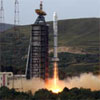
|
 |
Rosetta asteroid flyby reveals diamond in the sky
Europe's comet chaser, Rosetta, last night flew by a small body in the main asteroid belt, asteroid Steins, collecting a wealth of information about this rare type of minor Solar System body.
 FULL STORY FULL STORY
 |  |

|
 |
Phoenix finds Martian soil perplexingly dry
Although NASA's Phoenix Mars lander has sensed a rise and fall in humidity in the air around the spacecraft, the Martian soil itself is found to be thoroughly and perplexingly dry.
 FULL STORY FULL STORY
 |  |

|
 |
Jules Verne cargo ship departs the space station
Europe's first state-of-the-art Automated Transfer Vehicle departed the international space station Friday after a five-month stay that delivered more than 10,000 pounds of cargo to the complex.
 FULL STORY FULL STORY
 VIDEO: JULES VERNE COVERAGE VIDEO: JULES VERNE COVERAGE
 |  |
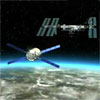
|
 |
New launch dates picked for next two shuttles
NASA on Friday formally pushed back the target launch dates for shuttle Atlantis' servicing mission to the Hubble Space Telescope and Endeavour's logistics run to the space station.
 MISSION STATUS CENTER - updates! MISSION STATUS CENTER - updates!
 STS-125: ATLANTIS FLIGHT PLAN STS-125: ATLANTIS FLIGHT PLAN
 STS-126: ENDEAVOUR FLIGHT PLAN STS-126: ENDEAVOUR FLIGHT PLAN
 NEW: HIGH DEFINITION VIDEO NEW: HIGH DEFINITION VIDEO
 |  |

|
 |
U.S. astronauts may be left without rides to station
NASA Administrator Mike Griffin says it is likely the U.S. segment of the space station will have to be unmanned for at least some portion of 2012 because legislation that would allow the agency to buy seats on Russian Soyuz spacecraft is at a virtual standstill.
 FULL STORY FULL STORY
 |  |

|
 |
Atlantis travels to launch pad for Hubble mission
The space shuttle that will make the fifth and final servicing call on the Hubble Space Telescope was rolled to the launch pad Thursday for its October mission to extend the life and vision of the famous observatory.
 MISSION STATUS CENTER - updates! MISSION STATUS CENTER - updates!
 EARLIER STORY EARLIER STORY
 LAUNCH WINDOWS CHART LAUNCH WINDOWS CHART
 STS-125 MASTER FLIGHT PLAN STS-125 MASTER FLIGHT PLAN
 OUR SPACE SHUTTLE ARCHIVE OUR SPACE SHUTTLE ARCHIVE
 STORE: OFFICIAL STS-125 MISSION PATCH STORE: OFFICIAL STS-125 MISSION PATCH
 |  |

|
 |

Additional coverage for subscribers:
 VIDEO:
SHUTTLE ARRIVES ATOP PAD 39A PLAY VIDEO:
SHUTTLE ARRIVES ATOP PAD 39A PLAY
 VIDEO:
ATLANTIS EMERGES FROM VEHICLE ASSEMBLY BUILDING PLAY VIDEO:
ATLANTIS EMERGES FROM VEHICLE ASSEMBLY BUILDING PLAY
 VIDEO:
TIME-LAPSE MOVIE OF ATLANTIS' ROLLOUT TO LAUNCH PAD PLAY VIDEO:
TIME-LAPSE MOVIE OF ATLANTIS' ROLLOUT TO LAUNCH PAD PLAY
 MORE: STS-125 VIDEO COVERAGE MORE: STS-125 VIDEO COVERAGE
 NEW!
HIGH DEFINITION VIDEO NEW!
HIGH DEFINITION VIDEO
 SUBSCRIBE NOW SUBSCRIBE NOW

|
Closest look ever at the edge of a black hole
Astronomers have taken the closest look ever at the giant black hole in the center of the Milky Way. By combining telescopes in Hawaii, Arizona, and California, they detected structure at a tiny angular scale of 37 micro-arcseconds - the equivalent of a baseball seen on the surface of the moon, 240,000 miles distant. These observations are among the highest resolution ever done in astronomy.
 FULL STORY FULL STORY
 |  |

|
 |
Analysis begins on Mars lander's deepest soil sample
Scientists have begun to analyze a sample of soil delivered to NASA's Phoenix Mars Lander's wet chemistry experiment from the deepest trench dug so far in the Martian arctic plains.
 FULL STORY FULL STORY
 |  |
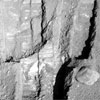
|
 |
OTHER HEADLINES Additional stories today
|
 |
Heritage lunar engine fired up once again -- Engineers from NASA and Pratt & Whitney Rocketdyne successfully completed a series of hot-fire altitude tests using liquid methane on the RS-18 engine. The tests, conducted at White Sands test facility in New Mexico, are part of the technology development for NASA's Constellation program, and gathered important data on ignition, performance measurement, and rapid start and stop.
|
 |
Hubble sees magnetic monster in erupting galaxy
NASA's Hubble Space Telescope has found an answer to a long-standing puzzle by resolving giant but delicate filaments shaped by a strong magnetic field around the active galaxy NGC 1275. It is the most striking example of the influence of the immense tentacles of extragalactic magnetic fields, say researchers.
 FULL STORY FULL STORY
 |  |

|
 |
Origin of Crab Nebula's high-energy emission found
Thanks to data from ESA's Integral gamma-ray observatory, scientists have been able to locate where particles in the vicinity of the rotating neutron-star in the Crab Nebula are accelerated to immense energies.
 FULL STORY FULL STORY
 |  |
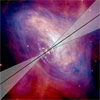
|
 |
Mars rover Opportunity ascends out of crater
NASA's Mars Exploration Rover Opportunity has climbed out of the large crater that it had been examining from the inside since last September.
 FULL STORY FULL STORY
 |  |

|
 |
Phoenix mission conducting extended activities on Mars
NASA's Phoenix Mars Lander, having completed its 90-day primary mission, is continuing its science collection activities. Science and engineering teams are looking forward to at least another month of Martian exploration.
 FULL STORY FULL STORY
 |  |

|
 |
Five RapidEye remote sensing satellites launched
The Dnepr rocket, a weapon of war converted for peaceful applications, bolted out of an underground silo early Friday and delivered five German agricultural imaging satellites to orbit.
 FULL STORY FULL STORY
 |  |
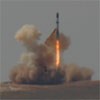
|
 |
The missing link between meteorites and asteroids
Scientists have often wondered why only a tiny fraction of meteorites found on Earth match the vast majority of asteroids that orbit in our local neighbourhood, but new research suggests the solution could be in the Sun.
 FULL STORY FULL STORY
 |  |

|
 |
Earth's leaky atmosphere
ESA's formation-flying Cluster satellites have discovered the physical mechanism that is driving the constant leak of oxygen out of Earth's atmosphere and into space: the Earth's own magnetic field.
 FULL STORY FULL STORY
 |  |

|
 |
Clash of clusters provides new dark matter clue
A dramatic collision between galaxy clusters captured by the Hubble and Chandra space telescopes provides striking evidence for the existence of dark matter as it separates from ordinary matter.
 FULL STORY FULL STORY
 |  |

|
 |
Rover Opportunity to leave Victoria Crater
After nearly a year of daring exploration within Victoria Crater, NASA's Mars Exploration rover Opportunity is heading back out to the surrounding Martian plains to examine exposed ancient rock layers, and boulders thrown from massive impact events.
 FULL STORY FULL STORY
 |  |

|
 |
Atlantis rollout to pad delayed a few days
Troubles getting the liquid hydrogen umbilical connected between space shuttle Atlantis and its external fuel tank inside the Vehicle Assembly Building has delayed the rollout to launch pad 39A.
 MISSION STATUS CENTER MISSION STATUS CENTER
 OUR SPACE SHUTTLE ARCHIVE OUR SPACE SHUTTLE ARCHIVE
 STORE: OFFICIAL STS-125 MISSION PATCH STORE: OFFICIAL STS-125 MISSION PATCH
 |  |

|
 |
GLAST, renamed Fermi, reveals first all-sky image
NASA's newest space observatory GLAST has begun its mission of exploring the Universe in high-energy gamma rays and has been renamed the Fermi Gamma-ray Space Telescope in honour of Professor Enrico Fermi, a pioneer of high-energy physics on which the mission is founded.
 FULL STORY FULL STORY
 |  |
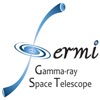
|
 |
XMM discovers monster galaxy cluster
ESA's orbiting X-ray observatory XMM-Newton has discovered a cosmic needle in the haystack of space: the most massive galaxy cluster ever seen in the distant Universe, and one which confirms the existence of dark energy.
 FULL STORY FULL STORY
 |  |

|
 |
Generations of stars pose for family portrait
In celebration of Spitzer's five years in orbit, a stunning new image reveals the family portrait of a star-forming inferno studded with multiple generations of brilliant stars, and provides dramatic new evidence that massive stars can trigger the birth of stellar newborns through their savage winds and radiation.
 FULL STORY FULL STORY
 |  |

|
 |
Phoenix lander digs into extended mission on Mars
Today, the 90th Martian sol and the end of the originally planned primary mission, Phoenix will perform the challenging task of scooping up soil from the deepest trench ever dug on Mars.
 FULL STORY FULL STORY
 |  |

|
 |
Atlantis rolls to the Vehicle Assembly Building
After spending four extra days parked inside its hangar while Tropical Storm Fay poured on the Kennedy Space Center, shuttle Atlantis finally moved to the Vehicle Assembly Building on Friday night in preparation for its October launch to the Hubble Space Telescope.
 MISSION STATUS CENTER MISSION STATUS CENTER
 OUR SPACE SHUTTLE ARCHIVE OUR SPACE SHUTTLE ARCHIVE
 STORE: OFFICIAL STS-125 MISSION PATCH STORE: OFFICIAL STS-125 MISSION PATCH
 |  |

|
 |

Additional coverage for subscribers:
 VIDEO:
ATLANTIS ROLLS FROM HANGAR TO VAB PLAY VIDEO:
ATLANTIS ROLLS FROM HANGAR TO VAB PLAY
 VIDEO:
ATLANTIS LIFTED INTO PLACE FOR ATTACHMENT PLAY VIDEO:
ATLANTIS LIFTED INTO PLACE FOR ATTACHMENT PLAY
 MORE:
STS-125 VIDEO COVERAGE MORE:
STS-125 VIDEO COVERAGE
 NEW!
HIGH DEFINITION VIDEO NEW!
HIGH DEFINITION VIDEO
 SUBSCRIBE NOW SUBSCRIBE NOW

|
The interplanetary mapping maverick
In an exclusive interview to coincide with the September issue of Astronomy Now, the Planetary Science Institute's Dr Robert Gaskell discusses his innovative mapping technique that is bringing the diverse surfaces of the Solar System to life.
 FULL STORY FULL STORY
 |  |

|
 |
Most black holes might come in only small and large
Black holes are sometimes huge cosmic beasts, billions of times the mass of our sun, and sometimes petite with just a few times the sun's mass. But do black holes also come in size medium? A new study suggests that, for the most part, the answer is no.
 FULL STORY FULL STORY
 |  |

|
 |
Phoenix lander explores Mars site by trenching
NASA's Phoenix Mars Lander scientists and engineers are continuing to dig into the area around the lander with the spacecraft's robotic arm, looking for new materials to analyze and examining the soil and ice subsurface structure.
 FULL STORY FULL STORY
 |  |

|
 |
Proposals made to solve Ares 1 vibration worry
NASA hopes to resolve concern about high vibrations in its new Ares 1 rocket by using a shock absorber-like passive damper between the first and second stages and a computer-controlled, motor-driven system of spring-mounted weights at the base of the booster to actively cancel out unwanted up-and-down oscillations.
 FULL STORY FULL STORY
 STORE: EXPLORATION PROGRAM PATCHES STORE: EXPLORATION PROGRAM PATCHES
 |  |

|
 |
Proton launcher returns to commercial service
Commercial flights of Russia's Proton rocket successfully resumed Monday night, putting into orbit a sophisticated mobile communications satellite that joins two other spacecraft to offer global broadband coverage.
 FULL STORY FULL STORY
 |  |
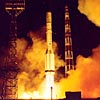
|
 |
New Milky Way map reveals a complicated outer galaxy
The halo of stars that envelops the Milky Way galaxy is like a river delta criss-crossed by stellar streams large and small, according to new data from the Sloan Digital Sky Survey. While the largest rivers of this delta have been mapped out over the last decade, analysis of the new map shows that smaller streams can be found throughout the stellar halo.
 FULL STORY FULL STORY
 |  |
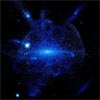
|
 |
OTHER HEADLINES Additional stories today
|
 |
NASA engineers complete test series for Ares I rocket -- Engineers at NASA's Marshall Space Flight Center in Huntsville, Ala., have completed a series of tests on a key component of the J-2X engine. The J-2X powers the upper stage of the Ares I rocket, which will launch human explorers to the International Space Station and to the moon.
|
 |
Solar System's new member
An ice-rock minor planet 30 to 60 miles in diameter, discovered two years ago between the orbits of Uranus and Neptune could be a member of the "inner Oort Cloud." But this is only part of the story.
 FULL STORY FULL STORY
 |  |
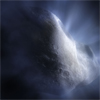
|
 |
Phoenix microscope takes first image of Martian dust
NASA's Phoenix Mars Lander has taken the first-ever image of a single particle of Mars' ubiquitous dust, using its atomic force microscope. The particle is shown at higher magnification than anything ever seen from another world.
 FULL STORY FULL STORY
 |  |
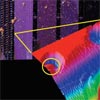
|
 |
Ariane 5 rocket goes up for the fifth time this year
Europe's workhorse Ariane 5 rocket took off from a South American space base Thursday on its third launch in barely two months, this time with Japanese and U.S. television broadcasting satellites.
 FULL STORY FULL STORY
 OUR ARIANE ARCHIVE OUR ARIANE ARCHIVE
 |  |

|
 |
NASA opts to leave shuttle launch dates as scheduled
Space shuttle program leaders met Thursday and discussed a proposal to move up the target launch dates for the next two missions in October and November. But in the end officials decided to leave the Hubble servicing mission and space station flight as originally scheduled on Oct. 8 and Nov. 10.
 FULL STORY FULL STORY
 MISSION STATUS CENTER MISSION STATUS CENTER
 STORE: OFFICIAL STS-125 MISSION PATCH STORE: OFFICIAL STS-125 MISSION PATCH
 |  |

|
 |

Additional coverage for subscribers:
 VIDEO:
BIOGRAPHY MOVIE OF ATLANTIS' CREW PLAY VIDEO:
BIOGRAPHY MOVIE OF ATLANTIS' CREW PLAY
 VIDEO:
INTERVIEW WITH COMMANDER SCOTT ALTMAN PLAY VIDEO:
INTERVIEW WITH COMMANDER SCOTT ALTMAN PLAY
 VIDEO:
INTERVIEW WITH PILOT GREG JOHNSON PLAY VIDEO:
INTERVIEW WITH PILOT GREG JOHNSON PLAY
 VIDEO:
INTERVIEW WITH MS1 MIKE GOOD PLAY VIDEO:
INTERVIEW WITH MS1 MIKE GOOD PLAY
 VIDEO:
INTERVIEW WITH MS2 MEGAN MCARTHUR PLAY VIDEO:
INTERVIEW WITH MS2 MEGAN MCARTHUR PLAY
 VIDEO:
INTERVIEW WITH MS3 JOHN GRUNSFELD PLAY VIDEO:
INTERVIEW WITH MS3 JOHN GRUNSFELD PLAY
 VIDEO:
INTERVIEW WITH MS4 MIKE MASSIMINO PLAY VIDEO:
INTERVIEW WITH MS4 MIKE MASSIMINO PLAY
 VIDEO:
INTERVIEW WITH MS5 DREW FEUSTEL PLAY VIDEO:
INTERVIEW WITH MS5 DREW FEUSTEL PLAY
 MORE:
STS-125 VIDEO COVERAGE MORE:
STS-125 VIDEO COVERAGE
 NEW!
HIGH DEFINITION VIDEO NEW!
HIGH DEFINITION VIDEO
 SUBSCRIBE NOW SUBSCRIBE NOW

|
Pluto debate continues
In 2006, the International Astronomical Union reclassified Solar System objects such that Pluto became a dwarf planet, and in June of this year it was placed into the 'plutoid' sub-category. Now astronomers have reopened the debate at this week's Great Planet Debate: Science as a Process conference.
 FULL STORY FULL STORY
 |  |

|
 |
Crane mishap at Baikonur damages commercial craft
A Malaysian communications satellite being prepared for launch next week could be grounded for at least several months after a crane struck the fuel-laden spacecraft at the Baikonur Cosmodrome in Kazakhstan.
 FULL STORY - updated FULL STORY - updated
 |  |
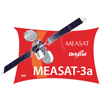
|
 |
Cassini returns pictures from Monday's flyby
Cassini is beaming back its first images from Monday's close encounter with Saturn's moon Enceladus. The spacecraft came within 30 miles of the moon to study fissures dubbed "tiger stripes" where geysers of water-ice and vapor jet out into space.
 FULL STORY FULL STORY
 |  |
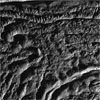
|
 |
Delta 2 rocket launch of GeoEye craft postponed
Launch of a commercial Earth-imaging satellite aboard a Delta 2 rocket originally scheduled to occur next week from Vandenberg Air Force Base in California will be pushed into early September.
 FULL STORY FULL STORY
 |  |
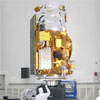
|
 |
Cassini begins transmitting data from Enceladus flyby
The Cassini spacecraft has started sending data to Earth following a close flyby of Saturn's moon Enceladus. During closest approach on Monday, Cassini successfully passed only 30 miles from the surface of the tiny moon.
 FULL STORY FULL STORY
 |  |

|
 |
NASA slips internal target for first manned Orion flight
NASA's internal planning date for the first manned launch of the new Orion spacecraft that will replace the space shuttle after the winged orbiters are retired in 2010 has slipped one year, from September 2013 to September 2014. The new schedule, managers said Monday, reflects a more realistic assessment of projected funding, contract realities and technical requirements in the absence of any significant additional support from Congress.
 FULL STORY FULL STORY
 STORE: EXPLORATION PATCHES STORE: EXPLORATION PATCHES
 |  |
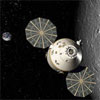
|
 |
Soil studies continue at Mars lander site
Vibration of the screen above a laboratory oven on NASA's Phoenix Mars Lander on Saturday succeeded in getting enough soil into the oven to begin analysis. Commands were sent for the lander's Thermal and Evolved-Gas Analyzer (TEGA) to begin analysis Sunday of the soil sample from a trench called "Rosy Red."
 FULL STORY FULL STORY
 |  |
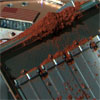
|
 |
Hubble unveils colorful and turbulent star-birth region
The Hubble Space Telescope is celebrating its 100,000th orbit around the Earth with the release of a spectacular image of a fantasy-like landscape embellished with scenes of stellar birth and renewal.
 FULL STORY FULL STORY
 STORE: HUBBLE PROGRAM PATCH STORE: HUBBLE PROGRAM PATCH
 |  |

|
 |
Cassini prepares to swoop by geyser-spewing moon
Fractures, or "tiger stripes," where icy jets erupt on Saturn's moon Enceladus will be the target of a close flyby by the Cassini spacecraft on Monday, zooming past the tiny moon a mere 30 miles from the surface.
 FULL STORY FULL STORY
 |  |
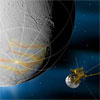
|
 |

Additional coverage for subscribers:
 VIDEO:
PREVIEW OF CASSINI'S ENCELADUS FLYBY PLAY VIDEO:
PREVIEW OF CASSINI'S ENCELADUS FLYBY PLAY
 SUBSCRIBE NOW SUBSCRIBE NOW

|
Computer simulations put Solar System in its place
Traditional theories of Solar System formation assume our neighbourhood to be pretty run of the mill, but in a new study using data from 300 exoplanets discovered orbiting other stars, our planetary haven turns out to be one of a kind.
 FULL STORY FULL STORY
 |  |

|
 |
Hubble's odometer turns over 100,000 orbits of Earth
The odometer on NASA's Hubble Space Telescope is about to turn over 100,000. That's not 100,000 miles but the number of orbits it has made around Earth since it was launched aboard the space shuttle Discovery on April 24, 1990.
 FULL STORY FULL STORY
 |  |
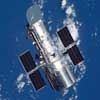
|
 |
Collision between rocket stages doomed Falcon 1
The investigation into Saturday night's failed SpaceX Falcon 1 launch has revealed the spent first stage separated and then recontacted the second stage due to residual thrust from the main engine, the company's founder says.
 FULL STORY FULL STORY
 MISSION STATUS CENTER MISSION STATUS CENTER
 |  |
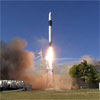
|
 |
Jupiter and Saturn full of liquid metal helium
A strange, metal brew lies buried deep within Jupiter and Saturn, according to a new study by researchers at the University of California, Berkeley, and in London.
 FULL STORY FULL STORY
 |  |

|
 |
Dark matter clumps and streams in Milky Way
Using powerful supercomputer simulations, researchers have reason to believe that dense clumps and streams of dark matter lurk in the inner regions of the Milky Way's galactic halo, in the same neighborhood as our Solar System.
 FULL STORY FULL STORY
 |  |
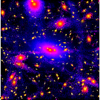
|
 |
Phoenix data suggests perchlorates in Mars soil
An instrument aboard NASA's Phoenix Mars lander has detected what may be perchlorate in the soil of the red planet's northern latitudes, an unexpected, still tentative discovery that has touched off a flurry of speculation about whether Mars is now, or has ever been, habitable.
 FULL STORY FULL STORY
 |  |

|
 |
Globular clusters tell tale of nearby galaxy metropolis
The Hubble Space Telescope has identified thousands of more than 5 billion years old globular clusters in the Virgo cluster of galaxies. One of the results of these discoveries led astronomers to understand more about the life and evolution of cannibal galaxies.
 FULL STORY FULL STORY
 |  |

|
 |
'Cosmic ghost' discovered by volunteer astronomer
When Yale astrophysicist Kevin Schawinski and his colleagues at Oxford University enlisted public support in cataloguing galaxies, they never envisioned the strange object Hanny van Arkel found in archived images of the night sky.
 FULL STORY FULL STORY
 |  |
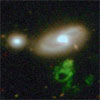
|
 |
Martian soil data from Phoenix being analyzed
Scientists are analyzing results from soil samples delivered several weeks ago to science instruments on NASA's Phoenix Mars Lander to understand the landing site's soil chemistry and mineralogy.
 FULL STORY FULL STORY
 |  |
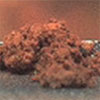
|
 |
Hubble finds large sample of very distant galaxies
New Hubble Space Telescope observations of six spectacular galaxy clusters acting as gravitational lenses have given significant insights into the early stages of the Universe.
 FULL STORY FULL STORY
 |  |

|
 |
Falcon 1 suffers another setback
The Falcon 1 rocket, a sleek black-and-white booster built to usher in an era of low-cost space travel, was bitten by failure for the third time in three tries during a dramatic Saturday night launch from the central Pacific.
 FULL STORY FULL STORY
 MISSION STATUS CENTER - live updates! MISSION STATUS CENTER - live updates!
 LAUNCH EVENTS TIMELINE LAUNCH EVENTS TIMELINE
 OUR PREVIEW STORY OUR PREVIEW STORY
 |  |
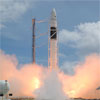
|
 |
Obama vows NASA support during visit to Florida
Sen. Barack Obama held a town hall meeting near the Kennedy Space Center Saturday and vowed strong support for NASA, saying he favors at least one shuttle flight beyond the 10 missions left on the agency's manifest. Obama also said he would work to close the gap between the end of shuttle operations and the debut of the Orion spacecraft that will replace it and said earlier reports that he would divert money from NASA's next manned spacecraft to education were unfounded.
 FULL STORY FULL STORY
 |  |

|
 |
Supervoids, superclusters point to dark energy
By studying regions of space with an above and below average concentration of galaxies - superclusters and supervoids, respectively - a team of astronomers have found direct evidence for the existence of dark energy.
 FULL STORY FULL STORY
 |  |

|
 |
Phoenix confirms water as mission gets extended
Laboratory tests aboard NASA's Phoenix Mars Lander have identified water in a soil sample. The lander's robotic arm delivered the sample Wednesday to an instrument that identifies vapors produced by the heating of samples.
 FULL STORY FULL STORY
 |  |
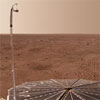
|
 |

Additional coverage for subscribers:
 VIDEO:
THURSDAY'S PHOENIX MISSION UPDATE PLAY VIDEO:
THURSDAY'S PHOENIX MISSION UPDATE PLAY
 VIDEO:
FULL COLOR PANORAMA WITH NARRATION PLAY VIDEO:
FULL COLOR PANORAMA WITH NARRATION PLAY
 MORE:
VIDEO COVERAGE OF PHOENIX MISSION MORE:
VIDEO COVERAGE OF PHOENIX MISSION
 SUBSCRIBE NOW SUBSCRIBE NOW

|
The first stars
The universe began with the Big Bang about 13.7 billion years ago. Very soon after that event, the first stars formed. Today, those stars are dead and gone leaving little evidence of their size and composition behind. Now, a new computer simulation now offers the most detailed picture yet of how these first stars came into existence.
 FULL STORY FULL STORY
 |  |

|
 |
Lunar mapper and military vehicle swap launch slots
The launch of NASA's Lunar Reconnaissance Orbiter has been delayed until next February to make room on the Atlas 5 rocket's cramped East Coast manifest for a secretive Air Force space plane, government officials said this week.
 FULL STORY - updated! FULL STORY - updated!
 |  |

|
 |
NASA confirms liquid lake on Saturn's moon Titan
NASA scientists have concluded that at least one of the large lakes observed on Saturn's moon Titan contains liquid hydrocarbons, and have positively identified the presence of ethane. This makes Titan the only body in our solar system beyond Earth known to have liquid on its surface.
 FULL STORY FULL STORY
 |  |
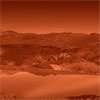
|
 |
Jason 2 satellite begins mapping Earth's oceans
Less than a month after launch, the NASA-French space agency Ocean Surface Topography Mission/Jason 2 oceanography satellite has produced its first complete maps of global ocean surface topography, surface wave height and wind speed.
 FULL STORY FULL STORY
 LAUNCH COVERAGE LAUNCH COVERAGE
 |  |
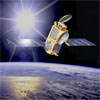
|
 |
Barred spiral galaxies are latecomers to the universe
In a landmark study of more than 2,000 spiral galaxies from the largest galaxy census conducted by NASA's Hubble Space Telescope, astronomers found that so-called barred spiral galaxies were far less plentiful 7 billion years ago than they are today, in the local universe.
 FULL STORY FULL STORY
 |  |
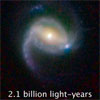
|
 |
Satellite providing scintillation forecast data
Whether it's static interrupting a radio station, or crackling noises interfering with a theater commander's attempt to contact a deployed unit, scintillation can cause communication chaos.
 FULL STORY FULL STORY
 |  |

|
 |
Phoenix lander working with sticky Martian soil
Scientists and engineers on NASA's Phoenix Mars Mission spent the weekend examining how the icy soil on Mars interacts with the scoop on the lander's robotic arm, while trying different techniques to deliver a sample to one of the instruments.
 FULL STORY FULL STORY
 |  |
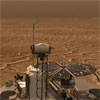
|
 |
OTHER HEADLINES Additional stories today
|
 |
Ancient galactic magnetic fields stronger than expected -- Mining the far reaches of the universe for clues about its past, a team of scientists has proposed that magnetic fields of ancient galaxies like ours were just as strong as those existing today, prompting a rethinking of how our galaxy and others may have formed.

NASA successfully tests parachute for Ares rocket -- NASA and industry engineers have successfully completed the first drop test of a drogue parachute for the Ares I rocket. The drogue parachute is designed to slow the rapid descent of the spent first-stage motor, cast off by the Ares I rocket during its climb to space.
|
 |
Supernova explodes in controversy
The interpretation of supernova explosion SN 2008D, which was captured by a serendipitous Swift telescope observation earlier this year, is causing controversy among different research groups who argue its origin and evolution as either a 'normal' supernova, or something more reminiscent of a gamma-ray burst.
 FULL STORY FULL STORY
 |  |

|
 |
Phoenix revises method to deliver icy sample
NASA's Phoenix Mars Lander's robotic arm will use a revised collection-and-delivery sequence overnight Sunday with the goal of depositing an icy soil sample in the lander's oven.
 FULL STORY FULL STORY
 |  |
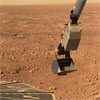
|
 |
Stellar vampires make the Universe dusty
For the first time, astronomers have witnessed the expulsion of a shell of dusty gas around a freshly erupted nova and tracked its evolution for over 200 days, providing a new and invaluable way of estimating the distances to nearby novae.
 FULL STORY FULL STORY
 |  |
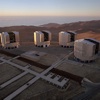
|
 |
Phoenix collects icy soil but needs to work on delivery
NASA's Phoenix Mars Lander's robotic arm collected a more than adequate amount of icy soil for baking in one of the lander's ovens but will need to adjust how it delivers samples.
 FULL STORY FULL STORY
 |  |

|
 |
NASA changes plans for advancing shuttle dates
Space shuttle program managers Friday modified an official "change request" that, if approved, will move up the next two shuttle launchings by three days each, not six as initially requested.
 FULL STORY FULL STORY
 |  |

|
 |

Additional coverage for subscribers:
 VIDEO:
PAD 39A FLAME TRENCH REPAIRS UNDERWAY PLAY VIDEO:
PAD 39A FLAME TRENCH REPAIRS UNDERWAY PLAY
 SUBSCRIBE NOW SUBSCRIBE NOW

|
OTHER HEADLINES Additional stories today
|
 |
Soyuz 2-1b rocket launches classified military payload -- Russia launched a military reconnaissance satellite Saturday using a modernized version of the Soyuz rocket, according to news reports.
|
 |
Satellites discover what powers Northern Lights
Researchers using a fleet of five NASA satellites have discovered that explosions of magnetic energy a third of the way to the moon power substorms that cause sudden brightenings and rapid movements of the aurora borealis, called the Northern Lights.
 FULL STORY FULL STORY
 |  |

|
 |
COROT finds exoplanet orbiting Sun-like star
A team of European scientists working with COROT have discovered an exoplanet orbiting a star slightly more massive than the Sun. After just 555 days in orbit, the mission has now observed more than 50,000 stars and is adding significantly to our knowledge of the fundamental workings of stars.
 FULL STORY FULL STORY
 |  |

|
 |
Astronomers see disks surrounding black holes
For the first time, a team of international researchers has found a way to view the accretion disks surrounding black holes and verify that their true electromagnetic spectra match what astronomers have long predicted they would be.
 FULL STORY FULL STORY
 |  |

|
 |
Phoenix lander prepares for next sample analysis
The latest activities of NASA's Phoenix Mars Lander have moved the mission closer to analyzing a sample of material, possibly icy soil, from a hard layer at the bottom of a shallow trench beside the lander.
 FULL STORY FULL STORY
 |  |
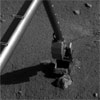
|
 |
New project to develop GPS-like system for moon
The same Ohio State University researcher who is helping rovers navigate on Mars is leading a new effort to help humans navigate on the moon.
 FULL STORY FULL STORY
 |  |
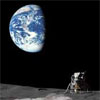
|
 |
Ocean surface a boon for extreme event forecasts
For humans in the path of destructive hurricanes and tsunamis, an accurate warning of the pending event is critical for damage control and survival. Such warnings, however, require a solid base of scientific observations, and a new satellite is ready for the job.
 FULL STORY FULL STORY
 |  |
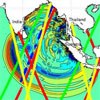
|
 |
Using gravitational lensing to weigh 70 galaxies
An international team of astronomers recently announced a finding that helps to settle a long-standing debate over the relationship between mass and luminosity in galaxies.
 FULL STORY FULL STORY
 |  |

|
 |
Radar reconnaissance spacecraft launched
The capstone of a fleet of German military satellites rocketed into space from Russia early Tuesday, completing a series of five launchings of spacecraft designed to scout locations around the world.
 FULL STORY FULL STORY
 |  |
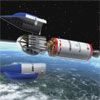
|
 |
European orbiter begins closing in on Venus
Starting last week, spacecraft controllers have been executing a series of manoeuvres to gradually bring Venus Express closer to its host planet. In its modified orbit, the spacecraft will be able to observe unexplored regions and investigate phenomena that were not within its reach before.
 FULL STORY FULL STORY
 |  |

|
 |
Spitzer sees 'no organics' zone around Pinwheel
The Pinwheel galaxy is gussied up in infrared light in a new picture from NASA's Spitzer Space Telescope. The fluffy-looking galaxy is dominated by a mishmash of spiral arms. In Spitzer's new view, in which infrared light is color coded, the galaxy sports a swirling blue center and a unique, coral-red outer ring.
 FULL STORY FULL STORY
 |  |
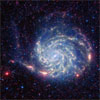
|
 |
Brightest star in the galaxy has new competition
A contender for the title of brightest star in our Milky Way galaxy has been unearthed in the dusty metropolis of the galaxy's center. Nicknamed the "Peony nebula star," the bright stellar bulb blazes with the light of an estimated 3.2 million suns.
 FULL STORY FULL STORY
 |  |
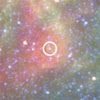
|
 |
XMM-Newton discovers the star that everyone missed
XMM-Newton has discovered an exploding star in the Milky Way. Usually that would be important in itself, but this time there is a special twist. Calculations show that the explosion must have been clearly visible to the unaided eye but was missed by the legions of star watchers around the planet.
 FULL STORY FULL STORY
 |  |

|
 |
OTHER HEADLINES Additional stories today
|
 |
Fourth dwarf planet named -- The International Astronomical Union has given the name Makemake to the newest member of the family of dwarf planets - the object formerly known as 2005 FY9 - after the Polynesian creator of humanity and the god of fertility.
|
 |
Video flashback on this anniversary of Apollo 11
One of the defining moments of the 20th century was mankind's voyage to the moon. This video selection allows you to relive the mission of Armstrong, Aldrin and Collins on Apollo 11.
 VIDEO DIRECTORY VIDEO DIRECTORY
 |  |

|
 |
A new way developed to weigh giant black holes
How do you weigh the biggest black holes in the universe? One answer now comes from a completely new and independent technique that astronomers have developed using data from NASA's Chandra X-ray Observatory.
 FULL STORY FULL STORY
 |  |

|
 |
NASA's Deep Impact films Earth as an alien world
NASA's Deep Impact spacecraft has created a video of the moon passing in front of Earth as seen from the probe's point of view 31 million miles away. Scientists are using the movie to develop techniques to study other planets.
 FULL STORY FULL STORY
 |  |
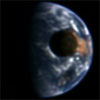
|
 |
Jupiter red spots mix it up
A new sequence of Hubble Space Telescope images offers an unprecedented view of a planetary game of Pac-Man among three red spots clustered together in Jupiter's atmosphere.
 FULL STORY FULL STORY
 |  |
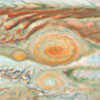
|
 |
OTHER HEADLINES Additional stories today
|
 |
NASA picks crew for STS-128 mission to space station -- NASA has assigned the crew for space shuttle mission STS-128 that is targeted for launch next July. The flight will carry science and storage racks to the International Space Station.

Joint statement by the ISS Heads of Agency -- The Heads of the International Space Station Agencies from Canada, Europe, Japan, Russia and the United States met in Paris on Thursday to review ISS cooperation.
|
 |
Crew of most recent shuttle mission tells its story
Space shuttle Discovery's flight to the space station in June delivered and attached the outpost's largest module -- the Kibo science laboratory built by Japan. The STS-124 astronauts recap the mission in this post-flight presentation.
 |  |
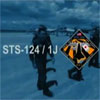
|
 |

Additional coverage for subscribers:
 VIDEO:
FULL POST-FLIGHT PRESENTATION PLAY VIDEO:
FULL POST-FLIGHT PRESENTATION PLAY
 VIDEO:
STS-124 MISSION HIGHLIGHTS MOVIE PLAY VIDEO:
STS-124 MISSION HIGHLIGHTS MOVIE PLAY
 MORE:
VIDEO COVERAGE FROM THE STS-124 FLIGHT MORE:
VIDEO COVERAGE FROM THE STS-124 FLIGHT
 NEW!:
STS-124 HIGH DEFINITION VIDEO NEW!:
STS-124 HIGH DEFINITION VIDEO
 SUBSCRIBE NOW SUBSCRIBE NOW

|
Mars Express to rendezvous with Martian moon
Scientists and engineers are preparing the European Space Agency's Mars Express for a pair of close fly-bys of the Martian moon Phobos. Passing within 100 km of the surface, the spacecraft will conduct some of the most detailed investigations of the moon to date.
 FULL STORY FULL STORY
 |  |
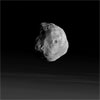
|
 |
Ancient Mars had diverse, wet environments
Mars once hosted vast lakes, flowing rivers and a variety of other wet environments that had the potential to support life, according to two new studies based on data from instruments on board NASA's Mars Reconnaissance Orbiter.
 FULL STORY FULL STORY
 |  |
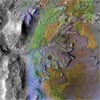
|
 |
Phoenix lander rasps frozen layer, collects sample
A powered rasp on the back of the robotic arm scoop of NASA's Phoenix Mars Lander successfully drilled into the frozen soil and loosened material that was collected in the lander's scoop.
 FULL STORY FULL STORY
 |  |

|
 |
Sea Launch boosts relay satellite for DISH Network
A powerful new broadcaster for the DISH Network satellite television system was successfully shot into space Wednesday aboard a multi-national Sea Launch Zenit 3SL rocket.
 FULL STORY FULL STORY
 PREVIEW STORY PREVIEW STORY
 SEA LAUNCH FEATURE SEA LAUNCH FEATURE
 PANORAMA GALLERY PANORAMA GALLERY
 |  |
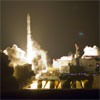
|
 |
Station residents complete another spacewalk
The two Russian cosmonauts of the space station's Expedition 17 crew ventured outside their orbital home Tuesday afternoon for the second spacewalk in less than a week.
 MISSION STATUS CENTER MISSION STATUS CENTER
 |  |

|
 |

Additional coverage for subscribers:
 VIDEO:
SCIENCE PACKAGE MOUNTED TO STATION EXTERIOR PLAY VIDEO:
SCIENCE PACKAGE MOUNTED TO STATION EXTERIOR PLAY
 VIDEO:
TAKING A RIDE ON THE STRELA TELESCOPING BOOM PLAY VIDEO:
TAKING A RIDE ON THE STRELA TELESCOPING BOOM PLAY
 VIDEO:
DOCKING TARGET INSTALLED ON ZVEZDA SERVICE MODULE PLAY VIDEO:
DOCKING TARGET INSTALLED ON ZVEZDA SERVICE MODULE PLAY
 VIDEO:
SECOND SPACEWALK BY EXPEDITION 17 CREW BEGINS PLAY VIDEO:
SECOND SPACEWALK BY EXPEDITION 17 CREW BEGINS PLAY
 VIDEO:
NARRATED PREVIEW OF THE SPACEWALK PLAY VIDEO:
NARRATED PREVIEW OF THE SPACEWALK PLAY
 MORE:
EXPEDITION 17 VIDEO COVERAGE MORE:
EXPEDITION 17 VIDEO COVERAGE
 NEW!:
STS-124 HIGH DEFINITION VIDEO NEW!:
STS-124 HIGH DEFINITION VIDEO
 SUBSCRIBE NOW SUBSCRIBE NOW

|
Phoenix lander to begin rasping frozen layer of Mars
A powered rasp on the back of the robotic arm scoop of NASA's Phoenix Mars Lander is being tested for the first time on Mars in gathering sample shavings of ice.
 FULL STORY FULL STORY
 |  |

|
 |
Next Delta 2 rocket to carry sharp-eyed spacecraft
Launch preparations are underway at Vandenberg Air Force Base in California to ready a commercial Earth-imaging spacecraft for its deployment into orbit by a Delta 2 rocket.
 FULL STORY - updated FULL STORY - updated
 |  |

|
 |
Phoenix extending trench
NASA's Phoenix Mars Lander is using its arm to enlarge an exposure of hard subsurface material expected to yield a sample of ice-rich soil for analysis in one of the lander's ovens.
 FULL STORY FULL STORY
 |  |

|
 |
Exploding asteroid theory strengthened by new clues
Was the course of life on the planet altered 12,900 years ago by a giant comet exploding over Canada? Geological evidence found in Ohio and Indiana in recent weeks suggests the answer is affirmative.
 FULL STORY FULL STORY
 |  |
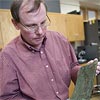
|
 |
Mystery star cluster has three different birthdays
Imagine having three clocks in your house, each chiming at a different time. Astronomers have found the equivalent of three out-of-sync "clocks" in the ancient open star cluster NGC 6791. The dilemma may fundamentally challenge the way astronomers estimate cluster ages, researchers said.
 FULL STORY FULL STORY
 |  |

|
 |
Radio observations probe Orion Nebula for exoplanets
A detailed survey of stars in the Orion Nebula has found that fewer than 10 percent have enough surrounding dust to make Jupiter-sized planets, according to a new report.
 FULL STORY FULL STORY
 |  |
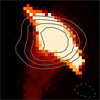
|
 |
Rare 'star-making machine' found in distant universe
Astronomers have uncovered an extreme stellar machine -- a galaxy in the very remote universe pumping out stars at a surprising rate of up to 4,000 per year. In comparison, our own Milky Way galaxy turns out an average of just 10 stars per year.
 FULL STORY FULL STORY
 |  |
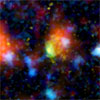
|
 |
Spacewalkers cut open Soyuz and remove pyrobolt
Cosmonauts Sergei Volkov and Oleg Kononenko cut open insulation on their Soyuz re-entry vehicle Thursday, removed an explosive bolt from a suspect connector and locked it in a blast-proof sleeve for return to Earth. The unprecedented space surgery was ordered to help Russian engineers troubleshoot a module separation problem that caused steep, rougher-than-usual descents during the last two Soyuz landings.
 SPACEWALK ENDS SPACEWALK ENDS
 EXPLOSIVE BOLT REMOVED EXPLOSIVE BOLT REMOVED
 COSMONAUT CUTS INTO SOYUZ COSMONAUT CUTS INTO SOYUZ
 SPACEWALK BEGINS SPACEWALK BEGINS
 PREVIEW STORY PREVIEW STORY
 MISSION STATUS CENTER - live updates MISSION STATUS CENTER - live updates
 |  |

|
 |

Additional coverage for subscribers:
 VIDEO:
AIRLOCK HATCH CLOSED TO CONCLUDE THE SPACEWALK PLAY VIDEO:
AIRLOCK HATCH CLOSED TO CONCLUDE THE SPACEWALK PLAY
 VIDEO:
PYROBOLT REMOVED AND PLACED IN BLAST-PROOF CASE PLAY VIDEO:
PYROBOLT REMOVED AND PLACED IN BLAST-PROOF CASE PLAY
 VIDEO:
WATCH AS THE HOLE IN SOYUZ INSULATION IS CUT PLAY VIDEO:
WATCH AS THE HOLE IN SOYUZ INSULATION IS CUT PLAY
 VIDEO:
PROTECTIVE COVERS PLACES OVER THRUSTER NOZZLES PLAY VIDEO:
PROTECTIVE COVERS PLACES OVER THRUSTER NOZZLES PLAY
 VIDEO:
KONONENKO BEGINS CLOSE-UP INSPECTIONS OF SOYUZ PLAY VIDEO:
KONONENKO BEGINS CLOSE-UP INSPECTIONS OF SOYUZ PLAY
 VIDEO:
TELESCOPING STRELA BOOM EXTENDED TO REACH SOYUZ PLAY VIDEO:
TELESCOPING STRELA BOOM EXTENDED TO REACH SOYUZ PLAY
 VIDEO:
VOLKOV HANDS TOOL BAGS OUT OF THE AIRLOCK PLAY VIDEO:
VOLKOV HANDS TOOL BAGS OUT OF THE AIRLOCK PLAY
 VIDEO:
FIRST SPACEWALKER EMERGES FROM THE STATION PLAY VIDEO:
FIRST SPACEWALKER EMERGES FROM THE STATION PLAY

 VIDEO:
EXPEDITION 17 SPACEWALK PREVIEW BRIEFING PLAY VIDEO:
EXPEDITION 17 SPACEWALK PREVIEW BRIEFING PLAY
 VIDEO:
RUSSIAN FLIGHT DIRECTOR GIVES CREW A PEP TALK PLAY VIDEO:
RUSSIAN FLIGHT DIRECTOR GIVES CREW A PEP TALK PLAY
 VIDEO:
STATION MANAGER TALKS ABOUT SOYUZ INVESTIGATION PLAY VIDEO:
STATION MANAGER TALKS ABOUT SOYUZ INVESTIGATION PLAY
 VIDEO:
FLIGHT DIRECTOR SUMMARIZES THURSDAY'S SPACEWALK PLAY VIDEO:
FLIGHT DIRECTOR SUMMARIZES THURSDAY'S SPACEWALK PLAY
 VIDEO:
DEMONSTRATION OF PYROBOLT REMOVAL TASK PLAY VIDEO:
DEMONSTRATION OF PYROBOLT REMOVAL TASK PLAY
 VIDEO:
CONTINGENCY TRAINING TO INGRESS SOYUZ PLAY VIDEO:
CONTINGENCY TRAINING TO INGRESS SOYUZ PLAY
 VIDEO:
SUMMARY OF NEXT TUESDAY'S SPACEWALK PLAY VIDEO:
SUMMARY OF NEXT TUESDAY'S SPACEWALK PLAY
 MORE:
EXPEDITION 17 VIDEO COVERAGE MORE:
EXPEDITION 17 VIDEO COVERAGE
 NEW!:
STS-124 HIGH DEFINITION VIDEO NEW!:
STS-124 HIGH DEFINITION VIDEO
 SUBSCRIBE NOW SUBSCRIBE NOW

|
|
Special Report |

|
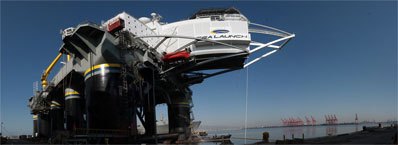
Spaceflight Now recently visited Sea Launch's Home Port in Long Beach, California, where an international team of technicians and engineers blend marine vessels and space hardware into a unique combination for placing commercial communications satellites into Earth orbit.
 FULL STORY FULL STORY
 PANORAMA GALLERY PANORAMA GALLERY
 |
 |
|
Earlier News |

|
Moon water discovery dampens formation theory
Using new techniques, scientists have discovered for the first time that tiny beads of volcanic glasses collected from two Apollo missions to the Moon contain water. The researchers found that, contrary to previous thought, water was not entirely vaporized in the violent events that formed the Moon.
 FULL STORY FULL STORY
 |  |

|
 |
Study puts solar spin on asteroids and their moons
Asteroids with moons, which scientists call binary asteroids, are common in the solar system. A longstanding question has been how the majority of such moons are formed. In this week's issue of the journal Nature, a trio of astronomers from Maryland and France say the surprising answer is sunlight, which can increase or decrease the spin rate of an asteroid.
 FULL STORY FULL STORY
 |  |

|
 |
Sample-collection tests by Phoenix lander continue
Phoenix Mars Lander's science and engineering teams are testing methods to get an icy sample into the Robotic Arm scoop for delivery to the Thermal and Evolved Gas Analyzer.
 FULL STORY FULL STORY
 |  |

|
 |
Space station passes over Hurricane Bertha
An external camera on the International Space Station captured footage of Hurricane Bertha on Tuesday morning as the orbiting complex flew 217 miles above the Atlantic Ocean. The hurricane was packing winds about about 120 miles per hour.
 |  |
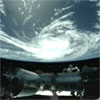
|
 |

Additional coverage for subscribers:
 VIDEO:
HURRICANE BERTHA SEEN FROM SPACE STATION PLAY VIDEO:
HURRICANE BERTHA SEEN FROM SPACE STATION PLAY
 SUBSCRIBE NOW SUBSCRIBE NOW

|
NASA sets schedule for remaining shuttle flights
NASA has unveiled a revised manifest for the final 10 flights in the space shuttle program, reflecting previously forecast delays across the board because of post-Columbia external tank safety upgrades that have stretched out deliveries. But shuttle Program Manager John Shannon said he's confident NASA can complete the space station and retire the shuttle fleet in 2010 as planned.
 FULL STORY FULL STORY
 SHUTTLE FLIGHT CHART SHUTTLE FLIGHT CHART
 SUMMARIES OF REMAINING FLIGHTS SUMMARIES OF REMAINING FLIGHTS
 |  |

|
 |
Two satellites in orbit after good ride from Ariane 5
An Ariane 5 rocket roared out of its jungle launch base Monday to put Arab and Asian commercial communications satellites into space, marking yet another successful ascent for the heavy-duty booster.
 FULL STORY FULL STORY
 |  |

|
 |
Phoenix lander delivers soil-chemistry sample
NASA's Phoenix Mars Lander used its robotic arm to deliver a second sample of soil for analysis by the spacecraft's wet chemistry laboratory, data received from the spacecraft confirmed.
 FULL STORY FULL STORY
 |  |

|
 |
Rosetta awakes from hibernation for asteroid
Spacecraft controllers have just awoken Rosetta from hibernation to prepare for its encounter with an asteroid in September. ESA's comet chaser will study the relatively rare asteroid as it flies by on its way to comet 67/P Churyumov-Gerasimenko.
 FULL STORY FULL STORY
 |  |

|
 |
Universe's stars and stripes
The Hubble Space Telescope has captured a delicate ribbon of gas floating eerily in our Galaxy, a ghostly reminder of a supernova explosion that occurred over 1,000 years ago, and which is still expanding at almost 10 million kilometres per hour today.
 FULL STORY FULL STORY
 |  |
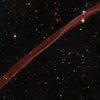
|
 |
Settling old debates, new discoveries at Mercury
Scientists have argued about the origins of Mercury's smooth plains and the source of its magnetic field for over 30 years. Now, analyses of data from the January 2008 flyby of the planet by the MESSENGER spacecraft have shown that volcanoes were involved in plains formation and suggest that its magnetic field is actively produced in the planet's core and is not a frozen relic.
 FULL STORY FULL STORY
 |  |
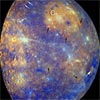
|
 |
Voyager 2 measures solar wind termination shock
Two University of Iowa space physicists report that the Voyager 2 spacecraft, which has been traveling outward from the Sun for 31 years, has made the first direct observations of the solar wind termination shock.
 FULL STORY FULL STORY
 |  |
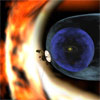
|
 |
STEREO craft examine solar system's invisible frontier
NASA's sun-focused STEREO spacecraft unexpectedly detected particles from the edge of the solar system last year, allowing University of California, Berkeley, scientists to map for the first time the energized particles in the region where the hot solar wind slams into the cold interstellar medium.
 FULL STORY FULL STORY
 |  |

|
 |
Phoenix set for next, possibly last bake in TEGA
After a busy weekend of scraping up piles of icy soil, Phoenix is preparing its ovens to sniff out the ingredients of this precious material, but a short circuit problem could make this the last trip to the TEGA instrument on Phoenix.
 FULL STORY FULL STORY
 |  |

|
 |
Redesigned Proton upper stage to fly in mid-August
Commercial flights of Russia's Proton rocket will resume next month, officials announced Tuesday, following redesign efforts on the booster's upper stage.
 FULL STORY FULL STORY
 |  |

|
 |
Mission to answer lingering questions from the sea
Ocean tides and currents across the globe still hold within their watery grasp the key to unanswered questions about our planet. Scientists hope the new follow-on mission to the Jason 1 and Topex/Poseidon satellite missions, equipped with the latest high-tech instruments, will bring them closer to answering broad fundamental questions.
 FULL STORY FULL STORY
 |  |

|
 |
Offshore industries helped dodge swirling waters
Hurricanes aren't the only hazards spinning up in the Gulf of Mexico -- they have a liquid counterpart in the waters below called ocean eddies. Offshore industries, such as oil and gas companies, have to keep a weather eye on both. Satellite ocean observations are a standard part of marine operations around the world.
 FULL STORY FULL STORY
 |  |
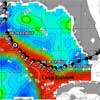
|
 |
Delta 2 rocket did its job successfully, NASA says
Initial concerns about the performance of the Delta 2 rocket that launched the Jason 2 oceanography satellite from Vandenberg Air Force Base in California earlier this month have proven unfounded, officials say.
 MISSION STATUS CENTER MISSION STATUS CENTER
 |  |

|
 |
New gamma ray burst instrument powers up
NASA's GLAST Burst Monitor Instrument Operations Center in Huntsville, Ala., the focal point for observing gamma ray bursts, was alive with energy as scientists gathered to witness instrument activation last week.
 FULL STORY FULL STORY
 GLAST LAUNCH COVERAGE GLAST LAUNCH COVERAGE
 |  |
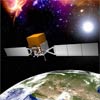
|
 |
Learning from Tunguska
The impact event that rocked the unsuspecting Siberian outback 100 years ago today may hold the secrets to the protection of our precious blue planet against a similar cosmic assault in the future.
 FULL STORY FULL STORY
 |  |

|
 |
SOHO finds 1,500th comet
The Solar and Heliospheric Observatory (SOHO) is celebrating the discovery of 1,500 comets since the mission began 13 years ago, making it more successful than all other comet discoverers throughout history put together.
 FULL STORY FULL STORY
 |  |

|
 |
100 years since Tunguska
At around 7:17 on the morning of June 30, 1908, a man based at the trading post at Vanavara in Siberia is sitting on his front porch. In a moment, 40 miles from the center of an immense blast of unknown origin, he will be hurled from his chair and the heat will be so intense he will feel as though his shirt is on fire.
 FULL STORY FULL STORY
 |  |

|
 |
Mars lander characterizes conditions near north pole
Martian soil analyzed by NASA's Phoenix lander could likely support plant life under the right conditions. "We basically have found what appears to be the nutrients to support life," says the lead scientist for the wet chemistry lab aboard the craft.
 FULL STORY FULL STORY
 |  |

|
 |
Questions await as Cassini begins a new mission
NASA's Cassini mission is closing one chapter of its journey at Saturn and embarking on a new one with a two-year mission that will address new questions and bring it closer to two of its most intriguing targets -- Titan and Enceladus.
 FULL STORY FULL STORY
 |  |
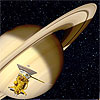
|
 |
Astronaut Barbara Morgan to leave NASA
Veteran space shuttle astronaut Barbara R. Morgan will leave NASA in August to become an educator at Idaho's Boise State University. Morgan was backup to Christa McAuliffe and later became the agency's first educator astronaut.
 FULL STORY FULL STORY
 ARCHIVE: STS-118 MISSION COVERAGE ARCHIVE: STS-118 MISSION COVERAGE
 VIDEO: BARBARA MORGAN INTERVIEWS VIDEO: BARBARA MORGAN INTERVIEWS
 VIDEO: STS-118 COVERAGE VIDEO: STS-118 COVERAGE
 STORE: STS-118 PIN - STS-118 PATCH STORE: STS-118 PIN - STS-118 PATCH
 |  |

|
 |
Russian military spacecraft launched by Proton booster
Russia launched a Proton rocket Thursday night with an early warning satellite to defend the country against missile attacks. The launch was the first mission for the Proton since a different version of the booster failed in March.
 FULL STORY FULL STORY
 |  |
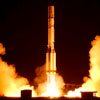
|
 |
NASA approves shuttle launch pad repair plan
Shuttle program managers Thursday approved a plan to strip away fire bricks from damaged sections of the "flame trench" at launch pad 39A, to erect a steel grid over the exposed concrete back wall and to spray on a thick coating of heat-resistant Fondu Fyre to protect the structure from super-hot shuttle booster exhaust.
 FULL STORY FULL STORY
 |  |

|
 |

Additional coverage for subscribers:
 VIDEO:
FOOTAGE OF THE PAD DAMAGE PLAY VIDEO:
FOOTAGE OF THE PAD DAMAGE PLAY
 VIDEO:
SHOW-AND-TELL ON FLAME TRENCH BRICKS PLAY VIDEO:
SHOW-AND-TELL ON FLAME TRENCH BRICKS PLAY
 MORE:
STS-124 VIDEO COVERAGE MORE:
STS-124 VIDEO COVERAGE
 NEW!:
STS-124 HIGH DEFINITION VIDEO NEW!:
STS-124 HIGH DEFINITION VIDEO
 SUBSCRIBE NOW SUBSCRIBE NOW

|
Mars air once had moisture, new soil analysis says
A new analysis of Martian soil data suggests that there was once enough water in the planet's atmosphere for a light drizzle or dew to hit the ground, leaving tell-tale signs of its interaction with the planet's surface.
 FULL STORY FULL STORY
 |  |
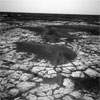
|
 |
Asteroid-hunting satellite will be a world first
Canada is building the world's first space telescope designed to detect and track asteroids as well as satellites. Called NEOSSat, this spacecraft will provide a significant improvement in surveillance of asteroids that pose a collision hazard with Earth and innovative technologies for tracking satellites in orbit high above our planet.
 FULL STORY FULL STORY
 |  |

|
 |
Giant impact explains the Mars dichotomy
The surface landscape of Mars, divided into lowlands in the north and highlands in the south, has long perplexed planetary scientists. Was it sculpted by several small impacts, via mantle convection in the planet's interior, or by one giant impact? Now scientists have shown through computer modeling that the Mars dichotomy, as the divided terrain has been termed, can indeed be explained by one giant impact early in the planet's history.
 FULL STORY FULL STORY
 |  |
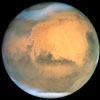
|
 |
Phoenix Mars lander puts soil in chemistry lab
NASA's Phoenix Mars Lander placed a sample of Martian soil in the spacecraft's wet chemistry laboratory today for the first time. Results from that instrument, part of Phoenix's Microscopy, Electrochemistry and Conductivity Analyzer, are expected to provide the first measurement of the acidity or alkalinity of the planet's soil.
 FULL STORY FULL STORY
 |  |
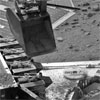
|
 |
Additional video from Delta launch of Jason 2
More video coverage has been posted to Spaceflight Now+Plus from last week's Delta 2 rocket launch that put the Jason 2 oceanography satellite into orbit from Vandenberg Air Force Base.
 |  |
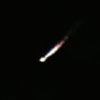
|
 |

Additional coverage for subscribers:
 VIDEO:
OUR LAUNCH PAD CAMERA PLAY VIDEO:
OUR LAUNCH PAD CAMERA PLAY
 VIDEO:
LAUNCH AS SEEN FROM THE PRESS SITE PLAY VIDEO:
LAUNCH AS SEEN FROM THE PRESS SITE PLAY
 VIDEO:
PAD GANTRY RETRACTED FROM ROCKET FOR LAUNCH PLAY VIDEO:
PAD GANTRY RETRACTED FROM ROCKET FOR LAUNCH PLAY
 VIDEO:
TIME-LAPSE MOVIE OF TOWER ROLLBACK PLAY VIDEO:
TIME-LAPSE MOVIE OF TOWER ROLLBACK PLAY
 MORE:
ALL JASON 2 VIDEO MORE:
ALL JASON 2 VIDEO
 SUBSCRIBE NOW SUBSCRIBE NOW

|
Water-seeking moon craft passes major tests
NASA's Lunar Crater Observation and Sensing Satellite is one step closer to determining whether water ice exists in a permanently shadowed crater near the lunar south pole, having passed rigorous preflight testing earlier this month.
 FULL STORY FULL STORY
 |  |

|
 |
Galaxy cannibals eat their neighbors
Previously unseen galactic cannibalism within the supermassive black holes that occupy the centres of Seyfert galaxies has been revealed by radio observations courtesy of the Very Large Array.
 FULL STORY FULL STORY
 |  |

|
 |
SpaceX pushes back launch date for next Falcon 1
The military informed SpaceX last week that mandatory support equipment and tracking stations in the Pacific Ocean are booked through the end of July, forcing officials to delay launch of the next Falcon 1 rocket, the company's founder said.
 FULL STORY FULL STORY
 |  |
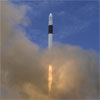
|
 |
Hawaiian lava holds clues for planetary evolution
Precision analysis of lava samples taken from the Kilauea Iki volcanic crater in Hawaii has given planetary scientists a new tool for reconstructing planetary origins.
 FULL STORY FULL STORY
 |  |

|
 |
Earth's laws still apply in distant Universe
One of the most important numbers in physics, the proton-electron mass ratio, is the same in a galaxy six billion light years away as it is here on Earth, according to new research, laying to rest debate about whether the laws of nature vary in different places in the Universe.
 FULL STORY FULL STORY
 |  |

|
 |
Phoenix confirms frozen water at landing site
Scientists relishing confirmation of water ice near the surface beside NASA's Phoenix Mars Lander anticipate even bigger discoveries from the robotic mission in the weeks ahead.
 FULL STORY FULL STORY
 |  |
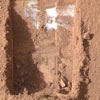
|
 |
Black holes have simple feeding habits
The results of a massive observing campaign of spiral galaxy M81 have shed light on the feeding habits of different sized black holes, and provide a benchmark for predicting the properties of a new class of black hole.
 FULL STORY FULL STORY
 |  |

|
 |
Satellite flown into space to monitor Earth's oceans
NASA partnered with European scientists to launch an ocean research satellite from California early Friday, giving forecasters a new tool to make more accurate predictions of weather patterns and climate change.
 FULL STORY FULL STORY
 MISSION STATUS CENTER MISSION STATUS CENTER
 PHOTO GALLERY: TOWER ROLLBACK PHOTO GALLERY: TOWER ROLLBACK
 PHOTO GALLERY: LIFTOFF IMAGES PHOTO GALLERY: LIFTOFF IMAGES
 PHOTO GALLERY: TIME-LAPSE LAUNCH IMAGES PHOTO GALLERY: TIME-LAPSE LAUNCH IMAGES
 PHOTO GALLERY: ADDITIONAL LAUNCH SHOTS PHOTO GALLERY: ADDITIONAL LAUNCH SHOTS
 |  |

|
 |

Additional coverage for subscribers:
 VIDEO:
JASON 2 SEPARATES FROM DELTA 2 PLAY VIDEO:
JASON 2 SEPARATES FROM DELTA 2 PLAY
 VIDEO:
JASON 2 LAUNCHES ABOARD DELTA 2 PLAY VIDEO:
JASON 2 LAUNCHES ABOARD DELTA 2 PLAY
 VIDEO:
LAUNCH PAD TOWER ROLLBACK PLAY VIDEO:
LAUNCH PAD TOWER ROLLBACK PLAY
 VIDEO:
DELTA 2 ROCKET LAUNCH CAMPAIGN PLAY VIDEO:
DELTA 2 ROCKET LAUNCH CAMPAIGN PLAY
 VIDEO:
JASON 2 LAUNCH CAMPAIGN PLAY VIDEO:
JASON 2 LAUNCH CAMPAIGN PLAY
 VIDEO:
PRE-LAUNCH NEWS CONFERENCE PLAY VIDEO:
PRE-LAUNCH NEWS CONFERENCE PLAY
 VIDEO:
JASON 2 MISSION SCIENCE BRIEFING PLAY VIDEO:
JASON 2 MISSION SCIENCE BRIEFING PLAY
 MORE:
ALL JASON 2 VIDEO MORE:
ALL JASON 2 VIDEO
 SUBSCRIBE NOW SUBSCRIBE NOW

|
Bright chunks dug up by Phoenix must have been ice
Dice-size crumbs of bright material have vanished from inside a trench where they were photographed by NASA's Phoenix Mars Lander four days ago, convincing scientists that the material was frozen water that vaporized after digging exposed it.
 FULL STORY FULL STORY
 |  |
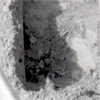
|
 |
Data relay satellite cluster launched for ORBCOMM
Six new communications relay satellites were launched into orbit Thursday to
rejuvenate a space-based messaging service operated by ORBCOMM Inc.
 FULL STORY FULL STORY
 |  |

|
 |
First results from Phoenix lander's bakery
After a difficult time delivering soil samples to one of the ovens onboard Phoenix, the results are now in from the first round of baking: no water, yet.
 FULL STORY FULL STORY
 |  |

|
 |
25th anniversary of first American woman in space
Sally Ride became the first American woman in space on June 18, 1983 when she flew aboard space shuttle Challenger on mission STS-7. To mark the anniversary, Spaceflight Now Plus subscribers can watch highlights of the mission and an interview with Ride.
 VIDEO INDEX VIDEO INDEX
 STORE: STS-7 MISSION PATCH STORE: STS-7 MISSION PATCH
 |  |
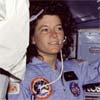
|
 |
Detective astronomers find hidden celestial gem
The European Space Agency's orbiting X-ray observatory XMM-Newton has re-discovered an ignored celestial gem. The object in question is one of the youngest and brightest supernova remnants in the Milky Way, the corpse of a star that exploded around 1,000 years ago.
 FULL STORY FULL STORY
 |  |
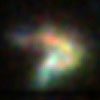
|
 |
Space shuttle pad repair options being debated
Engineers assessing extensive damage to launch pad 39A during the shuttle Discovery's May 31 takeoff said Monday they are confident the "flame trench" that diverts exhaust to either side can be repaired in time for NASA's next mission, the Oct. 8 launch of shuttle Atlantis on a flight to service the Hubble Space Telescope.
 FULL STORY FULL STORY
 IMAGES: MONDAY'S MEDIA TOUR IMAGES: MONDAY'S MEDIA TOUR
 IMAGES: EARLIER PHOTOS OF PAD DAMAGE IMAGES: EARLIER PHOTOS OF PAD DAMAGE
 |  |
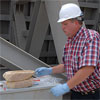
|
 |

Additional coverage for subscribers:
 VIDEO:
NASA ENGINEER DESCRIBES FLAME TRENCH BRICKS PLAY VIDEO:
NASA ENGINEER DESCRIBES FLAME TRENCH BRICKS PLAY
 MORE:
STS-124 VIDEO COVERAGE MORE:
STS-124 VIDEO COVERAGE
 NEW!:
STS-124 HIGH DEFINITION VIDEO NEW!:
STS-124 HIGH DEFINITION VIDEO
 SUBSCRIBE NOW SUBSCRIBE NOW

|
Sun sets on Ulysses mission
After more than 17 years dedicated to exploring the effects of solar activity on the space that surrounds us, the sun is setting on the Ulysses mission and will finally fade into darkness on July 1, but its legacy will live on.
 FULL STORY FULL STORY
 |  |

|
 |

Additional coverage for subscribers:
 VIDEO:
ULYSSES COVERAGE VIDEO:
ULYSSES COVERAGE
 SUBSCRIBE NOW SUBSCRIBE NOW

|
Trio of super-Earths discovered
A harvest of low mass planets has been discovered with the High Accuracy Radial Velocity Planet Searcher, and 45 other candidate planets with masses below 30 Earth masses have also been identified.
 FULL STORY FULL STORY
 |  |

|
 |
Discovery back on Earth
Commander Mark Kelly guided the space shuttle Discovery to a sun-drenched Florida landing Saturday, setting down on runway 15 at the Kennedy Space Center to close out a virtually flawless space station assembly mission, leaving a new Japanese lab module behind and bringing flight engineer Garrett Reisman back to Earth after 95 days in space.
 FULL STORY FULL STORY
 IMAGES: LANDING SEQUENCE IMAGES: LANDING SEQUENCE
 MISSION STATUS CENTER - live updates MISSION STATUS CENTER - live updates
 MORNING STORY MORNING STORY
 MAPS: LANDING GROUND TRACKS MAPS: LANDING GROUND TRACKS
 NASA TV SCHEDULE REV. Q (.pdf download) NASA TV SCHEDULE REV. Q (.pdf download)
 |  |
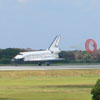
|
 |

Additional coverage for subscribers:
 VIDEO:
SHUTTLE DISCOVERY'S LANDING AS SEEN LIVE PLAY VIDEO:
SHUTTLE DISCOVERY'S LANDING AS SEEN LIVE PLAY
 VIDEO:
ASTRONAUTS' POST-LANDING PRESS CONFERENCE PLAY VIDEO:
ASTRONAUTS' POST-LANDING PRESS CONFERENCE PLAY
 VIDEO:
LANDING REPLAY: VAB ROOF CAMERA PLAY VIDEO:
LANDING REPLAY: VAB ROOF CAMERA PLAY
 VIDEO:
LANDING REPLAY: RUNWAY CLOSE-UP PLAY VIDEO:
LANDING REPLAY: RUNWAY CLOSE-UP PLAY
 VIDEO:
LANDING REPLAY: RUNWAY WEST PLAY VIDEO:
LANDING REPLAY: RUNWAY WEST PLAY
 VIDEO:
LANDING REPLAY: RUNWAY EAST PLAY VIDEO:
LANDING REPLAY: RUNWAY EAST PLAY
 VIDEO:
LANDING REPLAY: INFRARED TRACKING CAMERA PLAY VIDEO:
LANDING REPLAY: INFRARED TRACKING CAMERA PLAY
 VIDEO:
LANDING REPLAY: CAMERA ON NORTH END OF RUNWAY PLAY VIDEO:
LANDING REPLAY: CAMERA ON NORTH END OF RUNWAY PLAY
 VIDEO:
THE FLIGHT DAY 14 HIGHLIGHTS MOVIE PLAY VIDEO:
THE FLIGHT DAY 14 HIGHLIGHTS MOVIE PLAY
 VIDEO:
FRIDAY'S MISSION STATUS BRIEFING PLAY VIDEO:
FRIDAY'S MISSION STATUS BRIEFING PLAY
 MORE:
STS-124 VIDEO COVERAGE MORE:
STS-124 VIDEO COVERAGE
 NEW!:
STS-124 HIGH DEFINITION VIDEO NEW!:
STS-124 HIGH DEFINITION VIDEO
 SUBSCRIBE NOW SUBSCRIBE NOW

|
Good weather predicted for landing in Florida
The shuttle Discovery is in good shape and ready for landing Saturday at the Kennedy Space Center to close out a successful space station assembly mission. The Spaceflight Meteorology Group at the Johnson Space Center in Houston is predicting near ideal conditions for the planned 11:15 a.m. EDT touchdown.
 LANDING PREVIEW STORY LANDING PREVIEW STORY
 |  |

|
 |
NASA says lost object from shuttle no worry for entry
Engineers at the Johnson Space Center in Houston believe a flashing bit of debris spotted floating away from the shuttle Discovery this morning was a clip used to secure thermal insulation in the ship's rudder/speed brake to protect against engine heat during ascent. Flight controllers told the astronauts the lost clip poses no threat to a safe re-entry.
 FULL STORY FULL STORY
 EARLIER STORY EARLIER STORY
 |  |
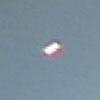
|
 |

Additional coverage for subscribers:
 VIDEO:
CBS NEWS AND WCBS RADIO INTERVIEW THE CREW PLAY VIDEO:
CBS NEWS AND WCBS RADIO INTERVIEW THE CREW PLAY
 VIDEO:
HOUSTON GIVES CREW A REPORT ON OBJECT, TAIL PLAY VIDEO:
HOUSTON GIVES CREW A REPORT ON OBJECT, TAIL PLAY
 VIDEO:
AREA OF INTEREST ON SHUTTLE TAIL FIN PLAY VIDEO:
AREA OF INTEREST ON SHUTTLE TAIL FIN PLAY
 VIDEO:
OBJECT SEEN FLOATING AWAY FROM THE SHUTTLE PLAY VIDEO:
OBJECT SEEN FLOATING AWAY FROM THE SHUTTLE PLAY
 VIDEO:
THE FLIGHT DAY 13 HIGHLIGHTS MOVIE PLAY VIDEO:
THE FLIGHT DAY 13 HIGHLIGHTS MOVIE PLAY
 MORE:
STS-124 VIDEO COVERAGE MORE:
STS-124 VIDEO COVERAGE
 NEW!:
STS-124 HIGH DEFINITION VIDEO NEW!:
STS-124 HIGH DEFINITION VIDEO
 SUBSCRIBE NOW SUBSCRIBE NOW

|
Ariane 5 reaches milestone 25th straight success
The Ariane 5 booster rocketed into space from a French Guiana launch pad minutes after sunset Thursday, painting a colorful spectacle in the sky en route to space with a British military communications satellite and a Turkish broadcasting spacecraft.
 FULL STORY FULL STORY
 |  |

|
 |
NASA says Hubble plans not threatened by pad repairs
Serious damage to the "flame trench" at launch pad 39A during the shuttle Discovery's May 31 takeoff will require extensive repairs, officials said Thursday, but engineers believe the work can be completed in time to support the planned Oct. 8 launch of shuttle Atlantis on a long-awaited flight to service the Hubble Space Telescope.
 FULL STORY FULL STORY
 IMAGES: PHOTOS OF PAD DAMAGE IMAGES: PHOTOS OF PAD DAMAGE
 |  |
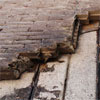
|
 |

Additional coverage for subscribers:
 VIDEO:
THURSDAY'S MISSION STATUS BRIEFING PLAY VIDEO:
THURSDAY'S MISSION STATUS BRIEFING PLAY
 MORE:
STS-124 VIDEO COVERAGE MORE:
STS-124 VIDEO COVERAGE
 NEW!:
STS-124 HIGH DEFINITION VIDEO NEW!:
STS-124 HIGH DEFINITION VIDEO
 SUBSCRIBE NOW SUBSCRIBE NOW

|
A new type of comet dust mineral found
NASA researchers have found a new mineral in a material that likely originated from comet 26P/Grigg-Skjellerup, which orbits the Sun once every five years.
 FULL STORY FULL STORY
 |  |

|
 |
Pluto assigned 'plutoid' tag in new classification
Almost two years after the International Astronomical Union (IAU) caused a worldwide furore by stripping Pluto of its former status as a 'proper' planet to a dwarf planet, the term 'plutoid' has been introduced to describe "Pluto-like transneptunian dwarf planets."
 FULL STORY FULL STORY
 |  |

|
 |
Oven full of Mars
After several attempts, Phoenix has finally succeeded in filling one of its ovens with Martian soil, ready to sniff out and assess its ingredients, such as water.
 FULL STORY FULL STORY
 |  |

|
 |
Successful first test of high speed Moon penetrator
High speed penetrators that could one day be used to breach the surface of planets, moons and asteroids have successfully passed their first test in the UK, accelerating to over 1000 kilometres per hour and 20,000 gee at the point of impact.
 FULL STORY FULL STORY
 |  |

|
 |
It's an off duty day for shuttle astronauts
The Discovery astronauts took the day off Thursday, enjoying the view from 210 miles up and chatting with family members in private teleconferences. The only mission-related activity on the schedule is a rocket firing to adjust the shuttle's orbit slightly to improve landing opportunities at the Kennedy Space Center.
 FULL STORY FULL STORY
 NASA TV SCHEDULE REV. P (.pdf download) NASA TV SCHEDULE REV. P (.pdf download)
 |  |

|
 |
NASA launches observatory with gamma ray vision
A Delta 2 rocket roared to life and successfully boosted a $690 million space telescope into orbit Wednesday, the most sophisticated observatory ever built to study the tell-tale high energy gamma rays generated by the most violent explosions and processes in the known universe.
 FULL STORY FULL STORY
 MISSION STATUS CENTER MISSION STATUS CENTER
 IMAGES: MOBILE SERVICE TOWER ROLLBACK IMAGES: MOBILE SERVICE TOWER ROLLBACK
 IMAGES: LAUNCH PHOTO GALLERY IMAGES: LAUNCH PHOTO GALLERY
 |  |

|
 |

Additional coverage for subscribers:
 VIDEO:
THE DELTA 2-HEAVY ROCKET BLASTS OFF WITH GLAST PLAY VIDEO:
THE DELTA 2-HEAVY ROCKET BLASTS OFF WITH GLAST PLAY
 VIDEO:
LAUNCH REPLAY: PAD 17B WIDE-SCREEN CAMERA PLAY VIDEO:
LAUNCH REPLAY: PAD 17B WIDE-SCREEN CAMERA PLAY
 VIDEO:
LAUNCH REPLAY: PAD 17A LOOKING SOUTHWARD PLAY VIDEO:
LAUNCH REPLAY: PAD 17A LOOKING SOUTHWARD PLAY
 VIDEO:
LAUNCH REPLAY: THE UCS-23 WEST TRACKER PLAY VIDEO:
LAUNCH REPLAY: THE UCS-23 WEST TRACKER PLAY
 VIDEO:
LAUNCH REPLAY: PAD ENGINEERING CAMERA PLAY VIDEO:
LAUNCH REPLAY: PAD ENGINEERING CAMERA PLAY
 VIDEO:
LAUNCH REPLAY: UMBILICAL TOWER CAMERA PLAY VIDEO:
LAUNCH REPLAY: UMBILICAL TOWER CAMERA PLAY
 VIDEO:
LAUNCH REPLAY: TRIDENT BLUFF LOCATION PLAY VIDEO:
LAUNCH REPLAY: TRIDENT BLUFF LOCATION PLAY
 VIDEO:
LAUNCH REPLAY: CCAFS INDUSTRIAL AREA PLAY VIDEO:
LAUNCH REPLAY: CCAFS INDUSTRIAL AREA PLAY
 VIDEO:
LAUNCH REPLAY: PRESS SITE 1 PLAY VIDEO:
LAUNCH REPLAY: PRESS SITE 1 PLAY
 VIDEO:
ROLLBACK OF PAD'S MOBILE SERVICE TOWER PLAY VIDEO:
ROLLBACK OF PAD'S MOBILE SERVICE TOWER PLAY
 VIDEO:
PRE-LAUNCH NEWS CONFERENCE PLAY VIDEO:
PRE-LAUNCH NEWS CONFERENCE PLAY
 VIDEO:
DELTA 2'S PRE-LAUNCH CAMPAIGN HIGHLIGHTS PLAY VIDEO:
DELTA 2'S PRE-LAUNCH CAMPAIGN HIGHLIGHTS PLAY
 VIDEO:
GLAST'S PRE-LAUNCH CAMPAIGN HIGHLIGHTS PLAY VIDEO:
GLAST'S PRE-LAUNCH CAMPAIGN HIGHLIGHTS PLAY
 NEW!:
HIGH DEFINITION VIDEO NEW!:
HIGH DEFINITION VIDEO
 SUBSCRIBE NOW SUBSCRIBE NOW

|
NASA considers SARJ work on next shuttle visit
NASA managers are considering a plan for the crew of the next space station assembly mission, scheduled for launch around Nov. 10, to clean up and lubricate a damaged, debris covered solar array drive gear and to replace 12 bearing assemblies in a bid to use the mechanism as long as possible before switching to a backup gear, an official said Wednesday.
 FULL STORY FULL STORY
 |  |

|
 |

Additional coverage for subscribers:
 VIDEO:
THE FLIGHT DAY 12 HIGHLIGHTS MOVIE PLAY VIDEO:
THE FLIGHT DAY 12 HIGHLIGHTS MOVIE PLAY
 VIDEO:
WEDNESDAY'S MISSION STATUS BRIEFING PLAY VIDEO:
WEDNESDAY'S MISSION STATUS BRIEFING PLAY
 MORE:
STS-124 VIDEO COVERAGE MORE:
STS-124 VIDEO COVERAGE
 NEW!:
STS-124 HIGH DEFINITION VIDEO NEW!:
STS-124 HIGH DEFINITION VIDEO
 SUBSCRIBE NOW SUBSCRIBE NOW

|
Shuttle Discovery undocks from the space station
After its successful visit to the space station that delivered Japan's Kibo science laboratory, the largest module for the complex, shuttle Discovery undocked at 7:42 a.m. EDT Wednesday morning to prepare for this weekend's landing.
 FULL STORY FULL STORY
 PREVIEW STORY PREVIEW STORY
 MISSION STATUS CENTER - live updates MISSION STATUS CENTER - live updates
 |  |
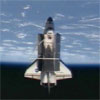
|
 |

Additional coverage for subscribers:
 VIDEO:
WEDNESDAY'S FLIGHT DIRECTOR INTERVIEW PLAY VIDEO:
WEDNESDAY'S FLIGHT DIRECTOR INTERVIEW PLAY
 VIDEO:
NARRATED PREVIEW OF HEAT-SHIELD INSPECTIONS PLAY VIDEO:
NARRATED PREVIEW OF HEAT-SHIELD INSPECTIONS PLAY
 VIDEO:
NARRATED PREVIEW OF DISCOVERY'S UNDOCKING PLAY VIDEO:
NARRATED PREVIEW OF DISCOVERY'S UNDOCKING PLAY
 MORE:
STS-124 VIDEO COVERAGE MORE:
STS-124 VIDEO COVERAGE
 NEW!:
STS-124 HIGH DEFINITION VIDEO NEW!:
STS-124 HIGH DEFINITION VIDEO
 SUBSCRIBE NOW SUBSCRIBE NOW

|
Shuttle crew closes hatches for undocking Wednesday
The shuttle Discovery's crew bid farewell to space station commander Sergei Volkov, Oleg Kononenko and incoming flight engineer Gregory Chamitoff Tuesday, sharing a few final thoughts, hugs and handshakes before closing hatches and preparing the shuttle for undocking early Wednesday.
 FULL STORY FULL STORY
 NASA TV SCHEDULE REV. O (.pdf download) NASA TV SCHEDULE REV. O (.pdf download)
 |  |
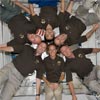
|
 |

Additional coverage for subscribers:
 VIDEO:
THE FLIGHT DAY 11 HIGHLIGHTS MOVIE PLAY VIDEO:
THE FLIGHT DAY 11 HIGHLIGHTS MOVIE PLAY
 VIDEO:
TUESDAY'S MISSION STATUS BRIEFING PLAY VIDEO:
TUESDAY'S MISSION STATUS BRIEFING PLAY
 VIDEO:
FAREWELL CEREMONY BETWEEN SHUTTLE AND ISS CREWS PLAY VIDEO:
FAREWELL CEREMONY BETWEEN SHUTTLE AND ISS CREWS PLAY
 MORE:
STS-124 VIDEO COVERAGE MORE:
STS-124 VIDEO COVERAGE
 NEW!:
STS-124 HIGH DEFINITION VIDEO NEW!:
STS-124 HIGH DEFINITION VIDEO
 SUBSCRIBE NOW SUBSCRIBE NOW

|
Reisman prepares for home after station expedition
The Discovery astronauts are working through a final day of equipment transfers to and from the space station before closing hatches late Tuesday and undocking early Wednesday. Outgoing flight engineer Garrett Reisman, returning to Earth after three months in space, planned to squeeze in a final few hours of handover time, briefing his replacement, Gregory Chamitoff, on the intricacies of life aboard the station.
 FULL STORY FULL STORY
 NASA TV SCHEDULE REV. N (.pdf download) NASA TV SCHEDULE REV. N (.pdf download)
 |  |

|
 |

Additional coverage for subscribers:
 VIDEO:
TUESDAY'S FLIGHT DIRECTOR INTERVIEW PLAY VIDEO:
TUESDAY'S FLIGHT DIRECTOR INTERVIEW PLAY
 VIDEO:
THE FLIGHT DAY 10 HIGHLIGHTS MOVIE PLAY VIDEO:
THE FLIGHT DAY 10 HIGHLIGHTS MOVIE PLAY
 MORE:
STS-124 VIDEO COVERAGE MORE:
STS-124 VIDEO COVERAGE
 NEW!:
STS-124 HIGH DEFINITION VIDEO NEW!:
STS-124 HIGH DEFINITION VIDEO
 SUBSCRIBE NOW SUBSCRIBE NOW

|
Spacewalker says cleaning damaged joint a 'big job'
The powder-like debris dusting the outer edge of the space station's left-side solar array rotary mechanism does not appear to represent a serious problem, spacewalker Mike Fossum said Monday. He said the grease and debris seen on the port solar alpha rotary joint does not look anything like the much more severe contamination that has hobbled the station's right-side SARJ.
 FULL STORY FULL STORY
 NASA TV SCHEDULE REV. M (.pdf download) NASA TV SCHEDULE REV. M (.pdf download)
 |  |

|
 |

Additional coverage for subscribers:
 VIDEO:
MONDAY'S MISSION STATUS BRIEFING PLAY VIDEO:
MONDAY'S MISSION STATUS BRIEFING PLAY
 VIDEO:
JOINT CREW IN-FLIGHT NEWS CONFERENCE PLAY VIDEO:
JOINT CREW IN-FLIGHT NEWS CONFERENCE PLAY
 VIDEO:
KIBO LAB'S ROBOT ARM EXTENDED AND CHECKED OUT PLAY VIDEO:
KIBO LAB'S ROBOT ARM EXTENDED AND CHECKED OUT PLAY
 VIDEO:
NARRATED PREVIEW OF ROBOT ARM DEPLOYMENT PLAY VIDEO:
NARRATED PREVIEW OF ROBOT ARM DEPLOYMENT PLAY
 VIDEO:
MONDAY'S FLIGHT DIRECTOR INTERVIEW PLAY VIDEO:
MONDAY'S FLIGHT DIRECTOR INTERVIEW PLAY
 MORE:
STS-124 VIDEO COVERAGE MORE:
STS-124 VIDEO COVERAGE
 NEW!:
STS-124 HIGH DEFINITION VIDEO NEW!:
STS-124 HIGH DEFINITION VIDEO
 SUBSCRIBE NOW SUBSCRIBE NOW

|
Japan's robotic arm extended and tested
The Discovery astronauts exercised the Japanese Kibo module's robot arm Monday, re-opened the Japanese logistics module mounted atop Kibo Friday and replaced spacesuit battery chargers in the Quest airlock module.
 PREVIEW STORY PREVIEW STORY
 NASA TV SCHEDULE REV. L (.pdf download) NASA TV SCHEDULE REV. L (.pdf download)
 |  |
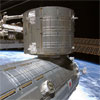
|
 |

Additional coverage for subscribers:
 VIDEO:
THE FLIGHT DAY 9 HIGHLIGHTS MOVIE PLAY VIDEO:
THE FLIGHT DAY 9 HIGHLIGHTS MOVIE PLAY
 MORE:
STS-124 VIDEO COVERAGE MORE:
STS-124 VIDEO COVERAGE
 NEW!:
STS-124 HIGH DEFINITION VIDEO NEW!:
STS-124 HIGH DEFINITION VIDEO
 SUBSCRIBE NOW SUBSCRIBE NOW

|
OTHER HEADLINES Additional stories today
|
 |
Communications spacecraft launched by China -- China launched a new communications satellite Monday to beam television programming directly to millions of homes and businesses fitted with small receiving dishes, a state news agency reported.
|
 |
Discovery crew completes third and final spacewalk
Perched on the end of the space station's fully extended robot arm, astronaut Ron Garan manually carried a 528-pound nitrogen tank from one side of the lab's main power truss to the other Sunday, enjoying a spectacular there-and-back windshield-wiper ride that carried him eight stories above the research station.
 SPACEWALK NO. 3 ENDS SPACEWALK NO. 3 ENDS
 TANK REPLACED, SARJ SAMPLE TAKEN TANK REPLACED, SARJ SAMPLE TAKEN
 PREVIEW STORY PREVIEW STORY
 |  |

|
 |

Additional coverage for subscribers:
 VIDEO:
SUNDAY'S MISSION STATUS BRIEFING PLAY VIDEO:
SUNDAY'S MISSION STATUS BRIEFING PLAY
 VIDEO:
NARRATED PREVIEW OF SPACEWALK NO. 3 PLAY VIDEO:
NARRATED PREVIEW OF SPACEWALK NO. 3 PLAY
 VIDEO:
ANIMATION OF NITROGEN TANK REPLACEMENT PLAY VIDEO:
ANIMATION OF NITROGEN TANK REPLACEMENT PLAY
 VIDEO:
SUNDAY'S FLIGHT DIRECTOR INTERVIEW PLAY VIDEO:
SUNDAY'S FLIGHT DIRECTOR INTERVIEW PLAY
 VIDEO:
THE FLIGHT DAY 8 HIGHLIGHTS MOVIE PLAY VIDEO:
THE FLIGHT DAY 8 HIGHLIGHTS MOVIE PLAY
 MORE:
STS-124 VIDEO COVERAGE MORE:
STS-124 VIDEO COVERAGE
 NEW!:
STS-124 HIGH DEFINITION VIDEO NEW!:
STS-124 HIGH DEFINITION VIDEO
 SUBSCRIBE NOW SUBSCRIBE NOW

|
Booster cameras give dramatic views of launch
Hitch a ride up and down aboard the twin solid rocket boosters that launched shuttle Discovery on May 31. Video from cameras mounted on the reusable boosters provides stunning views of the ascent and subsequent splashdown into the Atlantic Ocean. The movies are presented here with launch audio.
 |  |
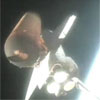
|
 |

Additional coverage for subscribers:
 VIDEO:
LEFT-HAND BOOSTER CAMERA LOOKING UPWARD PLAY VIDEO:
LEFT-HAND BOOSTER CAMERA LOOKING UPWARD PLAY
 VIDEO:
LEFT-HAND BOOSTER CAMERA LOOKING INBOARD PLAY VIDEO:
LEFT-HAND BOOSTER CAMERA LOOKING INBOARD PLAY
 VIDEO:
LEFT-HAND BOOSTER CAMERA LOOKING DOWNWARD PLAY VIDEO:
LEFT-HAND BOOSTER CAMERA LOOKING DOWNWARD PLAY
 VIDEO:
RIGHT-HAND BOOSTER CAMERA LOOKING UPWARD PLAY VIDEO:
RIGHT-HAND BOOSTER CAMERA LOOKING UPWARD PLAY
 VIDEO:
RIGHT-HAND BOOSTER CAMERA LOOKING DOWNWARD PLAY VIDEO:
RIGHT-HAND BOOSTER CAMERA LOOKING DOWNWARD PLAY
 MORE:
STS-124 VIDEO COVERAGE MORE:
STS-124 VIDEO COVERAGE
 NEW!:
STS-124 HIGH DEFINITION VIDEO NEW!:
STS-124 HIGH DEFINITION VIDEO
 SUBSCRIBE NOW SUBSCRIBE NOW

|
Phoenix tries to deliver first sample to instrument deck
An image beamed back to Earth from the Phoenix Mars lander early Saturday shows the platform's robotic arm has dumped a load of dirt near the opening of a tiny high-temperature oven, but a sensor inside the instrument did not detect any soil traveling through the narrow portal.
 FULL STORY FULL STORY
 |  |

|
 |
Japanese robotic arm flexed for first time
The Discovery astronauts unlimbered the Kibo laboratory module's Japanese robot arm Saturday and prepared spacesuits and equipment for a third and final spacewalk Sunday to collect debris samples from a solar array rotary joint and install a tank of pressurized nitrogen for the space station's ammonia coolant loops.
 FULL STORY FULL STORY
 MISSION STATUS CENTER - live updates MISSION STATUS CENTER - live updates
 NASA TV SCHEDULE REV. K (.pdf download) NASA TV SCHEDULE REV. K (.pdf download)
 |  |

|
 |

Additional coverage for subscribers:
 VIDEO:
JAPANESE VIP CALL TO STATION PLAY VIDEO:
JAPANESE VIP CALL TO STATION PLAY
 VIDEO:
SATURDAY'S MISSION STATUS BRIEFING PLAY VIDEO:
SATURDAY'S MISSION STATUS BRIEFING PLAY
 VIDEO:
MEDIA INTERVIEWS WITH SHUTTLE AND ISS CREWS PLAY VIDEO:
MEDIA INTERVIEWS WITH SHUTTLE AND ISS CREWS PLAY
 VIDEO:
KIBO LAB'S ROBOTIC ARM FLEXES FOR FIRST TIME PLAY VIDEO:
KIBO LAB'S ROBOTIC ARM FLEXES FOR FIRST TIME PLAY
 VIDEO:
NARRATED PREVIEW OF ARM'S FIRST MOVEMENTS PLAY VIDEO:
NARRATED PREVIEW OF ARM'S FIRST MOVEMENTS PLAY
 VIDEO:
SATURDAY'S FLIGHT DIRECTOR INTERVIEW PLAY VIDEO:
SATURDAY'S FLIGHT DIRECTOR INTERVIEW PLAY
 VIDEO:
CREW'S DOWNLINKED REPLAY OF LOGISTICS MODULE MOVE PLAY VIDEO:
CREW'S DOWNLINKED REPLAY OF LOGISTICS MODULE MOVE PLAY
 VIDEO:
THE FLIGHT DAY 7 HIGHLIGHTS MOVIE PLAY VIDEO:
THE FLIGHT DAY 7 HIGHLIGHTS MOVIE PLAY
 MORE:
STS-124 VIDEO COVERAGE MORE:
STS-124 VIDEO COVERAGE
 NEW!:
STS-124 HIGH DEFINITION VIDEO NEW!:
STS-124 HIGH DEFINITION VIDEO
 SUBSCRIBE NOW SUBSCRIBE NOW

|
Spacewalkers may gather grease sample from joint
The Discovery astronauts may be asked to collect a sample of the presumed grease seen inside the space station's left-side solar alpha rotary joint. NASA managers have not made a final decision, but engineers would like to get a sample to pin down where the grease might be coming from and astronaut Michael Fossum will be in the area during a third and final spacewalk Sunday.
 FULL STORY FULL STORY
 NASA TV SCHEDULE REV. J (.pdf download) NASA TV SCHEDULE REV. J (.pdf download)
 |  |
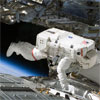
|
 |

Additional coverage for subscribers:
 VIDEO:
FRIDAY'S MISSION STATUS BRIEFING PLAY VIDEO:
FRIDAY'S MISSION STATUS BRIEFING PLAY
 VIDEO:
SHUTTLE CREW ASKED TO TAKE PHOTOS OF WING PANELS PLAY VIDEO:
SHUTTLE CREW ASKED TO TAKE PHOTOS OF WING PANELS PLAY
 MORE:
STS-124 VIDEO COVERAGE MORE:
STS-124 VIDEO COVERAGE
 NEW!:
STS-124 HIGH DEFINITION VIDEO NEW!:
STS-124 HIGH DEFINITION VIDEO
 SUBSCRIBE NOW SUBSCRIBE NOW

|
Japanese logistics module moved atop the Kibo lab
The Discovery astronauts worked through a busy day inside the international space station Friday, continuing the outfitting of the Japanese Kibo laboratory module and moving a smaller storage module to its permanent home on Kibo's upward-facing port.
 PREVIEW STORY PREVIEW STORY
 MISSION STATUS CENTER - live updates MISSION STATUS CENTER - live updates
 NASA TV SCHEDULE REV. I (.pdf download) NASA TV SCHEDULE REV. I (.pdf download)
 |  |

|
 |

Additional coverage for subscribers:
 VIDEO:
JAPANESE LOGISTICS MODULE MOVED TO KIBO LAB'S ROOF PLAY VIDEO:
JAPANESE LOGISTICS MODULE MOVED TO KIBO LAB'S ROOF PLAY
 VIDEO:
STATION'S ROBOT ARM GRAPPLES LOGISTICS MODULE PLAY VIDEO:
STATION'S ROBOT ARM GRAPPLES LOGISTICS MODULE PLAY
 VIDEO:
MEDIA INTERVIEWS WITH SHUTTLE AND ISS COMMANDERS PLAY VIDEO:
MEDIA INTERVIEWS WITH SHUTTLE AND ISS COMMANDERS PLAY
 VIDEO:
THE FLIGHT DAY 6 HIGHLIGHTS MOVIE PLAY VIDEO:
THE FLIGHT DAY 6 HIGHLIGHTS MOVIE PLAY
 VIDEO:
FRIDAY'S FLIGHT DIRECTOR INTERVIEW PLAY VIDEO:
FRIDAY'S FLIGHT DIRECTOR INTERVIEW PLAY
 VIDEO:
NARRATED PREVIEW OF LOGISTICS MODULE MOVE PLAY VIDEO:
NARRATED PREVIEW OF LOGISTICS MODULE MOVE PLAY
 VIDEO:
BUZZ LIGHTYEAR TOY ON THE LOOSE IN SPACE PLAY VIDEO:
BUZZ LIGHTYEAR TOY ON THE LOOSE IN SPACE PLAY
 VIDEO:
ASTRONAUTS INVITE VIEWERS TO DINNER PLAY VIDEO:
ASTRONAUTS INVITE VIEWERS TO DINNER PLAY
 MORE:
STS-124 VIDEO COVERAGE MORE:
STS-124 VIDEO COVERAGE
 NEW!:
STS-124 HIGH DEFINITION VIDEO NEW!:
STS-124 HIGH DEFINITION VIDEO
 SUBSCRIBE NOW SUBSCRIBE NOW

|
Spacewalkers take second excursion outside Kibo
Astronauts Mike Fossum and Ron Garan conducted a seven-hour spacewalk Thursday to mount cameras on Japan's Kibo lab module, remove launch locks and prepare a docking port for the attachment Friday of a Japanese logistics module.
 STATION'S OTHER ROTARY JOINT INSPECTED STATION'S OTHER ROTARY JOINT INSPECTED
 SPACEWALK NO. 2 BEGINS SPACEWALK NO. 2 BEGINS
 PREVIEW STORY PREVIEW STORY
 NASA TV SCHEDULE REV. G (.pdf download) NASA TV SCHEDULE REV. G (.pdf download)
 |  |

|
 |

Additional coverage for subscribers:
 VIDEO:
THURSDAY'S MISSION STATUS BRIEFING PLAY VIDEO:
THURSDAY'S MISSION STATUS BRIEFING PLAY
 VIDEO:
INSPECTION OF THE PORT-SIDE SOLAR ROTARY JOINT PLAY VIDEO:
INSPECTION OF THE PORT-SIDE SOLAR ROTARY JOINT PLAY
 VIDEO:
FAULTY TV CAMERA REMOVED FROM STATION PORT TRUSS PLAY VIDEO:
FAULTY TV CAMERA REMOVED FROM STATION PORT TRUSS PLAY
 VIDEO:
THERMAL SLEEVE PLACED ON KIBO TRUNNION PIN PLAY VIDEO:
THERMAL SLEEVE PLACED ON KIBO TRUNNION PIN PLAY
 VIDEO:
LAUNCH LOCKS RELEASED ON KIBO'S UPPER PORT PLAY VIDEO:
LAUNCH LOCKS RELEASED ON KIBO'S UPPER PORT PLAY
 VIDEO:
SPACEWALKERS INSTALL PAIR OF TV CAMERAS ON KIBO PLAY VIDEO:
SPACEWALKERS INSTALL PAIR OF TV CAMERAS ON KIBO PLAY
 VIDEO:
MIKE FOSSUM EMERGES FROM AIRLOCK FOR EVA NO. 2 PLAY VIDEO:
MIKE FOSSUM EMERGES FROM AIRLOCK FOR EVA NO. 2 PLAY
 VIDEO:
NARRATED PREVIEW OF SPACEWALK NO. 2 PLAY VIDEO:
NARRATED PREVIEW OF SPACEWALK NO. 2 PLAY
 VIDEO:
THURSDAY'S FLIGHT DIRECTOR INTERVIEW PLAY VIDEO:
THURSDAY'S FLIGHT DIRECTOR INTERVIEW PLAY
 VIDEO:
THE FLIGHT DAY 5 HIGHLIGHTS MOVIE PLAY VIDEO:
THE FLIGHT DAY 5 HIGHLIGHTS MOVIE PLAY
 MORE:
STS-124 VIDEO COVERAGE MORE:
STS-124 VIDEO COVERAGE
 NEW!:
STS-124 HIGH DEFINITION VIDEO NEW!:
STS-124 HIGH DEFINITION VIDEO
 SUBSCRIBE NOW SUBSCRIBE NOW

|
Astronauts enter roomy Kibo laboratory module
The 10 astronauts aboard the shuttle-space station complex opened up the newly installed Japanese Kibo module Wednesday at 5:05 p.m., floated inside and literally bounced off the walls, enjoying a chance for some impromptu zero gravity acrobatics in the roomy new addition.
 FULL STORY FULL STORY
 IMAGES: OUR LAUNCH GALLERY IMAGES: OUR LAUNCH GALLERY
 |  |
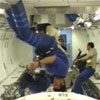
|
 |

Additional coverage for subscribers:
 VIDEO:
WEDNESDAY'S MISSION STATUS BRIEFING PLAY VIDEO:
WEDNESDAY'S MISSION STATUS BRIEFING PLAY
 VIDEO:
ASTRONAUTS ENTER THE KIBO MODULE FOR FIRST TIME PLAY VIDEO:
ASTRONAUTS ENTER THE KIBO MODULE FOR FIRST TIME PLAY
 VIDEO:
CEREMONY BEFORE KIBO HATCH OPENING PLAY VIDEO:
CEREMONY BEFORE KIBO HATCH OPENING PLAY
 MORE:
STS-124 VIDEO COVERAGE MORE:
STS-124 VIDEO COVERAGE
 NEW!:
STS-124 HIGH DEFINITION VIDEO NEW!:
STS-124 HIGH DEFINITION VIDEO
 SUBSCRIBE NOW SUBSCRIBE NOW

|
Space station cosmonaut repairs troubled toilet
Cosmonaut-turned-plumber Oleg Kononenko replaced a pump in the space station's balky Russian toilet Wednesday and initial tests indicated the potty's urine collection system was working normally again. While engineers will monitor the toilet's operation to make sure the repair was, in fact, successful, they were hopeful a potentially difficult problem had been resolved.
 FULL STORY FULL STORY
 MORNING PREVIEW STORY MORNING PREVIEW STORY
 NASA TV SCHEDULE REV. F (.pdf download) NASA TV SCHEDULE REV. F (.pdf download)
 |  |

|
 |

Additional coverage for subscribers:
 VIDEO:
THE FLIGHT DAY 4 HIGHLIGHTS MOVIE PLAY VIDEO:
THE FLIGHT DAY 4 HIGHLIGHTS MOVIE PLAY
 VIDEO:
TUESDAY'S MISSION STATUS BRIEFING PLAY VIDEO:
TUESDAY'S MISSION STATUS BRIEFING PLAY
 MORE:
STS-124 VIDEO COVERAGE MORE:
STS-124 VIDEO COVERAGE
 NEW!:
STS-124 HIGH DEFINITION VIDEO NEW!:
STS-124 HIGH DEFINITION VIDEO
 SUBSCRIBE NOW SUBSCRIBE NOW

|
Japan's science laboratory module added to station
Japanese astronaut Akihiko Hoshide, operating the station's robot arm, pulled the 15-ton Kibo lab module from Discovery's cargo bay and attached it to the station on Tuesday as a 7-hour spacewalk concluded.
 FULL STORY FULL STORY
 SPACEWALK ENDS; KIBO ATTACHED SPACEWALK ENDS; KIBO ATTACHED
 STATION ROTARY JOINT INSPECTED STATION ROTARY JOINT INSPECTED
 SPACEWALKERS PREP KIBO MODULE SPACEWALKERS PREP KIBO MODULE
 INSPECTION BOOM RETRIEVED INSPECTION BOOM RETRIEVED
 EVA NO. 1 BEGINS EVA NO. 1 BEGINS
 PREVIEW STORY PREVIEW STORY
 NASA TV SCHEDULE REV. E (.pdf download) NASA TV SCHEDULE REV. E (.pdf download)
 |  |

|
 |

Additional coverage for subscribers:
 VIDEO:
KIBO SCIENCE LAB ATTACHED TO THE SPACE STATION PLAY VIDEO:
KIBO SCIENCE LAB ATTACHED TO THE SPACE STATION PLAY
 VIDEO:
KIBO MODULE UNBERTHED FROM SHUTTLE PAYLOAD BAY PLAY VIDEO:
KIBO MODULE UNBERTHED FROM SHUTTLE PAYLOAD BAY PLAY
 VIDEO:
CLOSEUP INSPECTION OF STATION'S SOLAR ROTARY JOINT PLAY VIDEO:
CLOSEUP INSPECTION OF STATION'S SOLAR ROTARY JOINT PLAY
 VIDEO:
FOSSUM UNBOLTS LOCKS ON KIBO'S WINDOW COVERINGS PLAY VIDEO:
FOSSUM UNBOLTS LOCKS ON KIBO'S WINDOW COVERINGS PLAY
 VIDEO:
SPACEWALKERS REMOVE COVERS ON KIBO'S PORT PLAY VIDEO:
SPACEWALKERS REMOVE COVERS ON KIBO'S PORT PLAY
 VIDEO:
SHUTTLE POWER UMBILICALS UNHOOKED FROM KIBO PLAY VIDEO:
SHUTTLE POWER UMBILICALS UNHOOKED FROM KIBO PLAY
 VIDEO:
SHUTTLE INSPECTION BOOM RETRIEVED FROM THE STATION PLAY VIDEO:
SHUTTLE INSPECTION BOOM RETRIEVED FROM THE STATION PLAY
 VIDEO:
SPACEWALKER RON GARAN REMOVES COVER ON BOOM PLAY VIDEO:
SPACEWALKER RON GARAN REMOVES COVER ON BOOM PLAY
 VIDEO:
SPACEWALKER MIKE FOSSUM FREES ARM'S ELBOW CAMERA PLAY VIDEO:
SPACEWALKER MIKE FOSSUM FREES ARM'S ELBOW CAMERA PLAY
 VIDEO:
ANIMATION OF KIBO MODULE INSTALLATION PLAY VIDEO:
ANIMATION OF KIBO MODULE INSTALLATION PLAY
 VIDEO:
ANIMATION OF INSPECTION BOOM RETRIEVAL PLAY VIDEO:
ANIMATION OF INSPECTION BOOM RETRIEVAL PLAY
 VIDEO:
NARRATED PREVIEW OF SPACEWALK NO. 1 PLAY VIDEO:
NARRATED PREVIEW OF SPACEWALK NO. 1 PLAY
 VIDEO:
TUESDAY'S FLIGHT DIRECTOR INTERVIEW PLAY VIDEO:
TUESDAY'S FLIGHT DIRECTOR INTERVIEW PLAY
 VIDEO:
THE FLIGHT DAY 3 HIGHLIGHTS MOVIE PLAY VIDEO:
THE FLIGHT DAY 3 HIGHLIGHTS MOVIE PLAY
 MORE:
STS-124 VIDEO COVERAGE MORE:
STS-124 VIDEO COVERAGE
 NEW!:
STS-124 HIGH DEFINITION VIDEO NEW!:
STS-124 HIGH DEFINITION VIDEO
 SUBSCRIBE NOW SUBSCRIBE NOW

|
NASA begins investigation into shuttle pad damage
At the Kennedy Space Center, an investigation has been launched to find out what caused extensive damage to pad 39A as it was pounded by Discovery's exhaust plumes during liftoff Saturday.
 FULL STORY FULL STORY
 IMAGES: PHOTOS OF PAD DAMAGE IMAGES: PHOTOS OF PAD DAMAGE
 NASA TV SCHEDULE REV. D (.pdf download) NASA TV SCHEDULE REV. D (.pdf download)
 |  |
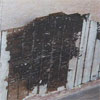
|
 |

Additional coverage for subscribers:
 VIDEO:
CREW'S REMARKABLE CAMCORDER FOOTAGE FROM MONDAY PLAY VIDEO:
CREW'S REMARKABLE CAMCORDER FOOTAGE FROM MONDAY PLAY
 VIDEO:
MONDAY'S MISSION STATUS BRIEFING PLAY VIDEO:
MONDAY'S MISSION STATUS BRIEFING PLAY
 MORE:
STS-124 VIDEO COVERAGE MORE:
STS-124 VIDEO COVERAGE
 NEW!:
STS-124 HIGH DEFINITION VIDEO NEW!:
STS-124 HIGH DEFINITION VIDEO
 SUBSCRIBE NOW SUBSCRIBE NOW

|
Phoenix lander's robot arm grabs a scoop of Mars
The robotic arm on NASA's Phoenix lander dug several inches into the Martian tundra this weekend, scraping up bits of soil with what looks like small clumps of embedded ice, mission scientists said Monday.
 FULL STORY FULL STORY
 |  |

|
 |
Discovery arrives at station to install major module
The shuttle Discovery glided to a gentle docking with the international space station Monday, wrapping up a two-day orbital rendezvous after pausing directly below the lab complex for a slow-motion back flip that gave the lab crew a chance to photograph the orbiter's heat shield.
 FULL STORY FULL STORY
 PREVIEW STORY PREVIEW STORY
 MISSION STATUS CENTER - live updates MISSION STATUS CENTER - live updates
 NASA TV SCHEDULE REV. C (.pdf download) NASA TV SCHEDULE REV. C (.pdf download)
 |  |
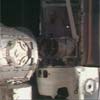
|
 |

Additional coverage for subscribers:
 VIDEO:
SHUTTLE CREW WELCOMED INTO STATION PLAY VIDEO:
SHUTTLE CREW WELCOMED INTO STATION PLAY
 VIDEO:
DISCOVERY DOCKS TO SPACE STATION PLAY VIDEO:
DISCOVERY DOCKS TO SPACE STATION PLAY
 VIDEO:
SHUTTLE PERFORMS RENDEZVOUS BACKFLIP PLAY VIDEO:
SHUTTLE PERFORMS RENDEZVOUS BACKFLIP PLAY
 VIDEO:
NARRATED ANIMATION OF PREVIEWING THE DOCKING PLAY VIDEO:
NARRATED ANIMATION OF PREVIEWING THE DOCKING PLAY
 VIDEO:
THE FLIGHT DAY 2 HIGHLIGHTS MOVIE PLAY VIDEO:
THE FLIGHT DAY 2 HIGHLIGHTS MOVIE PLAY
 VIDEO:
CREW'S CAMCORDER FOOTAGE FROM FLIGHT DAY 2 PLAY VIDEO:
CREW'S CAMCORDER FOOTAGE FROM FLIGHT DAY 2 PLAY
 MORE:
STS-124 VIDEO COVERAGE MORE:
STS-124 VIDEO COVERAGE
 NEW!:
STS-124 HIGH DEFINITION VIDEO NEW!:
STS-124 HIGH DEFINITION VIDEO
 SUBSCRIBE NOW SUBSCRIBE NOW

|
Launch pad damaged during Discovery's liftoff
Launch pad 39A at the Kennedy Space Center suffered unusual damage during the shuttle Discovery's blastoff Saturday, NASA officials said Sunday.
 FULL STORY FULL STORY
 IMAGES: MORE PHOTOS OF DAMAGE IMAGES: MORE PHOTOS OF DAMAGE
 NASA TV SCHEDULE REV. B (.pdf download) NASA TV SCHEDULE REV. B (.pdf download)
 |  |

|
 |
Phoenix sees possible ice
Scientists have discovered what may be ice underneath the Phoenix lander, exposed when soil was blown away as it landed in the northern polar plains of Mars last week.
 FULL STORY FULL STORY
 |  |

|
 |
Initial tank pictures show no major foam loss
Close-up photos of the shuttle Discovery's external tank, shot as it drifted away from the orbiter Saturday, show a few relatively minor areas of foam loss but no major damage, NASA officials said Sunday. About five pieces of debris were seen falling away during launch from a camera mounted on the tank, but Mission Management Team Chairman LeRoy Cain said Sunday it's not clear where the presumed foam might have originated.
 FULL STORY FULL STORY
 |  |

|
 |

Additional coverage for subscribers:
 VIDEO:
SUNDAY'S MISSION STATUS BRIEFING PLAY VIDEO:
SUNDAY'S MISSION STATUS BRIEFING PLAY
 VIDEO:
ANIMATION OF THE HEAT SHIELD INSPECTIONS PLAY VIDEO:
ANIMATION OF THE HEAT SHIELD INSPECTIONS PLAY
 VIDEO:
NARRATED TOUR OF DISCOVERY'S PAYLOAD BAY PLAY VIDEO:
NARRATED TOUR OF DISCOVERY'S PAYLOAD BAY PLAY
 MORE:
STS-124 VIDEO COVERAGE MORE:
STS-124 VIDEO COVERAGE
 SUBSCRIBE NOW SUBSCRIBE NOW

|
Heat shield checks on Sunday's agenda for crew
The Discovery astronauts were awakened for their first full day in space at 7:02 a.m. Sunday by a recording of "Your Wildest Dreams" by the Moody Blues beamed up from mission control. The major items on today's agenda include spacesuit checkout for upcoming station assembly spacewalks; rendezvous and docking preparations; and an inspection of the shuttle's heat shield.
 FULL STORY FULL STORY
 |  |

|
 |

Additional coverage for subscribers:
 VIDEO:
THE FLIGHT DAY 1 HIGHLIGHTS MOVIE PLAY VIDEO:
THE FLIGHT DAY 1 HIGHLIGHTS MOVIE PLAY
 VIDEO:
EXTERNAL TANK SEEN AFTER SEPARATION PLAY VIDEO:
EXTERNAL TANK SEEN AFTER SEPARATION PLAY
 VIDEO:
LAUNCH REPLAY: VAB ROOF PLAY VIDEO:
LAUNCH REPLAY: VAB ROOF PLAY
 VIDEO:
LAUNCH REPLAY: CAMERA CS-1 PLAY VIDEO:
LAUNCH REPLAY: CAMERA CS-1 PLAY
 VIDEO:
LAUNCH REPLAY: CAMERA CS-2 PLAY VIDEO:
LAUNCH REPLAY: CAMERA CS-2 PLAY
 VIDEO:
LAUNCH REPLAY: CAMERA CS-6 PLAY VIDEO:
LAUNCH REPLAY: CAMERA CS-6 PLAY
 VIDEO:
LAUNCH REPLAY: FRONT CAMERA PLAY VIDEO:
LAUNCH REPLAY: FRONT CAMERA PLAY
 VIDEO:
LAUNCH REPLAY: BEACH TRACKER PLAY VIDEO:
LAUNCH REPLAY: BEACH TRACKER PLAY
 VIDEO:
LAUNCH REPLAY: PAD PERIMETER PLAY VIDEO:
LAUNCH REPLAY: PAD PERIMETER PLAY
 VIDEO:
LAUNCH REPLAY: UCS-12 TRACKER PLAY VIDEO:
LAUNCH REPLAY: UCS-12 TRACKER PLAY
 VIDEO:
LAUNCH REPLAY: UCS-23 TRACKER PLAY VIDEO:
LAUNCH REPLAY: UCS-23 TRACKER PLAY
 VIDEO:
LAUNCH REPLAY: PLAYALINDA BEACH PLAY VIDEO:
LAUNCH REPLAY: PLAYALINDA BEACH PLAY
 VIDEO:
LAUNCH REPLAY: PATRICK AIR FORCE BASE PLAY VIDEO:
LAUNCH REPLAY: PATRICK AIR FORCE BASE PLAY
 VIDEO:
LAUNCH REPLAY: PRESS SITE PLAY VIDEO:
LAUNCH REPLAY: PRESS SITE PLAY
 VIDEO:
LAUNCH REPLAY: WEST TOWER PLAY VIDEO:
LAUNCH REPLAY: WEST TOWER PLAY
 VIDEO:
LAUNCH REPLAY: CAMERA 009 PLAY VIDEO:
LAUNCH REPLAY: CAMERA 009 PLAY
 VIDEO:
LAUNCH REPLAY: CAMERA 041 PLAY VIDEO:
LAUNCH REPLAY: CAMERA 041 PLAY
 VIDEO:
LAUNCH REPLAY: CAMERA 049 PLAY VIDEO:
LAUNCH REPLAY: CAMERA 049 PLAY
 VIDEO:
LAUNCH REPLAY: CAMERA 050 PLAY VIDEO:
LAUNCH REPLAY: CAMERA 050 PLAY
 VIDEO:
LAUNCH REPLAY: CAMERA 051 PLAY VIDEO:
LAUNCH REPLAY: CAMERA 051 PLAY
 VIDEO:
LAUNCH REPLAY: CAMERA 054 PLAY VIDEO:
LAUNCH REPLAY: CAMERA 054 PLAY
 VIDEO:
LAUNCH REPLAY: CAMERA 060 PLAY VIDEO:
LAUNCH REPLAY: CAMERA 060 PLAY
 VIDEO:
LAUNCH REPLAY: CAMERA 061 PLAY VIDEO:
LAUNCH REPLAY: CAMERA 061 PLAY
 VIDEO:
LAUNCH REPLAY: CAMERA 063 PLAY VIDEO:
LAUNCH REPLAY: CAMERA 063 PLAY
 VIDEO:
LAUNCH REPLAY: CAMERA 070 PLAY VIDEO:
LAUNCH REPLAY: CAMERA 070 PLAY
 VIDEO:
LAUNCH REPLAY: CAMERA 071 PLAY VIDEO:
LAUNCH REPLAY: CAMERA 071 PLAY
 MORE:
STS-124 VIDEO COVERAGE MORE:
STS-124 VIDEO COVERAGE
 SUBSCRIBE NOW SUBSCRIBE NOW

|
Discovery launches!
Right on time, the shuttle Discovery blasted into orbit Saturday, kicking off a two-week, three-spacewalk mission to attach Japan's huge Kibo laboratory module to the international space station and deliver a fresh flight engineer - Gregory Chamitoff - to replace outgoing station astronaut Garrett Reisman.
 FULL STORY - updated FULL STORY - updated
 NASA TV SCHEDULE REV. A (.pdf download) NASA TV SCHEDULE REV. A (.pdf download)
 |  |

|
 |

Additional coverage for subscribers:
 VIDEO:
LIFTOFF OF DISCOVERY WITH KIBO LAB! PLAY VIDEO:
LIFTOFF OF DISCOVERY WITH KIBO LAB! PLAY
 VIDEO:
ONBOARD CAMERA FOOTAGE OF TANK FOAM FALLING PLAY VIDEO:
ONBOARD CAMERA FOOTAGE OF TANK FOAM FALLING PLAY
 VIDEO:
INSIDE MISSION CONTROL DURING LAUNCH PLAY VIDEO:
INSIDE MISSION CONTROL DURING LAUNCH PLAY
 VIDEO:
POST-LAUNCH NEWS CONFERENCE PLAY VIDEO:
POST-LAUNCH NEWS CONFERENCE PLAY

 VIDEO:
FINAL PRE-LAUNCH POLLS GIVE "GO" FOR LIFTOFF PLAY VIDEO:
FINAL PRE-LAUNCH POLLS GIVE "GO" FOR LIFTOFF PLAY
 VIDEO:
ASTRONAUT GARAN CLIMBS INTO HIS SEAT PLAY VIDEO:
ASTRONAUT GARAN CLIMBS INTO HIS SEAT PLAY
 VIDEO:
ASTRONAUT HOSHIDE CLIMBS INTO HIS SEAT PLAY VIDEO:
ASTRONAUT HOSHIDE CLIMBS INTO HIS SEAT PLAY
 VIDEO:
ASTRONAUT FOSSUM CLIMBS INTO HIS SEAT PLAY VIDEO:
ASTRONAUT FOSSUM CLIMBS INTO HIS SEAT PLAY
 VIDEO:
PILOT HAM CLIMBS INTO HIS SEAT PLAY VIDEO:
PILOT HAM CLIMBS INTO HIS SEAT PLAY
 VIDEO:
ASTRONAUT CHAMITOFF CLIMBS INTO HIS SEAT PLAY VIDEO:
ASTRONAUT CHAMITOFF CLIMBS INTO HIS SEAT PLAY
 VIDEO:
COMMANDER KELLY CLIMBS INTO HIS SEAT PLAY VIDEO:
COMMANDER KELLY CLIMBS INTO HIS SEAT PLAY
 VIDEO:
ASTRONAUTS ARRIVE AT LAUNCH PAD 39A PLAY VIDEO:
ASTRONAUTS ARRIVE AT LAUNCH PAD 39A PLAY
 VIDEO:
CREW DEPARTS QUARTERS FOR LAUNCH PAD PLAY VIDEO:
CREW DEPARTS QUARTERS FOR LAUNCH PAD PLAY
 VIDEO:
ASTRONAUTS DON SPACESUITS FOR LAUNCH PLAY VIDEO:
ASTRONAUTS DON SPACESUITS FOR LAUNCH PLAY
 VIDEO:
NARRATED RECAP OF KIBO LAB'S PRE-FLIGHT CAMPAIGN PLAY VIDEO:
NARRATED RECAP OF KIBO LAB'S PRE-FLIGHT CAMPAIGN PLAY
 VIDEO:
NARRATED RECAP OF DISCOVERY'S PRE-FLIGHT CAMPAIGN PLAY VIDEO:
NARRATED RECAP OF DISCOVERY'S PRE-FLIGHT CAMPAIGN PLAY
 VIDEO:
LAUNCH PAD GANTRY RETRACTED FRIDAY NIGHT PLAY VIDEO:
LAUNCH PAD GANTRY RETRACTED FRIDAY NIGHT PLAY
 VIDEO:
TIME-LAPSE OF GANTRY ROLLBACK PLAY VIDEO:
TIME-LAPSE OF GANTRY ROLLBACK PLAY
 VIDEO:
FRIDAY'S COUNTDOWN STATUS BRIEFING PLAY VIDEO:
FRIDAY'S COUNTDOWN STATUS BRIEFING PLAY
 MORE:
STS-124 VIDEO COVERAGE MORE:
STS-124 VIDEO COVERAGE
 SUBSCRIBE NOW SUBSCRIBE NOW

|
Griffin optimistic about Soyuz, toilet resolution
NASA Administrator Mike Griffin said Saturday he's confident Russian space engineers will resolve technical problems with the Soyuz spacecraft that ferry Russian crews to and from the international space station. Griffin also said he was hopeful spare parts being launched to the station aboard the shuttle Discovery will help the crew repair the Russian toilet before it becomes a real problem.
 FULL STORY FULL STORY
 |  |

|
 |
Phoenix lander spies possible ice patch
Scientists say the camera on the Phoenix lander may have spotted a patch of ice beneath the lander. Further pictures will be taken to determine if it is ice or just rock.
 MISSION STATUS CENTER - live updates! MISSION STATUS CENTER - live updates!
 IMAGES: POSSIBLE ICE PATCH IMAGES: POSSIBLE ICE PATCH
 |  |
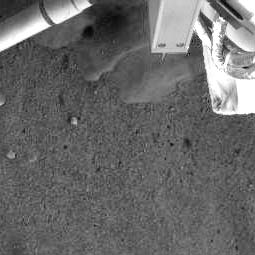
|
 |

Additional coverage for subscribers:
 VIDEO:
FRIDAY'S BRIEFING REVEALS POSSIBLE ICE PLAY VIDEO:
FRIDAY'S BRIEFING REVEALS POSSIBLE ICE PLAY
 MORE:
PHOENIX VIDEO COVERAGE MORE:
PHOENIX VIDEO COVERAGE
 SUBSCRIBE NOW SUBSCRIBE NOW

|
Phoenix lander successfully deploys robotic arm
After being folded up on Earth a year ago, the Phoenix spacecraft's robot arm finally got to move Wednesday as flight controllers began the process of unstowing the scoop-laden appendage that will dig up samples of the frozen martian terrain for study.
 MISSION STATUS CENTER - live updates! MISSION STATUS CENTER - live updates!
 IMAGES: AREA WHERE ARM WILL DIG IMAGES: AREA WHERE ARM WILL DIG
 IMAGES: ROCKS GIVEN FAIRY TALE NAMES IMAGES: ROCKS GIVEN FAIRY TALE NAMES
 |  |

|
 |

Additional coverage for subscribers:
 VIDEO:
THURSDAY'S ROBOT ARM AND PICTURE BRIEFING PLAY VIDEO:
THURSDAY'S ROBOT ARM AND PICTURE BRIEFING PLAY
 MORE:
PHOENIX VIDEO COVERAGE MORE:
PHOENIX VIDEO COVERAGE
 SUBSCRIBE NOW SUBSCRIBE NOW

|
Strange ring circle dead star
NASA's Spitzer Space Telescope has found a bizarre ring of material around the magnetic remains of a star that blasted to smithereens. The stellar corpse belongs to a class of objects known as magnetars.
 FULL STORY FULL STORY
 |  |
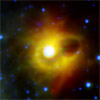
|
 |
OTHER HEADLINES Additional stories today
|
 |
New measurements reveal slimmer Milky Way -- A more accurate measuring scale has refined the weight of the Milky Way by a factor of one trillion, a discovery that has broad implications for our understanding of the Milky Way.

Solar eruption seen in unprecedented detail -- A fleet of solar-orbiting spacecraft observed the April 9 solar eruption in unprecedented detail, confirming previously unseen features that are predicted by computer models.

Dust torus detected around supergiant star -- Astronomers have taken the first close-up image of an individual dying supergiant star in our neighboring galaxy, the Large Magellanic Cloud.
|
 |
Station toilet parts delivered for shuttle launch
A replacement pump and other equipment needed to repair the Russian toilet aboard the international space station was installed in the shuttle Discovery early Thursday as engineers readied the ship for blastoff Saturday on a long-awaited flight to deliver Japan's huge Kibo laboratory module to the orbiting outpost.
 FULL STORY FULL STORY
 MISSION STATUS CENTER MISSION STATUS CENTER
 NASA TV SCHEDULE (.pdf download) NASA TV SCHEDULE (.pdf download)
 |  |
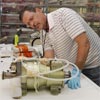
|
 |

Additional coverage for subscribers:
 VIDEO:
PRE-LAUNCH NEWS CONFERENCE PLAY VIDEO:
PRE-LAUNCH NEWS CONFERENCE PLAY
 VIDEO:
BRIEFING ON KIBO LABORATORY FACILITY PLAY VIDEO:
BRIEFING ON KIBO LABORATORY FACILITY PLAY
 MORE:
STS-124 VIDEO COVERAGE MORE:
STS-124 VIDEO COVERAGE
 SUBSCRIBE NOW SUBSCRIBE NOW

|
India's moon probe being fitted with instrument suite
Scientists from more than a half-dozen countries are nearly finished shipping parts for six international instruments destined to fly to the moon aboard India's Chandrayaan 1 lunar orbiter later this summer.
 FULL STORY FULL STORY
 |  |

|
 |
Mars Odyssey now prime communicator with lander
Freeing its robotic arm from launch restraints was Wednesday's main task for the Phoenix lander, a day after communications snags prevented commands from reaching the spacecraft. Officials decided that Mars Odyssey will handle the information relay duties while engineers sort out the radio trouble on Mars Reconnaissance Orbiter.
 MISSION STATUS CENTER - live updates! MISSION STATUS CENTER - live updates!
 IMAGES: PANORAMA SHOWS RAISED ROBOT ARM IMAGES: PANORAMA SHOWS RAISED ROBOT ARM
 IMAGES: ANOTHER PANORAMA OF LANDER IMAGES: ANOTHER PANORAMA OF LANDER
 IMAGES: OVERHEAD PERSPECTIVE IMAGES: OVERHEAD PERSPECTIVE
 IMAGES: NEW COLOR VIEW LOOKING NORTHWEST IMAGES: NEW COLOR VIEW LOOKING NORTHWEST
 |  |
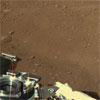
|
 |

Additional coverage for subscribers:
 VIDEO:
WEDNESDAY'S PICTURE AND UPDATE BRIEFING PLAY VIDEO:
WEDNESDAY'S PICTURE AND UPDATE BRIEFING PLAY
 MORE:
PHOENIX VIDEO COVERAGE MORE:
PHOENIX VIDEO COVERAGE
 SUBSCRIBE NOW SUBSCRIBE NOW

|
Countdown begins for Saturday's shuttle launch
The shuttle Discovery's international crew flew to the Kennedy Space Center Wednesday for the start of their countdown to blastoff Saturday on a mission to attach Japan's huge Kibo lab module to the international space station.
 FULL STORY FULL STORY
 |  |

|
 |

Additional coverage for subscribers:
 VIDEO:
ASTRONAUTS ARRIVE AT THE CAPE FOR LAUNCH PLAY VIDEO:
ASTRONAUTS ARRIVE AT THE CAPE FOR LAUNCH PLAY
 VIDEO:
WEDNESDAY'S COUNTDOWN AND WEATHER BRIEFING PLAY VIDEO:
WEDNESDAY'S COUNTDOWN AND WEATHER BRIEFING PLAY
 VIDEO:
NARRATED MISSION PREVIEW MOVIE PLAY VIDEO:
NARRATED MISSION PREVIEW MOVIE PLAY
 MORE:
STS-124 VIDEO COVERAGE MORE:
STS-124 VIDEO COVERAGE
 SUBSCRIBE NOW SUBSCRIBE NOW

|
Data link between Phoenix and MRO restored
A UHF radio aboard NASA's Mars Reconnaissance Orbiter suffered a transient glitch Tuesday, preventing engineers from relaying the day's flight plan to the Phoenix lander. Late in the day, the radio was back in operation and a fresh set of images was relayed back to Earth.
 FULL STORY FULL STORY
 |  |

|
 |
Communication glitch on orbiter stalls Phoenix work
A communications problem with the Mars Reconnaissance Orbiter delayed Tuesday's planned activities aboard the Phoenix lander, which had included the first steps to unstow the craft's robotic arm. But MRO has snapped another image of Phoenix from orbit.
 MISSION STATUS CENTER - live updates! MISSION STATUS CENTER - live updates!
 IMAGES: MRO'S IMAGE OF PHOENIX IMAGES: MRO'S IMAGE OF PHOENIX
 IMAGES: LANDER AND DESCENT HARDWARE IMAGES: LANDER AND DESCENT HARDWARE
 IMAGES: NEW VIEW OF PHOENIX ON PARACHUTE IMAGES: NEW VIEW OF PHOENIX ON PARACHUTE
 |  |

|
 |

Additional coverage for subscribers:
 VIDEO:
TUESDAY'S PICTURE AND UPDATE BRIEFING PRESENTATION | Q&A VIDEO:
TUESDAY'S PICTURE AND UPDATE BRIEFING PRESENTATION | Q&A
 MORE:
PHOENIX VIDEO COVERAGE MORE:
PHOENIX VIDEO COVERAGE
 SUBSCRIBE NOW SUBSCRIBE NOW

|
Phoenix sends back new images from Mars
Completing its first full day on the martian surface, NASA's Phoenix spacecraft returned more images taken around the landing site. Check the status center for updates and the latest images:
 MISSION STATUS CENTER - live updates! MISSION STATUS CENTER - live updates!
 IMAGES: BEST VIEW SO FAR IMAGES: BEST VIEW SO FAR
 IMAGES: PART OF LANDING SYSTEM? IMAGES: PART OF LANDING SYSTEM?
 IMAGES: BRIGHT OBJECT ON SURFACE IMAGES: BRIGHT OBJECT ON SURFACE
 IMAGES: FIRST 3-D IMAGE FROM PHOENIX IMAGES: FIRST 3-D IMAGE FROM PHOENIX
 STORE: PHOENIX MISSION PATCH STORE: PHOENIX MISSION PATCH
 |  |

|
 |
Satellite orbiting Mars imaged descending Phoenix
Still basking in the elation of a successful Mars landing, engineers with the Phoenix program unveiled a dramatic photo Monday showing the spacecraft descending to the martian surface under its parachute Sunday. The black-and-white photo, shot by NASA's Mars Reconnaissance Orbiter spacecraft as it sailed overhead, shows the inflated parachute and the backshell supporting Phoenix dangling below.
 FULL STORY FULL STORY
 ORBITER IMAGES: PHOENIX DESCENDING ORBITER IMAGES: PHOENIX DESCENDING
 ORBITER IMAGES: BRIGHTER VIEW OF DESCENT ORBITER IMAGES: BRIGHTER VIEW OF DESCENT
 LANDER IMAGES: MARTIAN ARCTIC PLAINS LANDER IMAGES: MARTIAN ARCTIC PLAINS
 LANDER IMAGES: FOOTPAD IN SOIL LANDER IMAGES: FOOTPAD IN SOIL
 |  |

|
 |

Additional coverage for subscribers:
 VIDEO:
MONDAY AFTERNOON'S UPDATE PRESENTATION | Q&A VIDEO:
MONDAY AFTERNOON'S UPDATE PRESENTATION | Q&A
 VIDEO:
HOW MARS ORBITER GOT THE PARACHUTE PHOTO PLAY VIDEO:
HOW MARS ORBITER GOT THE PARACHUTE PHOTO PLAY
 MORE:
PHOENIX VIDEO COVERAGE MORE:
PHOENIX VIDEO COVERAGE
 SUBSCRIBE NOW SUBSCRIBE NOW

|
Weather satellite launched to support the Olympics
China launched a polar-orbiting weather satellite early Tuesday, giving forecasters another tool to make detailed weather predictions for the Beijing Olympics later this year, state media reported.
 FULL STORY FULL STORY
 |  |

|
 |
NASA managers thrilled with successful landing
The Phoenix lander that touched down on Mars Sunday appears healthy and should be ready to begin digging for ice within a week or so, NASA officials said early Monday, after engineers complete initial checkout and collect more photos to help characterize the landing site.
 FULL STORY FULL STORY
 |  |
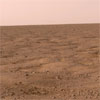
|
 |
First images beamed back to Earth from lander
About two hours after touching down, NASA's Phoenix lander returned the first images of the martian surface near the north pole and engineering views of itself.
 COLOR IMAGES: THE ARCTIC PLAINS COLOR IMAGES: THE ARCTIC PLAINS
 COLOR IMAGES: CLOSEUP OF SURFACE COLOR IMAGES: CLOSEUP OF SURFACE
 FIRST IMAGES: THE SURFACE FIRST IMAGES: THE SURFACE
 FIRST IMAGES: THE LANDSCAPE FIRST IMAGES: THE LANDSCAPE
 FIRST IMAGES: MORE OF THE AREA FIRST IMAGES: MORE OF THE AREA
 FIRST IMAGES: BLIP ON THE HORIZON FIRST IMAGES: BLIP ON THE HORIZON
 FIRST IMAGES: MORE OF THE GROUND FIRST IMAGES: MORE OF THE GROUND
 FIRST IMAGES: ONE OF LANDER'S LEGS FIRST IMAGES: ONE OF LANDER'S LEGS
 FIRST IMAGES: DEPLOYED SOLAR ARRAY FIRST IMAGES: DEPLOYED SOLAR ARRAY
 FIRST IMAGES: ANOTHER LANDSCAPE SCENE FIRST IMAGES: ANOTHER LANDSCAPE SCENE
 FIRST IMAGES: ANOTHER VIEW TO HORIZON FIRST IMAGES: ANOTHER VIEW TO HORIZON
 |  |
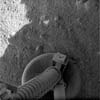
|
 |
NASA's Phoenix lands on arctic plains of Mars
NASA's Phoenix lander plunged into the martian atmosphere Sunday at 12,700 mph and then used atmospheric friction, a large parachute and finally, 12 individually controlled rocket engines to complete an automated landing near the red planet's northern polar cap.
 FULL STORY - updated FULL STORY - updated
 SUNDAY AFTERNOON STORY SUNDAY AFTERNOON STORY
 LANDING PREVIEW STORY LANDING PREVIEW STORY
 LANDING TIMELINE LANDING TIMELINE
 |  |
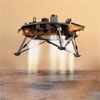
|
 |

Additional coverage for subscribers:
 VIDEO:
PHOENIX LANDS ON MARS! PLAY VIDEO:
PHOENIX LANDS ON MARS! PLAY
 VIDEO:
MIDNIGHT POST-LANDING BRIEFING PRESENTATION | Q&A VIDEO:
MIDNIGHT POST-LANDING BRIEFING PRESENTATION | Q&A
 VIDEO:
POST-LANDING INTERVIEW WITH MARS PROGRAM DIR. PLAY VIDEO:
POST-LANDING INTERVIEW WITH MARS PROGRAM DIR. PLAY
 VIDEO:
POST-LANDING INTERVIEW WITH PRINCIPAL INVESTIGATOR PLAY VIDEO:
POST-LANDING INTERVIEW WITH PRINCIPAL INVESTIGATOR PLAY
 VIDEO:
POST-LANDING INTERVIEW WITH PROJECT MANAGER PLAY VIDEO:
POST-LANDING INTERVIEW WITH PROJECT MANAGER PLAY

 VIDEO:
SUNDAY'S PRE-LANDING STATUS PRESENTATION | Q&A VIDEO:
SUNDAY'S PRE-LANDING STATUS PRESENTATION | Q&A
 VIDEO:
SATURDAY STATUS BRIEFING PRESENTATION | Q&A VIDEO:
SATURDAY STATUS BRIEFING PRESENTATION | Q&A
 VIDEO:
ENTRY, DESCENT AND LANDING EXPLAINED PLAY VIDEO:
ENTRY, DESCENT AND LANDING EXPLAINED PLAY
 VIDEO:
THURSDAY STATUS BRIEFING PRESENTATION | Q&A VIDEO:
THURSDAY STATUS BRIEFING PRESENTATION | Q&A
 VIDEO:
ANIMATION OF PHOENIX MISSION WITH NARRATION PLAY VIDEO:
ANIMATION OF PHOENIX MISSION WITH NARRATION PLAY
 VIDEO:
HIGHLIGHTS FROM MARS ROVER SPIRIT'S LANDING PLAY VIDEO:
HIGHLIGHTS FROM MARS ROVER SPIRIT'S LANDING PLAY
 VIDEO:
HIGHLIGHTS FROM MARS ROVER OPPORTUNITY'S LANDING PLAY VIDEO:
HIGHLIGHTS FROM MARS ROVER OPPORTUNITY'S LANDING PLAY
 MORE:
PHOENIX VIDEO COVERAGE MORE:
PHOENIX VIDEO COVERAGE
 SUBSCRIBE NOW SUBSCRIBE NOW

|
Phoenix spacecraft healthy, on track for Mars landing
NASA's Phoenix lander closed in on Mars Saturday, healthy and on course for touchdown Sunday evening near the red planet's northern polar cap. Engineers at the Jet Propulsion Laboratory in Pasadena, Calif., decided to forego a course-correction rocket firing late Saturday but left open the option for a final trajectory tweak Sunday eight hours before atmospheric entry.
 FULL STORY FULL STORY
 MISSION SCIENCE GOALS MISSION SCIENCE GOALS
 PHOENIX LAUNCH ARCHIVE PHOENIX LAUNCH ARCHIVE
 MARS ROVER ARCHIVE MARS ROVER ARCHIVE
 |  |
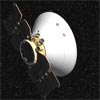
|
 |
Russia launches relay craft, commemorative satellite
Russia launched a Rockot booster from the country's northern spaceport Friday, according to news reports. The vehicle was carrying three Gonets communications satellites and a small spacecraft to commemorate the 50th anniversary of Sputnik.
 FULL STORY FULL STORY
 |  |

|
 |
Yellowstone-like hot spring deposits found on Mars
Deposits of nearly pure silica discovered by the Mars Exploration Rover Spirit in Gusev Crater formed when volcanic steam or hot water (or maybe both) percolated through the ground. Such deposits are found around hydrothermal vents like those in Yellowstone National Park.
 FULL STORY FULL STORY
 |  |
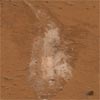
|
 |
Scientists witness a
once-in-a-lifetime event
When she peered into the screen of her computer one day in January, Alicia Soderberg was supposed to see a small, dull glowing smudge in one corner, the evidence of a month-old supernova that would help her better understand the mystery of these huge exploding stars.
 FULL STORY FULL STORY
 |  |
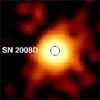
|
 |
Mighty winds blow in Jupiter's Little Red Spot
Using data from NASA's New Horizons spacecraft and two telescopes at Earth, an international team of scientists has found that one of the solar system's largest and newest storms - Jupiter's Little Red Spot - has some of the highest wind speeds ever detected on any planet.
 FULL STORY FULL STORY
 |  |

|
 |
Powerhouse spacecraft launched for North America
A Zenit rocket blasted off and disappeared into a moonlit sky early today, launching a successful one-hour mission to deploy a 10,200-pound cable television broadcasting satellite to cover North America.
 FULL STORY FULL STORY
 |  |
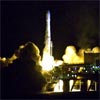
|
 |
Hubble Space Telescope finds missing matter
Although the universe contains billions of galaxies, only a small amount of its matter is
locked up in these behemoths. Most of the universe's matter that was created during and just after the Big Bang must be found elsewhere.
 FULL STORY FULL STORY
 |  |

|
 |
A pipsqueak star unleashes monster flare
NASA's Swift satellite recently picked up the brightest flare ever seen from a normal star other than our Sun. The flare, an explosive release of energy from a star, packed the power of thousands of solar flares. It would have been visible to the naked eye if the star had been easily observable in the night sky at the time.
 FULL STORY FULL STORY
 |  |

|
 |
OTHER HEADLINES Additional stories today
|
 |
Newly upgraded telescope searches for orphan stars -- Using new instrumentation, Case Western Reserve University astronomers can now view the night sky wider and deeper than before.
|
 |
Discovery passes final review for May 31 launch
NASA managers Monday cleared the shuttle Discovery for launch May 31 on a three-spacewalk mission to deliver and attach Japan's huge Kibo laboratory module to the international space station. The decision to proceed came after a lengthy discussion on the health of the station's Soyuz lifeboat after back-to-back re-entry problems that led to rough, off-course landings.
 FULL STORY FULL STORY
 STS-124 MISSION INDEX STS-124 MISSION INDEX
 STORE: OFFICIAL MISSION PATCH STORE: OFFICIAL MISSION PATCH
 |  |
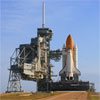
|
 |

Additional coverage for subscribers:
 VIDEO:
NEWS BRIEFING FOLLOWING FLIGHT READINESS REVIEW PLAY VIDEO:
NEWS BRIEFING FOLLOWING FLIGHT READINESS REVIEW PLAY

 VIDEO:
INTERVIEW WITH COMMANDER MARK KELLY PLAY VIDEO:
INTERVIEW WITH COMMANDER MARK KELLY PLAY
 VIDEO:
INTERVIEW WITH PILOT KEN HAM PLAY VIDEO:
INTERVIEW WITH PILOT KEN HAM PLAY
 VIDEO:
INTERVIEW WITH MS1 KAREN NYBERG PLAY VIDEO:
INTERVIEW WITH MS1 KAREN NYBERG PLAY
 VIDEO:
INTERVIEW WITH MS2 RON GARAN PLAY VIDEO:
INTERVIEW WITH MS2 RON GARAN PLAY
 VIDEO:
INTERVIEW WITH MS3 MIKE FOSSUM PLAY VIDEO:
INTERVIEW WITH MS3 MIKE FOSSUM PLAY
 VIDEO:
INTERVIEW WITH MS4 AKIHIKO HOSHIDE PLAY VIDEO:
INTERVIEW WITH MS4 AKIHIKO HOSHIDE PLAY
 MORE:
STS-124 VIDEO COVERAGE MORE:
STS-124 VIDEO COVERAGE
 SUBSCRIBE NOW SUBSCRIBE NOW

|
Key molecule discovered in Venusian atmosphere
Venus Express has made the first detection of the molecule hydroxyl in the upper atmosphere of Venus, giving scientists a vital tool to unlock the mechanics of our sister planet's dense atmosphere.
 FULL STORY FULL STORY
 |  |
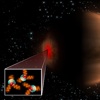
|
 |
Rare quartet of stars aids stellar evolution models
Astronomers have discovered an extremely rare quartet of stars, disguised as a single speck of light even through some of the world's most powerful telescopes, orbiting each other within a region smaller than Jupiter's orbit round the Sun.
 FULL STORY FULL STORY
 |  |

|
 |
First Ares test launch likely delayed by pad conflict
Delays in the space shuttle program could force a one-month slip of an early test flight of NASA's next-generation rocket next year due to busy Kennedy Space Center launch facilities, agency officials said.
 FULL STORY FULL STORY
 |  |

|
 |
Space station receives Russian resupply ship
A cargo and fuel freighter running on autopilot control successfully docked to the space station Friday afternoon, completing a two-day flight up to the orbiting complex.
 FULL STORY FULL STORY
 |  |
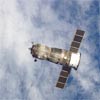
|
 |
NASA satellite finds interior of Mars is colder
New observations from NASA's Mars Reconnaissance Orbiter indicate that the crust and upper mantle of Mars are stiffer and colder than previously thought.
 FULL STORY FULL STORY
 |  |
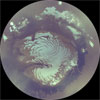
|
 |
OTHER HEADLINES Additional stories today
|
 |
Building 'super roadmaps' of planets and moons -- 3D "super roadmaps" of other planets and moons could provide robots, astronauts and engineers details about atmospheric composition, biohazards, wind speed and temperature. Information like this could help land future spacecraft and more effectively navigate roving cameras across a Martian or lunar terrain.

Astronomers find that universe shines twice as bright -- Astronomers from UK Universities working with colleagues from Germany and Australia have calculated that the universe is actually twice as bright as previously thought, reporting that dust is obscuring approximately half of the light that the universe is currently generating.
|
 |
Discovery of most recent supernova in our galaxy
The most recent supernova in our galaxy has been discovered by tracking the rapid expansion of its remains. This result, using NASA's Chandra X-ray Observatory and the National Radio Astronomy Observatory's Very Large Array, will help improve our understanding of how often supernovae explode in the Milky Way galaxy.
 FULL STORY FULL STORY
 |  |
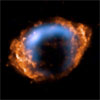
|
 |
Cargo ship begins flight to the space station
A Russian freighter packed with fresh supplies for the international space station successfully rocketed away from Earth on Wednesday and immediately began plotting a two-day trek to the orbiting outpost.
 FULL STORY FULL STORY
 |  |
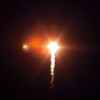
|
 |
OTHER HEADLINES Additional stories today
|
 |
NASA study links Earth impacts to human-caused climate change -- A new NASA-led study shows human-caused climate change has made an impact on a wide range of Earth's natural systems, including permafrost thawing, plants blooming earlier across Europe, and lakes declining in productivity in Africa.

Scientists test lunar breathing system -- Imagine yourself hip-to-hip, shoulder-to-shoulder, inside a room the size of a walk-in closet for eight hours with five people you just met. Does that make you sweat? Or maybe make your breathing a little more animated?
|
 |
Taking the temperature of the cosmic background
Using the European Southern Observatory's Very Large Telescope, astronomers have made the first detection of a carbon monoxide molecule in a galaxy almost 11 billion light years away, a feat that has resulted in the most precise measurement of the cosmic temperature at such a remote epoch.
 FULL STORY FULL STORY
 |  |

|
 |
Intense testing paved Phoenix road to Mars
When NASA's Phoenix Mars Lander descends to the surface of the Red Planet on May 25, few will be watching as closely as the men and women who have spent years planning, analyzing and conducting tests to prepare for the dramatic and nerve-wracking event known as EDL -- Entry, Descent and Landing. Less than 50 percent of all previous lander missions have made it safely to the surface.
 FULL STORY FULL STORY
 |  |

|
 |

Additional coverage for subscribers:
 VIDEO:
PRE-LANDING PREVIEW BRIEFING PART 1 | PART 2 VIDEO:
PRE-LANDING PREVIEW BRIEFING PART 1 | PART 2
 MORE:
MARS LANDER PHOENIX VIDEO COVERAGE MORE:
MARS LANDER PHOENIX VIDEO COVERAGE
 SUBSCRIBE NOW SUBSCRIBE NOW

|
Part of missing matter in the universe discovered
Europe's orbiting X-ray observatory XMM-Newton has been used by a team of international astronomers to uncover part of the missing matter in the universe.
 FULL STORY FULL STORY
 |  |
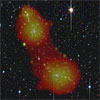
|
 |
OTHER HEADLINES Additional stories today
|
 |
New water reclamation system headed for duty on station -- International Space Station crews soon will have a new water reclamation system that will recycle wastewater, allowing up to six crew members to live aboard the orbiting laboratory.
|
 |
Hubble sees the Antennae Galaxies moving closer
New research on the Antennae Galaxies using the Advanced Camera for Surveys onboard the Hubble Space Telescope shows that this benchmark pair of interacting galaxies is in fact much closer than previously thought - 45 million light-years instead of 65 million light-years.
 FULL STORY FULL STORY
 |  |

|
 |
OTHER HEADLINES Additional stories today
|
 |
Send your name to the moon with new lunar mission -- NASA invites people of all ages to join the lunar exploration journey with an opportunity to send their names to the moon aboard the Lunar Reconnaissance Orbiter.

Kepler planet mission to send names into space -- How cool would it be to have your name on board the spacecraft that discovers the first known Earth-like planet beyond our solar system? Well, here's your chance.

NASA awards contract for Ares mobile launcher -- NASA's Kennedy Space Center has awarded a contract to Hensel Phelps for the construction of the Ares I mobile launcher for the Constellation Program.

Test for commercial space habitat reaches milestone -- Genesis I, the first test module launched by commercial space habitat developer Bigelow Aerospace, has completed its 10,000th orbit around the Earth. The unmanned module is about to start its third year in space since it ushered in a new era of private space development following its July 12, 2006 launch.
|
 |
Astronauts board Discovery for countdown rehearsal
The crew of the shuttle Discovery strapped in Friday for a dress-rehearsal countdown that sets the stage for launch May 31 on a long-awaited flight to deliver Japan's huge Kibo laboratory module to the space station.
 FULL STORY FULL STORY
 |  |
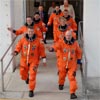
|
 |

Additional coverage for subscribers:
 VIDEO:
ASTRONAUTS PRACTICE EVACUATION OF SHUTTLE PLAY VIDEO:
ASTRONAUTS PRACTICE EVACUATION OF SHUTTLE PLAY
 VIDEO:
CREW BOARDS DISCOVERY FOR PRACTICE COUNTDOWN PLAY VIDEO:
CREW BOARDS DISCOVERY FOR PRACTICE COUNTDOWN PLAY
 VIDEO:
TRAINING SESSIONS AT LAUNCH PAD AND BUNKER PLAY VIDEO:
TRAINING SESSIONS AT LAUNCH PAD AND BUNKER PLAY
 VIDEO:
CREW NEWS CONFERENCE AT LAUNCH PAD 39A PLAY VIDEO:
CREW NEWS CONFERENCE AT LAUNCH PAD 39A PLAY
 MORE:
STS-124 VIDEO COVERAGE MORE:
STS-124 VIDEO COVERAGE
 SUBSCRIBE NOW SUBSCRIBE NOW

|
NASA calls on APL to send a probe to the sun
The Johns Hopkins University Applied Physics Laboratory is sending a spacecraft closer to the sun than any probe has ever gone - and what it finds could revolutionize what we know about our star and the solar wind that influences everything in our solar system.
 FULL STORY FULL STORY
 |  |

|
 |
Iron 'snow' helps maintain Mercury's magnetic field
New scientific evidence suggests that deep inside the planet Mercury, iron "snow" forms and falls toward the center of the planet, much like snowflakes form in Earth's atmosphere and fall to the ground.
 FULL STORY FULL STORY
 |  |
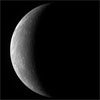
|
 |
Saturn does the wave in upper atmosphere
Two decades of scrutinizing Saturn are finally paying off, as scientists have discovered a wave pattern, or oscillation, in Saturn's atmosphere only visible from Earth every 15 years.
 FULL STORY FULL STORY
 |  |
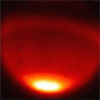
|
 |
Discovery crew at the Cape for practice countdown
Shuttle Discovery's astronauts flew into Kennedy Space Center on Tuesday afternoon for this week's countdown dress rehearsal and emergency training drills at launch pad 39A.
 FULL STORY FULL STORY
 |  |
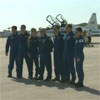
|
 |

Additional coverage for subscribers:
 VIDEO:
ASTRONAUTS ARRIVE FOR PRACTICE COUNTDOWN PLAY VIDEO:
ASTRONAUTS ARRIVE FOR PRACTICE COUNTDOWN PLAY
 MORE:
STS-124 VIDEO COVERAGE MORE:
STS-124 VIDEO COVERAGE
 SUBSCRIBE NOW SUBSCRIBE NOW

|
Old globular clusters surprisingly young
New results from NASA's Chandra X-ray observatory suggest that globular clusters, the dense bunches of stars found in all galaxies, may be less evolved than previously thought.
 FULL STORY FULL STORY
 |  |

|
 |
Astronomers discover a new breed of star
Using the Otto Struve Telescope at McDonald Observatory, astronomers at the University of Texas have predicted and confirmed the existence of a new type of variable star: a pulsating carbon white dwarf.
 FULL STORY FULL STORY
 |  |

|
 |
Stellar time bomb makes scheduled explosion
An international team of astronomers using observations from NASA's Rossi X-ray Timing Explorer has discovered a timing mechanism that allows them to predict exactly when a neutron star will unleash its wrath.
 FULL STORY FULL STORY
 |  |

|
 |

Check out some panoramas created Saturday morning after Discovery arrived atop Kennedy Space Center's pad 39A.
 PANORAMA GALLERY PANORAMA GALLERY
 |
 |
Space shuttle Discovery rolls out to the launch pad
With four weeks until its planned launch to haul the Japanese science laboratory module up to the space station, shuttle Discovery traveled overnight from the Vehicle Assembly Building to pad 39A.
 FULL STORY FULL STORY
 IMAGES: DISCOVERY ON THE PAD IMAGES: DISCOVERY ON THE PAD
 |  |

|
 |

Additional coverage for subscribers:
 VIDEO:
TIME-LAPSE OF GANTRY ENCLOSING DISCOVERY PLAY VIDEO:
TIME-LAPSE OF GANTRY ENCLOSING DISCOVERY PLAY
 VIDEO:
PAD'S ORBITER ACCESS ARM SWUNG INTO POSITION PLAY VIDEO:
PAD'S ORBITER ACCESS ARM SWUNG INTO POSITION PLAY
 VIDEO:
TIME-LAPSE OF CRAWLER RETREATING AFTER ROLLOUT PLAY VIDEO:
TIME-LAPSE OF CRAWLER RETREATING AFTER ROLLOUT PLAY
 VIDEO:
SHUTTLE DISCOVERY ROLLED TO PAD 39A PLAY VIDEO:
SHUTTLE DISCOVERY ROLLED TO PAD 39A PLAY

 VIDEO:
SHUTTLE AND STATION PROGRAM BRIEFING PLAY VIDEO:
SHUTTLE AND STATION PROGRAM BRIEFING PLAY
 VIDEO:
STS-124 MISSION OVERVIEW PART 1 | PART 2 VIDEO:
STS-124 MISSION OVERVIEW PART 1 | PART 2
 VIDEO:
PREVIEW BRIEFING ON MISSION'S SPACEWALKS PLAY VIDEO:
PREVIEW BRIEFING ON MISSION'S SPACEWALKS PLAY
 VIDEO:
THE ASTRONAUTS' PRE-FLIGHT NEWS BRIEFING PLAY VIDEO:
THE ASTRONAUTS' PRE-FLIGHT NEWS BRIEFING PLAY
 SUBSCRIBE NOW SUBSCRIBE NOW

|
Astronaut Hall of Fame:
Class of 2008
Four former space shuttle commanders -- John Blaha, Bob Cabana, Bryan O'Connor and Loren Shriver -- were inducted into the Astronaut Hall of Fame on Saturday. It was the seventh group of shuttle crewmembers named to the hall, which has enshrined 70 astronauts.
 |  |

|
 |

Additional coverage for subscribers:
 VIDEO:
ASTRONAUT HALL OF FAME INDUCTION PART 1 | PART 2 VIDEO:
ASTRONAUT HALL OF FAME INDUCTION PART 1 | PART 2
 SUBSCRIBE NOW SUBSCRIBE NOW

|
Whitson describes rough Soyuz entry and landing
Plunging back into the atmosphere April 19 after a six-month stay aboard the international space station, Expedition 16 commander Peggy Whitson and Soyuz commander Yuri Malenchenko realized something was very wrong. One of the two modules attached to the crew cabin had failed to separate prior to entry and the spacecraft, moving at some 5 miles per second, slammed into the discernible atmosphere in the wrong orientation.
 FULL STORY FULL STORY
 |  |
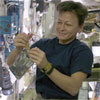
|
 |
Shuttle boss discusses delay to downstream flights
The shuttle Discovery is on track for launch May 31 on a high-priority flight to deliver Japan's huge Kibo lab module to the international space station. But subsequent flights are slipping four to five weeks each because of external tank production issues, and a flight that had been targeted for late this year will slip into early 2009, a senior NASA manager said Thursday.
 FULL STORY FULL STORY
 |  |

|
 |

Additional coverage for subscribers:
 VIDEO:
KIBO LABORATORY TRAVELS TO THE LAUNCH PAD PLAY VIDEO:
KIBO LABORATORY TRAVELS TO THE LAUNCH PAD PLAY
 VIDEO:
TRANSPORT CANISTER WITH KIBO ROTATED UPRIGHT PLAY VIDEO:
TRANSPORT CANISTER WITH KIBO ROTATED UPRIGHT PLAY
 VIDEO:
CRANE PLACES KIBO MODULE INTO TRANSPORT CANISTER PLAY VIDEO:
CRANE PLACES KIBO MODULE INTO TRANSPORT CANISTER PLAY
 SUBSCRIBE NOW SUBSCRIBE NOW

|
Europe's cargo ship could stay at station a little longer
A team of earthbound engineers and space fliers is methodically completing a checklist of cargo transfers and tests on the Jules Verne space station resupply ship, while European officials await word on whether the craft's stay at the complex could be extended by a month or more.
 FULL STORY FULL STORY
 |  |
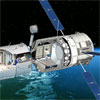
|
 |
Black hole thrown out of its parent galaxy
By an enormous burst of gravitational waves that accompanies the merger of two black holes, a newly formed black hole has been booted out of its parent galaxy at thousands of kilometers per second, confirming theories that extreme ejection events like this can occur and aren't only plausible in supercomputer simulations.
 FULL STORY FULL STORY
 |  |
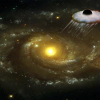
|
 |
NASA spacecraft tracks raging Saturn storm
As a powerful electrical storm rages on Saturn with lightning bolts 10,000 times more powerful than those found on Earth, the Cassini spacecraft continues its five-month watch over the dramatic events.
 FULL STORY FULL STORY
 |  |
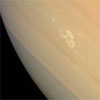
|
 |
Compact galaxies in early universe pack a big punch
Imagine receiving an announcement touting the birth of a baby 20 inches long and weighing 180 pounds. Astronomers looking at galaxies in the universe's distant past received a similar perplexing announcement when they found nine young, compact galaxies, each weighing in at 200 billion times the mass of the Sun.
 FULL STORY FULL STORY
 |  |

|
 |
OTHER HEADLINES Additional stories today
|
 |
Galaxy Evolution Explorer celebrates 5 years in space -- Since its launch five years ago, the Galaxy Evolution Explorer has photographed hundreds of millions of galaxies in ultraviolet light. M106 is one of those galaxies, and from 22 light years away, it strikes a pose in blue and gold for this new commemorative portrait.

World's largest commercial satellite achieves key milestone -- The ICO G1 satellite's large 12-meter antenna reflector was successfully deployed over the weekend. The reflector size enables the increased performance typically required for mobile interactive media services.

GIOVE-B spacecraft in good health following launch -- Europe's GIOVE-B satellite will shortly start its commissioning phase. An initial underperformance of the spacecraft's reaction wheels was traced to a mismatch in software.
|
 |
Old Titan launch pad gantry at Cape knocked down
The landscape of Cape Canaveral is changing, a fact illustrated Sunday when a Titan-era gantry was blasted to the ground to clear the historic Air Force launch pad for new commercial rockets.
 FULL STORY FULL STORY
 IMAGES: COMPLEX 40 TOWER TOPPLING IMAGES: COMPLEX 40 TOWER TOPPLING
 ARCHIVE: TITAN COVERAGE ARCHIVE: TITAN COVERAGE
 |  |
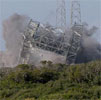
|
 |

Additional coverage for subscribers:
 VIDEO:
CLOSEUP VIEWS OF THE TOWER DEMOLITION PLAY VIDEO:
CLOSEUP VIEWS OF THE TOWER DEMOLITION PLAY
 VIDEO:
COMPLEX 40 TOWER COMES TUMBLING DOWN PLAY VIDEO:
COMPLEX 40 TOWER COMES TUMBLING DOWN PLAY
 SUBSCRIBE NOW SUBSCRIBE NOW

|
Commercial Land Launch mission lofts Israeli satellite
A Zenit rocket inaugurated a Sea Launch spinoff program to offer land-based launch services to medium-class satellite payloads Monday morning, successfully streaking into space through a cloudless blue sky above the plains of Kazakhstan.
 FULL STORY FULL STORY
 |  |
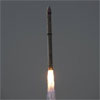
|
 |
Indian PSLV booster hauls a load of satellites into orbit
An Indian rocket took a 14-minute trip into orbit early Monday, releasing nine satellites from six countries on missions to observe Earth, demonstrate low-cost space technologies and educate students around the world.
 FULL STORY FULL STORY
 |  |
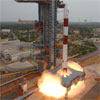
|
 |
Test craft for Europe's navigation system blasts off
Europe's Galileo space-based navigation system took another step toward fruition with the launch of a second prototype satellite Saturday night, less than a week after the European Parliament approved plans to finance the network with public funds.
 FULL STORY - updated FULL STORY - updated
 |  |
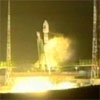
|
 |
Shuttle moves to assembly building for May 31 launch
Shuttle Discovery was transferred from its hangar to the Vehicle Assembly Building on Saturday morning where the spacecraft will be hooked up to its external fuel tank and twin solid rocket boosters in preparation for rollout to the launch pad.
 FULL STORY FULL STORY
 |  |
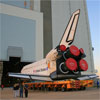
|
 |

Additional coverage for subscribers:
 VIDEO:
DISCOVERY HOISTED FOR ATTACHMENT TO FUEL TANK PLAY VIDEO:
DISCOVERY HOISTED FOR ATTACHMENT TO FUEL TANK PLAY
 VIDEO:
THE SHUTTLE MOVES TO THE VEHICLE ASSEMBLY BUILDING PLAY VIDEO:
THE SHUTTLE MOVES TO THE VEHICLE ASSEMBLY BUILDING PLAY
 SUBSCRIBE NOW SUBSCRIBE NOW

|
OTHER HEADLINES Additional stories today
|
 |
Chinese data relay spacecraft put into orbit -- China launched a data relay satellite Friday to serve as a communications link between ground controllers and the country's next human space mission later this year.
|
 |
Plan to identify watery Earth-like planets develops
Astronomers are looking to identify Earth-like watery worlds circling distant stars from a glint of light seen through an optical space telescope and a mathematical method developed by researchers at Penn State and the University of Hawaii.
 FULL STORY FULL STORY
 |  |

|
 |
Unlocking the secrets of a massive black hole
The mechanism by which black holes expel powerful jets of particles at nearly the speed of light has long been speculated, but thanks to new observations of a blazar in action, these theories can now be substantiated.
 FULL STORY FULL STORY
 |  |

|
 |
Shoulder motor balks on Opportunity rover's arm
A small motor in the robotic arm of NASA's Mars Exploration Rover Opportunity that began stalling occasionally more than two years ago has become more troublesome recently.
 FULL STORY FULL STORY
 |  |

|
 |
Plethora of wild galaxies on Hubble's birthday
Today, in celebration of the Hubble Space Telescope's 18th launch anniversary, 59 views of colliding galaxies constitute the largest collection of Hubble images ever released to the public. This new Hubble atlas dramatically illustrates how galaxy collisions produce a remarkable variety of intricate structures in never-before-seen detail.
 FULL STORY FULL STORY
 VIDEO: HUBBLE LAUNCH COVERAGE VIDEO: HUBBLE LAUNCH COVERAGE
 VIDEO: CREW MOVIE VIDEO: CREW MOVIE
 |  |
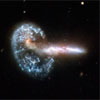
|
 |
Lunar mapper will lead NASA's return to the moon
A robotic precursor of resuming human expeditions to the moon will likely be postponed by at least a few weeks from its October launch target, but NASA does not foresee any problems launching the lunar orbiter and high-speed impactor before the end of this year.
 FULL STORY FULL STORY
 LAUNCH WINDOW CHART LAUNCH WINDOW CHART
 |  |

|
 |
Crashing into the moon in search of frozen water
Relying on heritage technology derived from parts on previous space missions, a spacecraft on a budget will guide a spent rocket stage on a collision course with the moon early next year to search for signs of permanently frozen water hidden inside craters near the lunar poles.
 FULL STORY FULL STORY
 |  |

|
 |
Possible Soyuz separation problem under scrutiny
The Russian Soyuz TMA-11 spacecraft that carried two space station crew members and a South Korean guest cosmonaut back to Earth Saturday may have started its fiery re-entry with a normally discarded propulsion module still attached officials said Tuesday, putting the craft in an unusual orientation and subjecting the returning space fliers to higher than normal stresses and buffeting.
 FULL STORY - updated with Whitson quotes FULL STORY - updated with Whitson quotes
 VIDEO: EXPEDITION 16 COVERAGE VIDEO: EXPEDITION 16 COVERAGE
 |  |
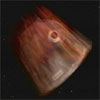
|
 |
Mars radar sounding opens up planet's third dimension
The European Space Agency's Mars Express radar sounder, MARSIS, has looked beneath the martian surface and opened up the third dimension for planetary exploration. The technique's success is prompting scientists to think of all the other places in the Solar System where they would like to use radar sounders.
 FULL STORY FULL STORY
 |  |
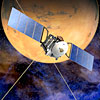
|
 |
Cause of last month's Proton failure determined
The Russian State Commission investigating the AMC-14 failure of a Proton Breeze M launch has traced the cause to the rupture of the gas duct between the gas generator and the propellant pump turbine in the Breeze M main engine.
 FULL STORY FULL STORY
 |  |

|
 |
Station crew OK after Soyuz lands short of target
The Soyuz capsule ferrying space station commander Peggy Whitson, Yuri Malenchenko and South Korean guest cosmonaut So-Yeon Yi back to Earth Saturday made a steeper-than-planned descent, landing nearly 300 miles from the targeted site in Kazakhstan.
 FULL STORY FULL STORY
 |  |

|
 |
First satellite for Vietnam, another for Brazil launched
Continuing what is supposed to be a banner year with an unprecedented flight rate, the commercial Ariane 5 rocket launched again Friday night, lofting a Brazilian broadcast satellite and Vietnam's first communications spacecraft.
 FULL STORY FULL STORY
 OUR ARIANE ARCHIVE OUR ARIANE ARCHIVE
 |  |

|
 |
Solar flares set the Sun quaking, satellite shows
Data from the ESA/NASA spacecraft SOHO shows clearly that powerful starquakes ripple around the Sun in the wake of mighty solar flares that explode above its surface. The observations give solar physicists new insight into a long-running solar mystery and may even provide a way of studying other stars.
 FULL STORY FULL STORY
 |  |

|
 |
Additional launch photos from Atlas 5 flight
More spectacular images have been posted showing the Atlas 5 rocket blasting off Monday afternoon carrying the commercial ICO G1 mobile communications satellite.
 IMAGES: MORE LAUNCH PHOTOS IMAGES: MORE LAUNCH PHOTOS
 |  |

|
 |
Stellar birth observed in the galactic wilderness
A new image from NASA's Galaxy Evolution Explorer shows baby stars sprouting in the backwoods of a galaxy -- a relatively desolate region of space more than 100,000 light-years from the galaxy's bustling center.
 FULL STORY FULL STORY
 |  |
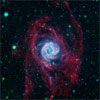
|
 |
Satellite launched to predict communication outages
An experimental Air Force satellite designed to monitor the Earth's ionosphere and foresee impending communication disruptions was successfully deployed into space Wednesday by an Orbital Sciences air-launched Pegasus rocket.
 FULL STORY FULL STORY
 |  |

|
 |
Controllers working to keep Ulysses sun orbiter alive
Scientists continue to extract bits of data trickling to Earth from the Ulysses solar probe as ground controllers employ new strategies to extend the life of the 17-year-old spacecraft, including a "long shot" plan to put the observatory in hibernation until the sun's activity reaches its
next peak in 2013.
 FULL STORY FULL STORY
 |  |

|
 |
The drifting star
By examining the "ringing" of a planet-harboring star, a team of astronomers has shown that it has drifted away from its original birthplace, providing important information about the dynamics of our Milky Way and theories of star and planet formation.
 FULL STORY FULL STORY
 |  |

|
 |
The coolest brown dwarf
An international team of astronomers has discovered the coldest brown dwarf ever observed, bringing scientists one step closer to bridging the gap between stars and planets.
 FULL STORY FULL STORY
 |  |

|
 |
Atlas 5 rocket puts up mobile services satellite
Thundering out of Cape Canaveral on its first commercial flight in two years and carrying its heaviest payload ever, an Atlas 5 rocket on Monday afternoon successfully launched a mobile communications satellite to assist and entertain Americans on the go.
 FULL STORY FULL STORY
 MISSION STATUS CENTER - live updates! MISSION STATUS CENTER - live updates!
 LAUNCH EVENTS TIMELINE LAUNCH EVENTS TIMELINE
 GROUND TRACK MAP GROUND TRACK MAP
 IMAGES: LAUNCH AS SEEN FROM PAD CAMERAS IMAGES: LAUNCH AS SEEN FROM PAD CAMERAS
 IMAGES: LAUNCH AS SEEN FROM PRESS SITE IMAGES: LAUNCH AS SEEN FROM PRESS SITE
 IMAGES: SUNDAY'S ROLLOUT TO LAUNCH PAD IMAGES: SUNDAY'S ROLLOUT TO LAUNCH PAD
 IMAGES: ROCKET ASSEMBLY PHOTOS IMAGES: ROCKET ASSEMBLY PHOTOS
 IMAGES: ICO G1 SATELLITE IMAGES: ICO G1 SATELLITE
 |  |

|
 |

Additional coverage for subscribers:
 VIDEO:
ATLAS 5 LAUNCHES ICO G1 AS SEEN FROM PRESS SITE PLAY VIDEO:
ATLAS 5 LAUNCHES ICO G1 AS SEEN FROM PRESS SITE PLAY
 VIDEO:
SPECTATORS AT PRESS SITE VIEW THE LAUNCH PLAY VIDEO:
SPECTATORS AT PRESS SITE VIEW THE LAUNCH PLAY
 VIDEO:
WIDE VIEW OF LAUNCH PLAY VIDEO:
WIDE VIEW OF LAUNCH PLAY
 SUBSCRIBE NOW SUBSCRIBE NOW

|
Milky Way's giant black hole awoke 300 years ago
A team of Japanese astronomers using NASA, ESA and Japanese X-ray satellites has discovered that our galaxy's central black hole let loose a powerful flare three centuries ago.
 FULL STORY FULL STORY
 |  |
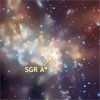
|
 |
NASA extends Cassini's grand tour of Saturn
NASA is extending the international Cassini-Huygens mission by two years. The historic spacecraft's stunning discoveries and images have revolutionized our knowledge of Saturn and its moons.
 FULL STORY FULL STORY
 |  |

|
 |
No hope of saving wayward DISH Network satellite
The owners of a television broadcasting satellite stranded in a lower-than-planned orbit during last month's failed Proton rocket launch announced Friday they have declared the craft a total loss.
 FULL STORY FULL STORY
 |  |

|
 |
Mars-bound spacecraft fine turns course for landing
NASA engineers have adjusted the flight path of the Phoenix Mars Lander, setting the spacecraft on course for its May 25 landing on the Red Planet. It was the first trajectory maneuver targeting a specific location in the northern polar region for the touchdown.
 FULL STORY FULL STORY
 |  |

|
 |
Hubble pinpoints record-breaking explosion
Peering across 7.5 billion light-years and halfway back to the Big Bang, NASA's Hubble Space Telescope has photographed the fading optical counterpart of a powerful gamma ray burst that holds the record for being the intrinsically brightest naked-eye object ever seen from Earth. For nearly a minute this single star was as bright as 10 million galaxies.
 FULL STORY FULL STORY
 |  |
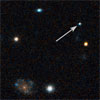
|
 |
Delta 4-Heavy rocket on the pad for late July blastoff
Preparations for the next launch of America's largest unmanned rocket are underway at Cape Canaveral's Complex 37 following the recent rollout of the Delta 4-Heavy vehicle from its assembly hangar.
 FULL STORY FULL STORY
 PANORAMAS: INSIDE THE DELTA HANGAR PANORAMAS: INSIDE THE DELTA HANGAR
 IMAGES: ROCKET READIED TO MOVE IMAGES: ROCKET READIED TO MOVE
 IMAGES: ROLLOUT TO LAUNCH PAD IMAGES: ROLLOUT TO LAUNCH PAD
 IMAGES: ROCKET RAISED UPRIGHT IMAGES: ROCKET RAISED UPRIGHT
 |  |
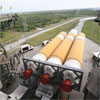
|
 |
New crew arrives at station after smooth docking
Commander Sergei Volkov, son of a famed Russian cosmonaut, deftly guided the Soyuz TMA-12 spacecraft to a successful docking with the international space station Thursday to complete a two-day chase that started with blastoff Tuesday from the Baikonur Cosmodrome in Kazakhstan.
 FULL STORY FULL STORY
 MISSION STATUS CENTER MISSION STATUS CENTER
 |  |

|
 |
Spacecraft images Mars moon in color and in 3D
A new stereo view of Phobos, the larger and inner of Mars' two tiny moons, has been captured by NASA's Mars Reconnaissance Orbiter spacecraft.
 FULL STORY FULL STORY
 |  |
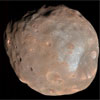
|
 |
NASA sets sights on lunar dust exploration mission
NASA is preparing to send a small spacecraft to the moon in 2011 to assess the lunar atmosphere and the nature of dust lofted above the surface.
 FULL STORY FULL STORY
 |  |

|
 |
New laser technology could find first Earth-like planets
The leading method of finding planets orbiting distant stars spots mostly Jupiter-sized worlds. Technology limitations make it difficult to detect smaller planets. But that is about to change.
 FULL STORY FULL STORY
 |  |

|
 |
Station's next resident crew launches into orbit
Two rookie Russian cosmonauts and South Korea's first astronaut rocketed into space Tuesday, riding aboard a Soyuz capsule in pursuit of the international space station. Liftoff from Baikonur Cosmodrome in Kazakhstan occurred on schedule at 7:16 a.m. EDT (1116 GMT).
 FULL STORY FULL STORY
 MISSION STATUS CENTER MISSION STATUS CENTER
 |  |
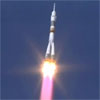
|
 |

Additional coverage for subscribers:
 VIDEO:
FULL LENGTH EXPEDITION 17 LAUNCH MOVIE PLAY VIDEO:
FULL LENGTH EXPEDITION 17 LAUNCH MOVIE PLAY
 VIDEO:
LAUNCH OF EXPEDITION 17 ABOARD THE SOYUZ ROCKET PLAY VIDEO:
LAUNCH OF EXPEDITION 17 ABOARD THE SOYUZ ROCKET PLAY
 VIDEO:
HIGHLIGHTS OF CREW'S LAUNCH DAY PREPS PLAY VIDEO:
HIGHLIGHTS OF CREW'S LAUNCH DAY PREPS PLAY

 VIDEO:
VIEW OF PROGRESS 28P'S REENTRY ON MONDAY PLAY VIDEO:
VIEW OF PROGRESS 28P'S REENTRY ON MONDAY PLAY
 VIDEO:
PROGRESS 28P SUPPLY SHIP UNDOCKS FROM STATION PLAY VIDEO:
PROGRESS 28P SUPPLY SHIP UNDOCKS FROM STATION PLAY

 VIDEO:
GANTRY TOWERS ENCLOSE SOYUZ ROCKET AT THE PAD PLAY VIDEO:
GANTRY TOWERS ENCLOSE SOYUZ ROCKET AT THE PAD PLAY
 VIDEO:
SOYUZ ROCKET ROLLED OUT TO BAIKONUR LAUNCH PAD PLAY VIDEO:
SOYUZ ROCKET ROLLED OUT TO BAIKONUR LAUNCH PAD PLAY
 VIDEO:
ASSEMBLY OF THE SOYUZ LAUNCH VEHICLE COMPLETED PLAY VIDEO:
ASSEMBLY OF THE SOYUZ LAUNCH VEHICLE COMPLETED PLAY
 VIDEO:
CREW'S ACTIVITIES AT BAIKONUR PART 1 | PART 2 | PART 3 VIDEO:
CREW'S ACTIVITIES AT BAIKONUR PART 1 | PART 2 | PART 3
 VIDEO:
EXPEDITION 17 MISSION PREVIEW BRIEFING PLAY VIDEO:
EXPEDITION 17 MISSION PREVIEW BRIEFING PLAY
 VIDEO:
EXPEDITION 17 CREW PRE-FLIGHT NEWS BRIEFING PLAY VIDEO:
EXPEDITION 17 CREW PRE-FLIGHT NEWS BRIEFING PLAY
 SUBSCRIBE NOW SUBSCRIBE NOW

|
Laplace & Tandem vie for Cosmic Visions top-spot
Two missions to the outer Solar System, Laplace (Europa and Jupiter Mission) and Tandem (Titan and Enceladus Mission), are competing against each other for selection later this year; Emily Baldwin summarises the key goals of each ambitious mission.
 FULL STORY FULL STORY
 |  |

|
 |
Craft reboots the search for active volcanoes on Venus
ESA's Venus Express has measured a highly variable quantity of the volcanic gas sulphur dioxide in the atmosphere of Venus. Scientists must now decide whether this is evidence for active volcanoes on Venus, or linked to a hitherto unknown mechanism affecting the upper atmosphere.
 FULL STORY FULL STORY
 |  |
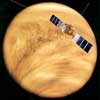
|
 |
Hubble sees exploding star
The latest image from the Hubble Space Telescope reveals a sharp view of the spiral galaxy NGC 2397. This image also shows a rare Hubble view of the late stages of a supernova - SN 2006bc, discovered in March 2006.
 FULL STORY FULL STORY
 |  |

|
 |
'Focused' solar flares get millions of degrees hotter
A NASA-funded researcher has discovered that solar flares -- explosions in the atmosphere of the sun -- get much hotter when they stay "focused" and devote all their energy to heating, allowing them to become millions of degrees hotter.
 FULL STORY FULL STORY
 |  |

|
 |
Black hole found in enigmatic Omega Centauri
Omega Centauri has been known as an unusual globular cluster for a long time. A new result obtained by the Hubble Space Telescope and the Gemini Observatory reveals that the explanation behind Omega Centauri's peculiarities may be a black hole hidden in its center. One implication of the discovery is that it is very likely that Omega Centauri is not a globular cluster at all.
 FULL STORY FULL STORY
 |  |

|
 |
New cargo freighter safely docks to space station
Europe's Jules Verne spaceship glided into port at the international space station Thursday, delivering more than 10,000 pounds of supplies to the complex and completing nearly a month of testing to prove the craft's revolutionary navigation system worked.
 FULL STORY - updated FULL STORY - updated
 PREVIEW STORY PREVIEW STORY
 DOCKING TIMELINE DOCKING TIMELINE
 |  |
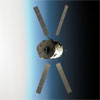
|
 |

Additional coverage for subscribers:
 VIDEO:
NARRATED PREVIEW OF THE RENDEZVOUS AND DOCKING PLAY VIDEO:
NARRATED PREVIEW OF THE RENDEZVOUS AND DOCKING PLAY
 VIDEO:
RENDEZVOUS BRINGS SHIP TO POINT 820 FEET AWAY PLAY VIDEO:
RENDEZVOUS BRINGS SHIP TO POINT 820 FEET AWAY PLAY
 VIDEO:
JULES VERNE APPROACHES TO 62 FEET FROM STATION PLAY VIDEO:
JULES VERNE APPROACHES TO 62 FEET FROM STATION PLAY
 VIDEO:
FREIGHTER FLIES TO FINAL HOLD POINT AT 36 FEET PLAY VIDEO:
FREIGHTER FLIES TO FINAL HOLD POINT AT 36 FEET PLAY
 VIDEO:
SPACECRAFT SUCCESSFULLY DOCKS TO SPACE STATION PLAY VIDEO:
SPACECRAFT SUCCESSFULLY DOCKS TO SPACE STATION PLAY
 VIDEO:
POST-DOCKING NEWS CONFERENCE FROM HOUSTON PLAY VIDEO:
POST-DOCKING NEWS CONFERENCE FROM HOUSTON PLAY
 MORE:
VIDEO COVERAGE OF JULES VERNE MORE:
VIDEO COVERAGE OF JULES VERNE
 SUBSCRIBE NOW SUBSCRIBE NOW

|
Next GPS satellite arrives at Florida spaceport for launch
The penultimate satellite in the current generation of Global Positioning System spacecraft was airborne Thursday morning, jetting from its Lockheed Martin factory in Pennsylvania to the Florida launch site.
 FULL STORY FULL STORY
 |  |

|
 |
Meteor showers observed in the Martian atmosphere
A storm of shooting stars has, for the first time, been detected in the Martian atmosphere by a team of scientists based at the Armagh Observatory using data from the Mars Global Surveyor probe.
 FULL STORY FULL STORY
 |  |

|
 |
Spinning stars make astronomers dizzy
Fast spinning, massive stars have shown that the way in which gases are mixed inside them isn't as simple as had been assumed, according to a new study involving the Very Large Telescope at the European Southern Observatory in Chile, and presented at the RAS National Astronomy Meeting.
 FULL STORY FULL STORY
 |  |

|
 |
Embryonic planet imaged around young star
The youngest planet ever to be seen has been captured in its earliest stage of formation in a disc of gas and rocky debris around a star 520 light years away.
 FULL STORY FULL STORY
 |  |

|
 |
10 new planets discovered outside our solar system
An international team of astronomers has found 10 new "extra solar" planets, planets that orbit stars other than our sun. The team used a system of robotic cameras that yield a great deal of information about these other worlds, some of which are quite exotic.
 FULL STORY FULL STORY
 |  |

|
 |
NASA scientists identify smallest known black hole
Using a new technique, two NASA scientists have identified the lightest known black hole. With a mass only about 3.8 times greater than our Sun and a diameter of only about 15 miles, the black hole lies very close to the minimum size predicted for black holes that originate from dying stars.
 FULL STORY FULL STORY
 |  |

|
 |
Two new star systems are first of their kind ever found
Astronomers have spied a faraway star system that is so unusual, it was one of a kind -- until its discovery helped them pinpoint a second one that was much closer to home.
 FULL STORY FULL STORY
 |  |

|
 |
|
Read our earlier news archive page.
|



